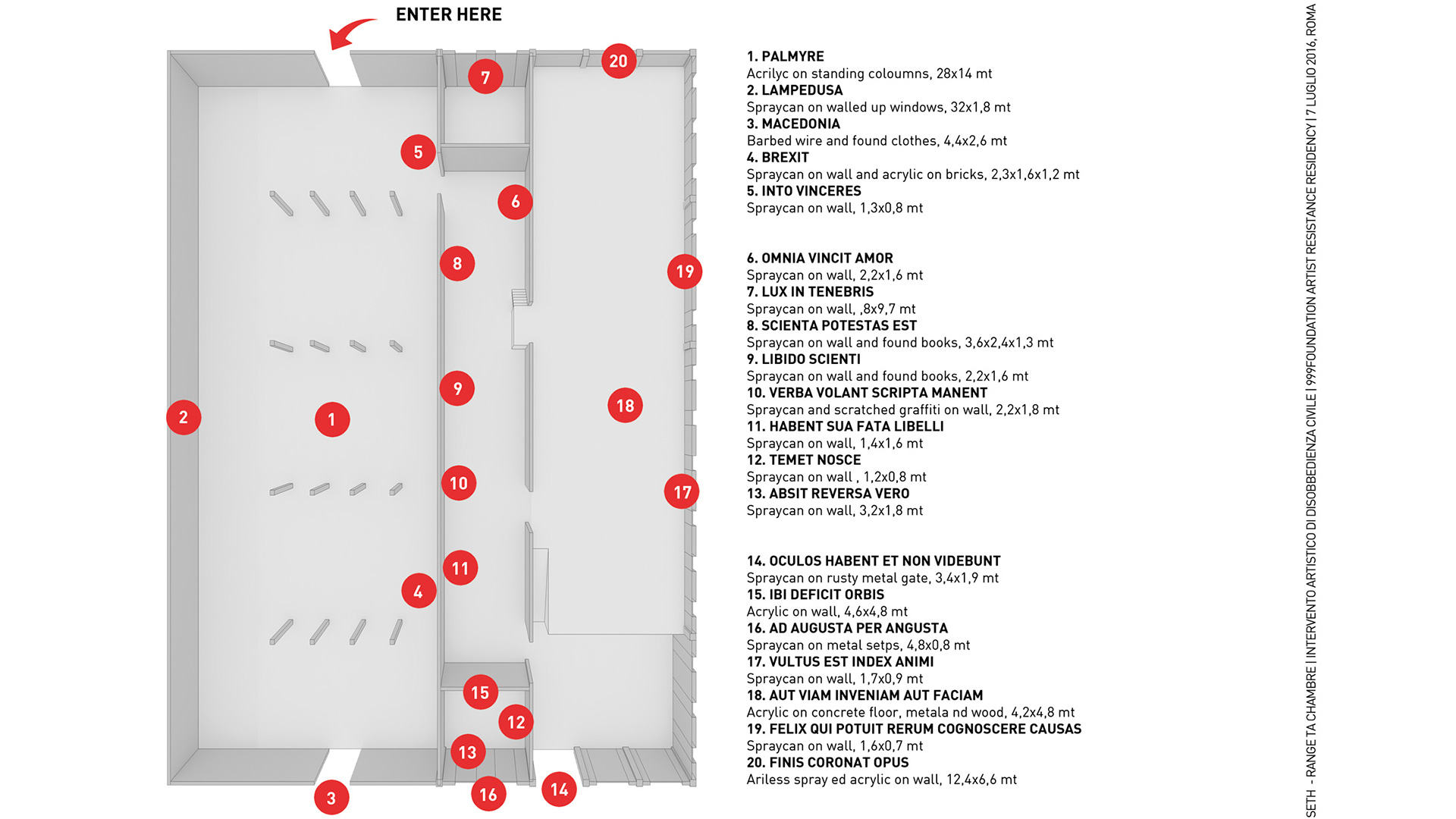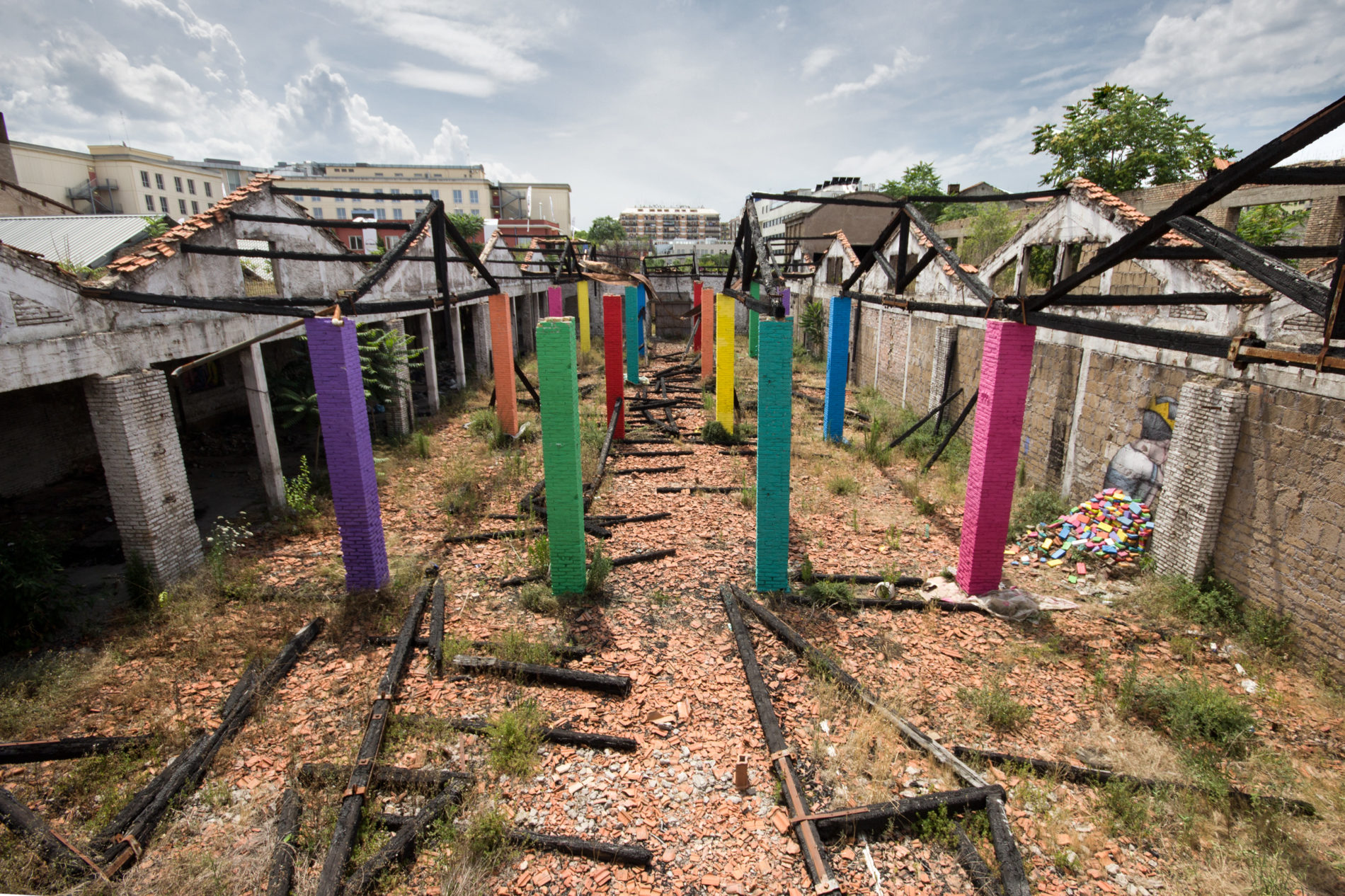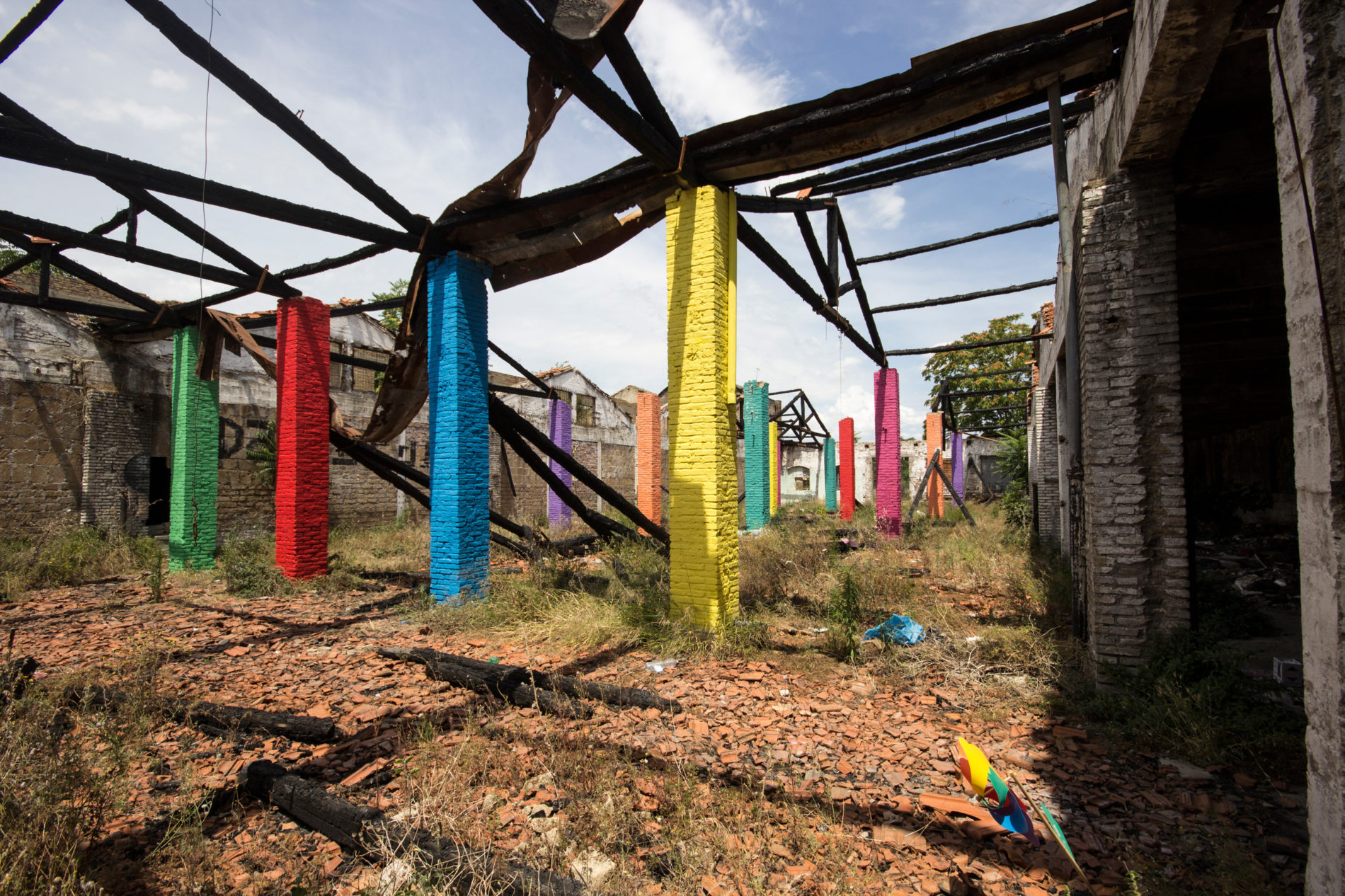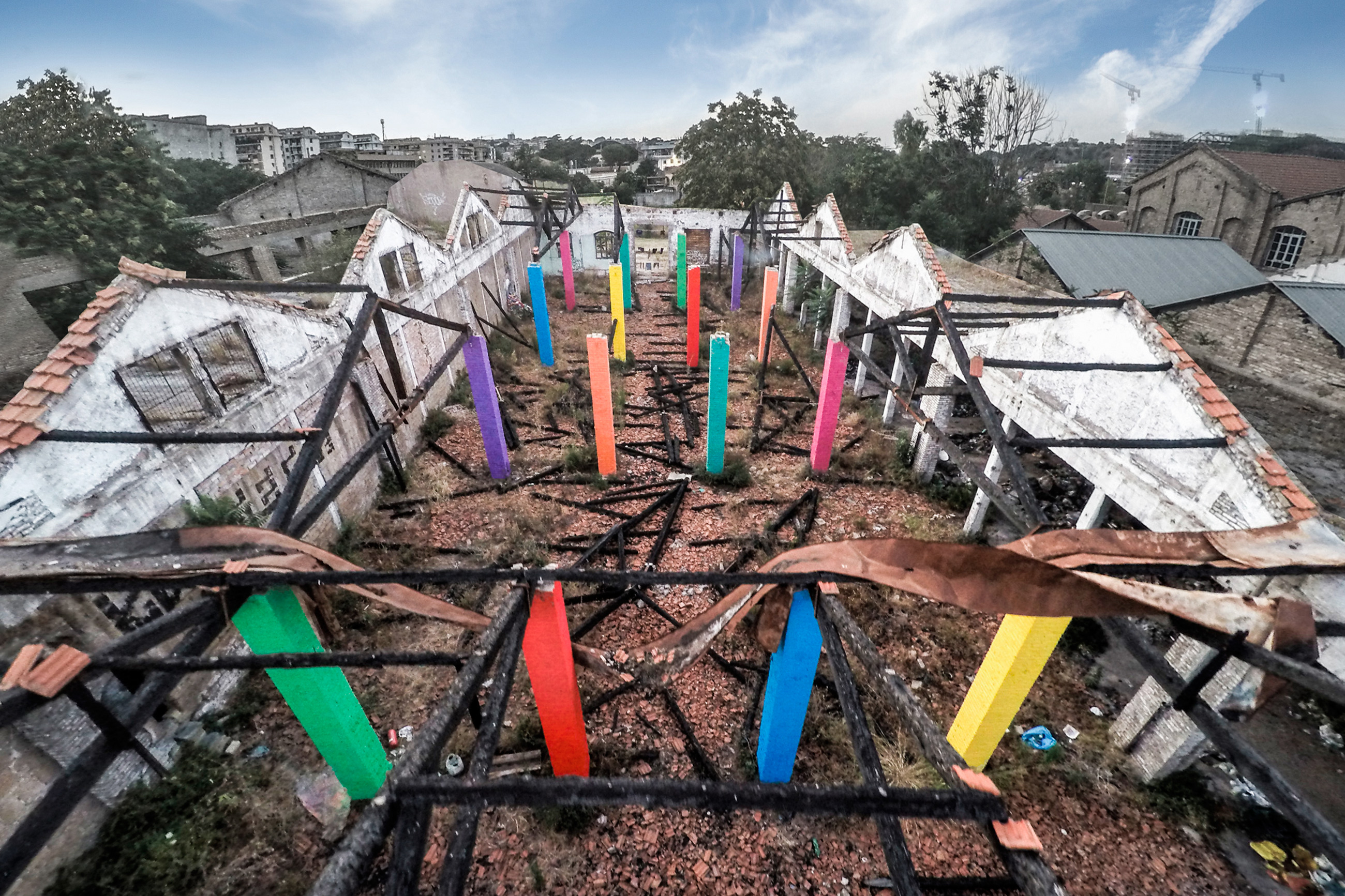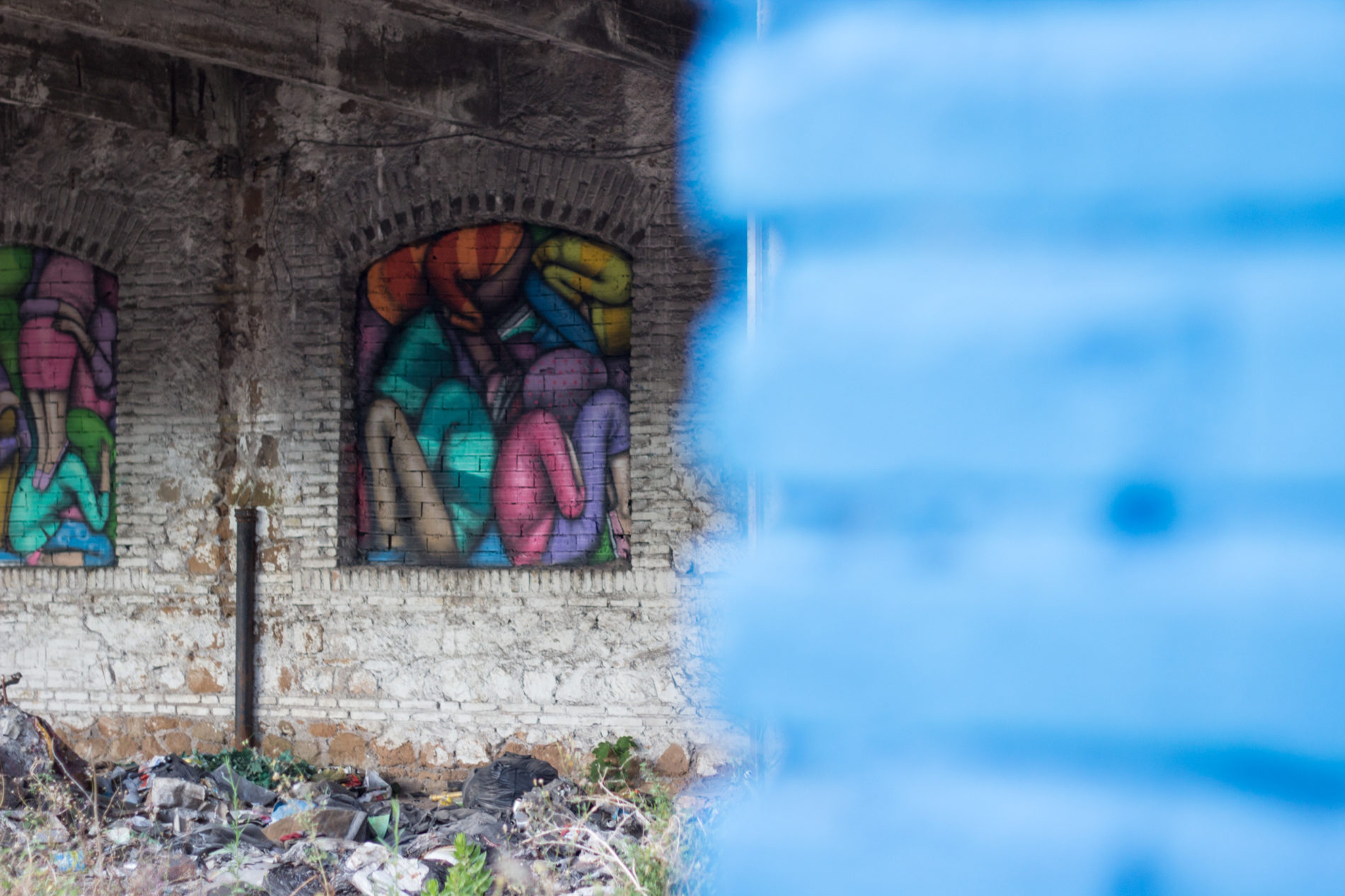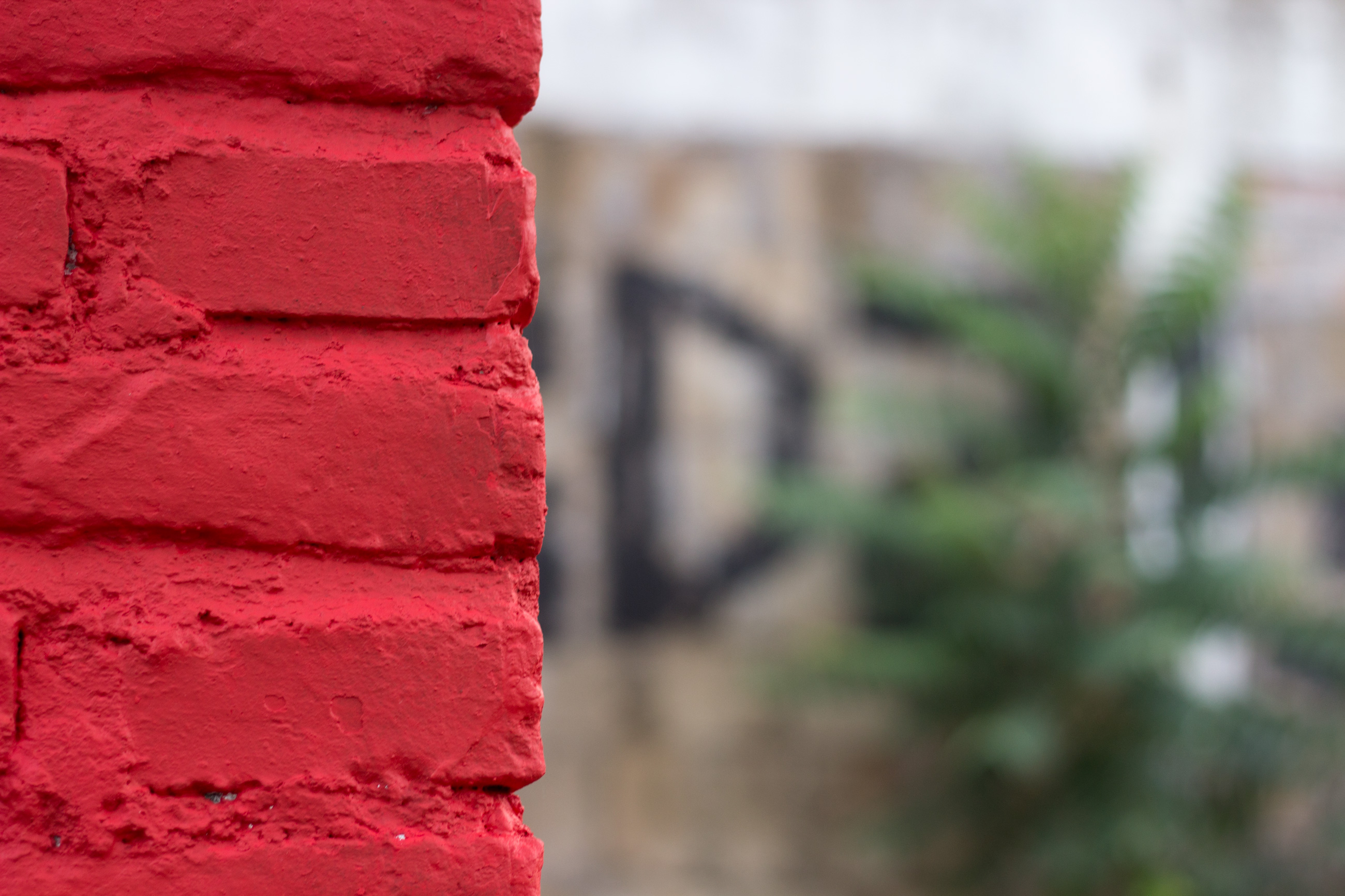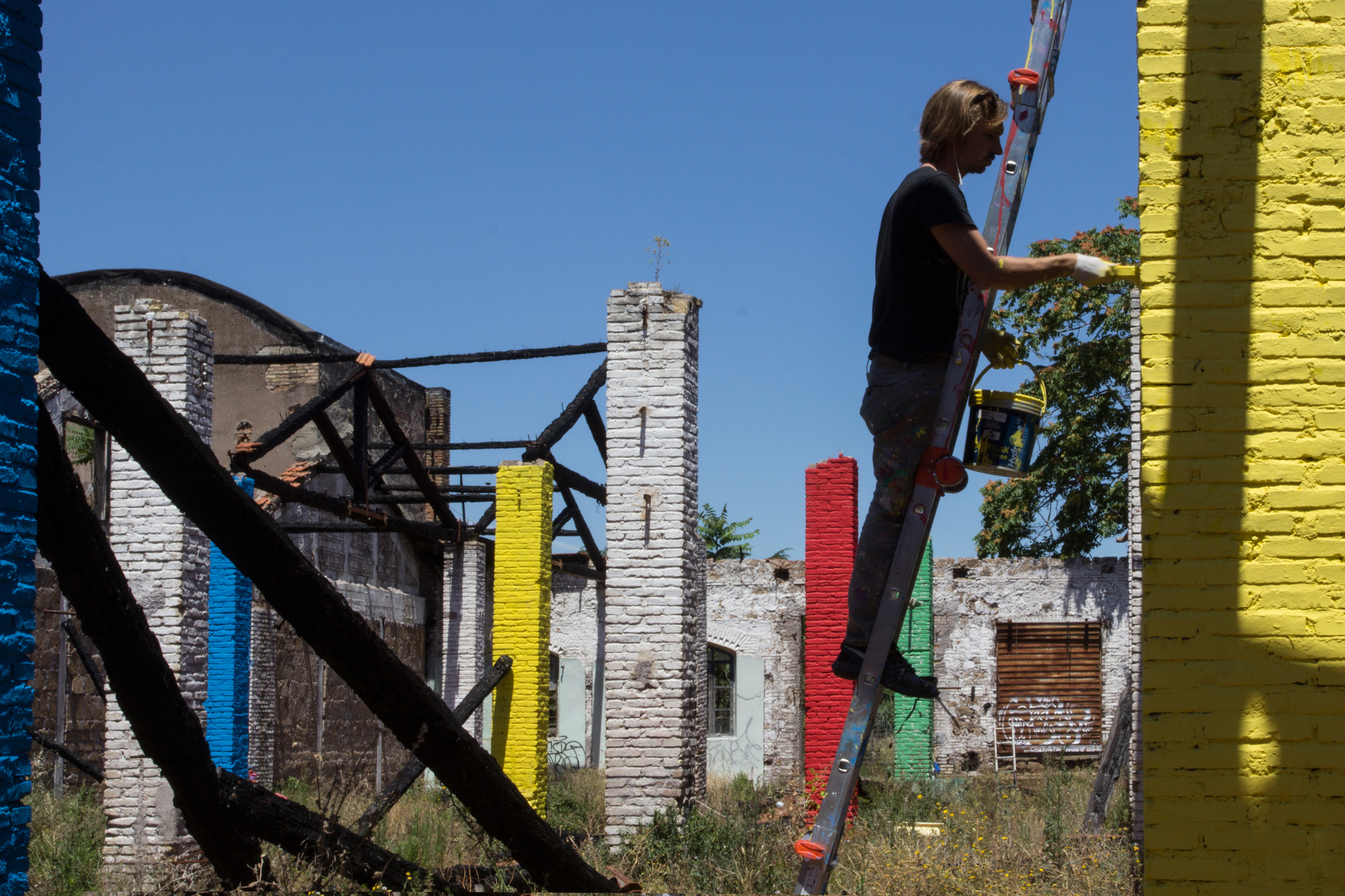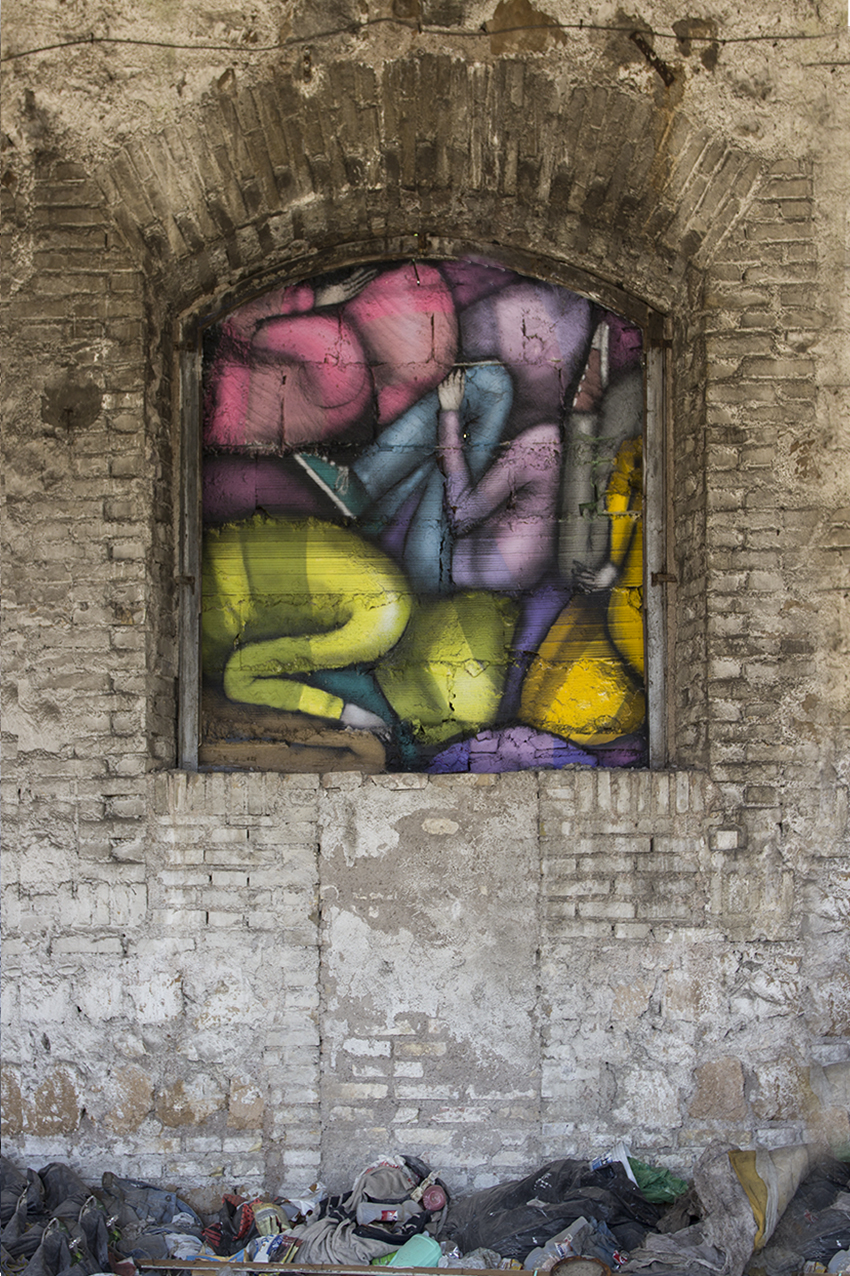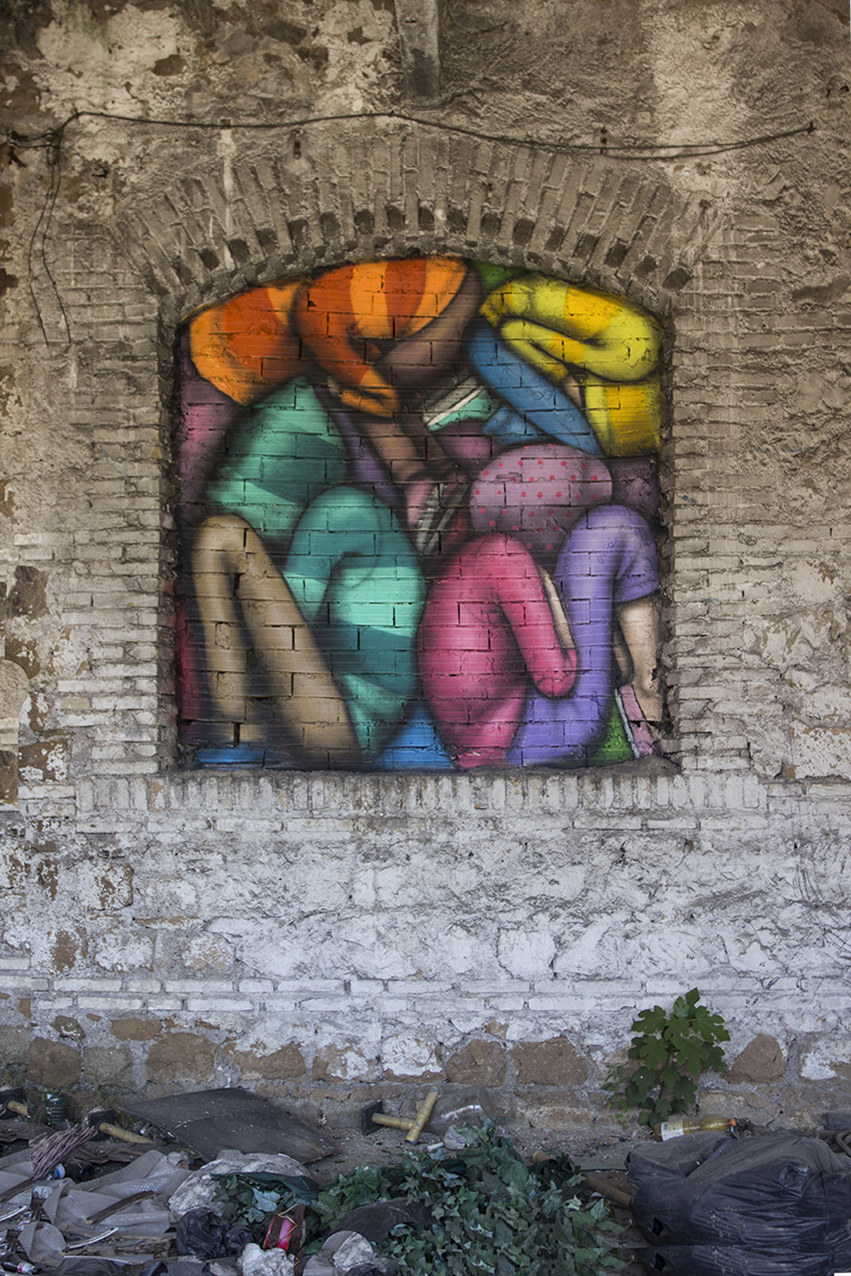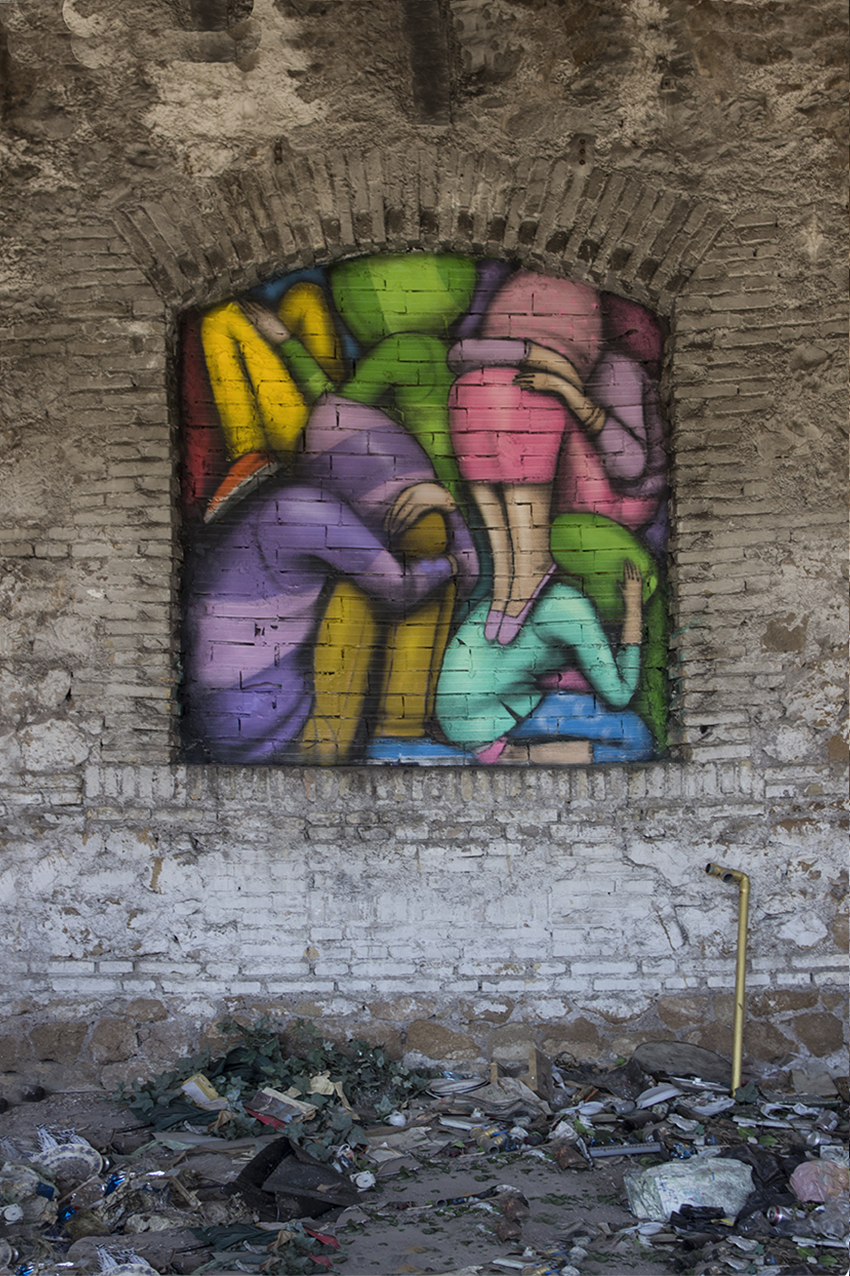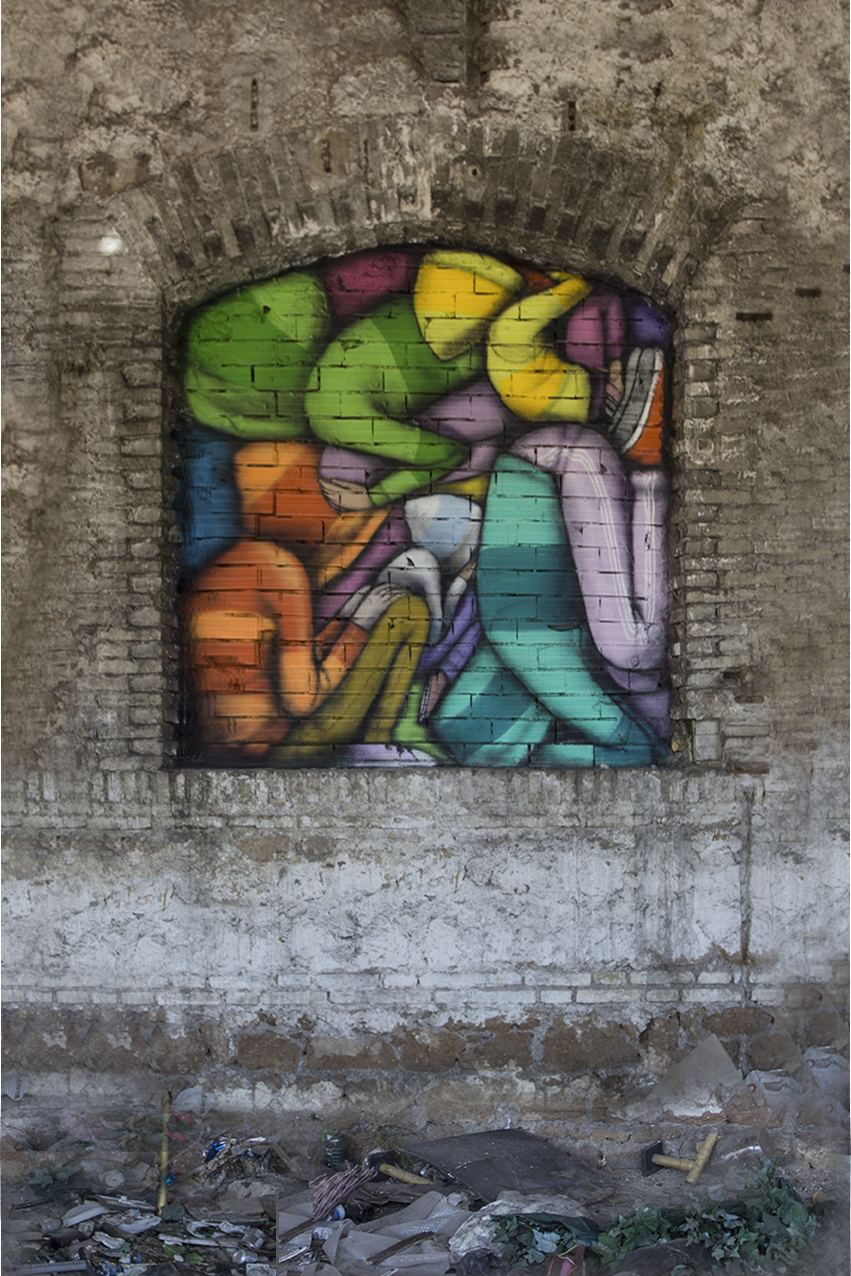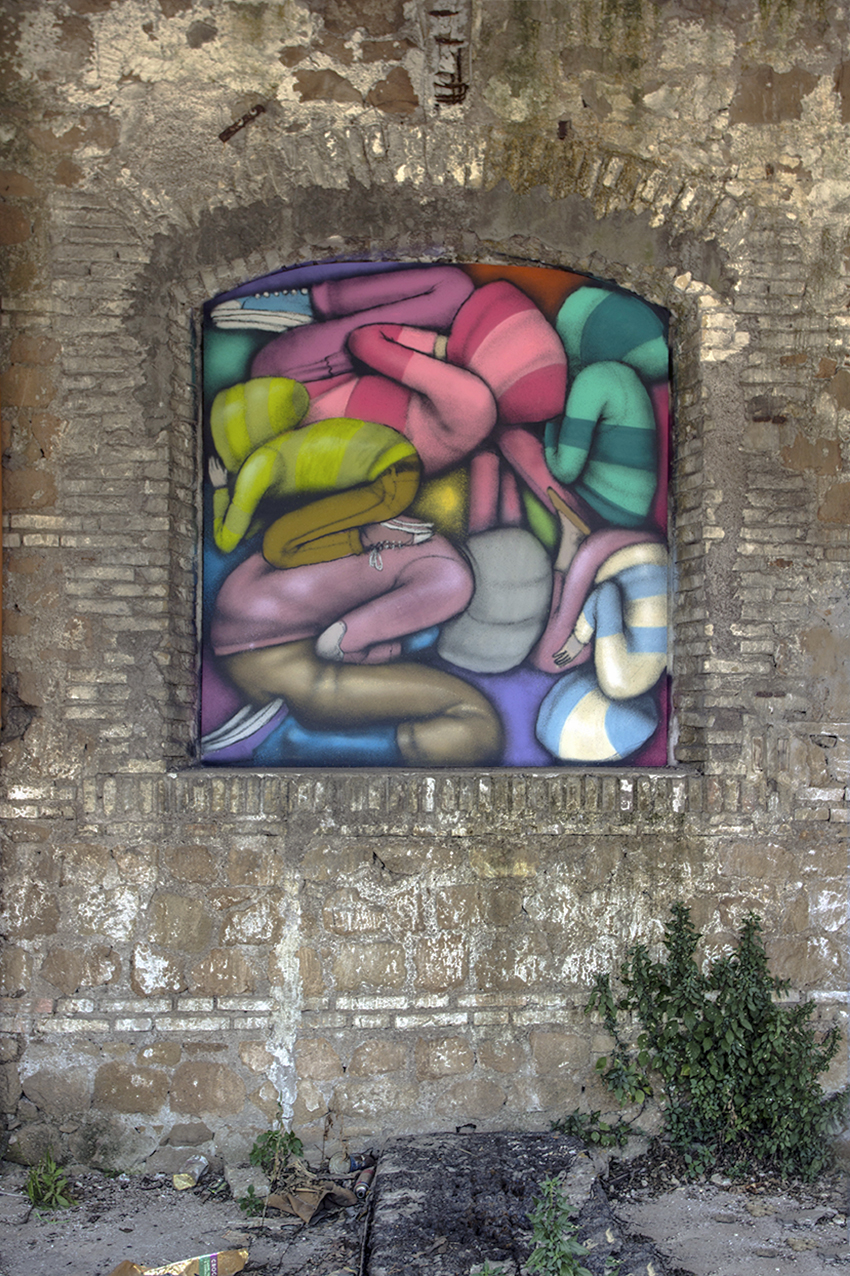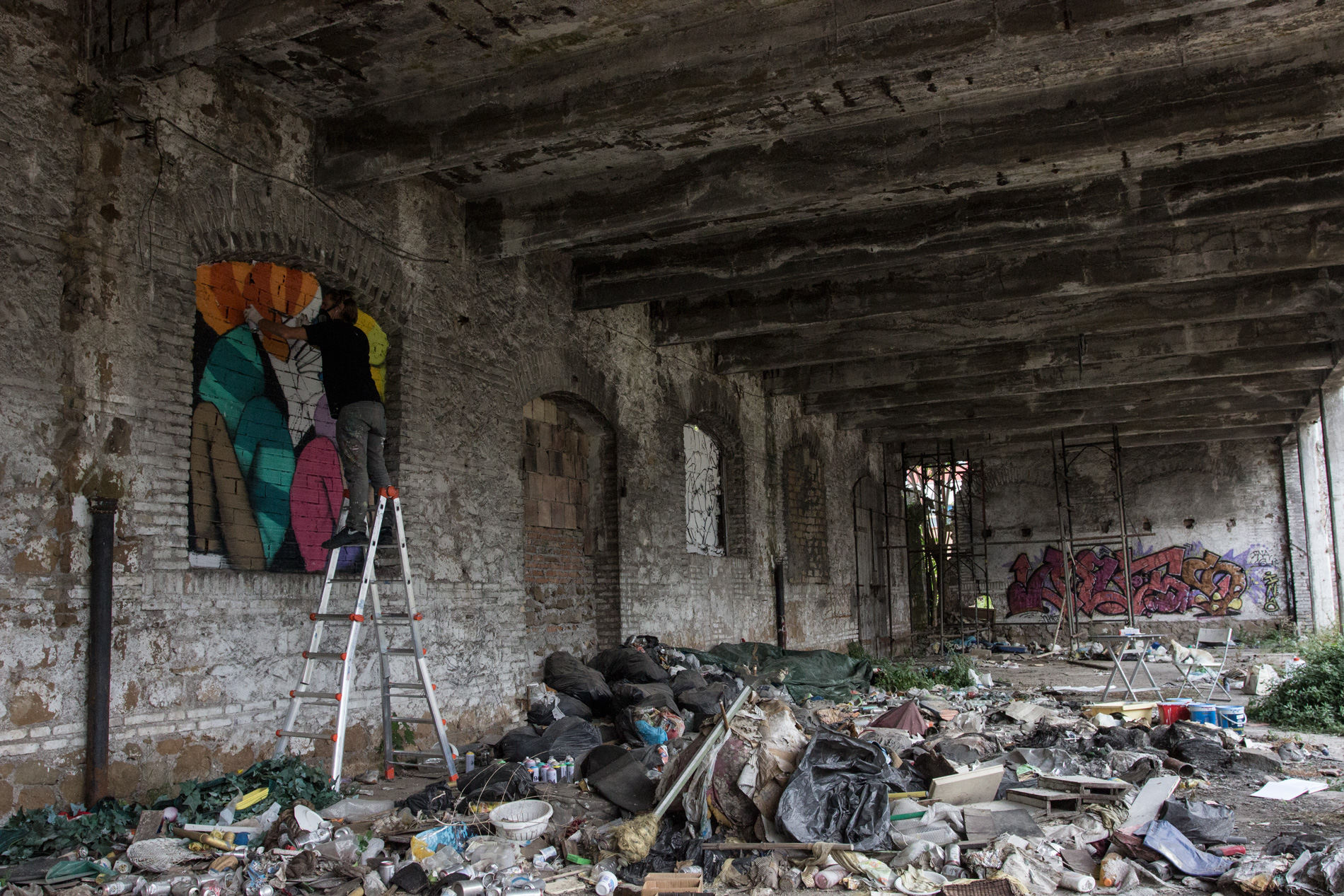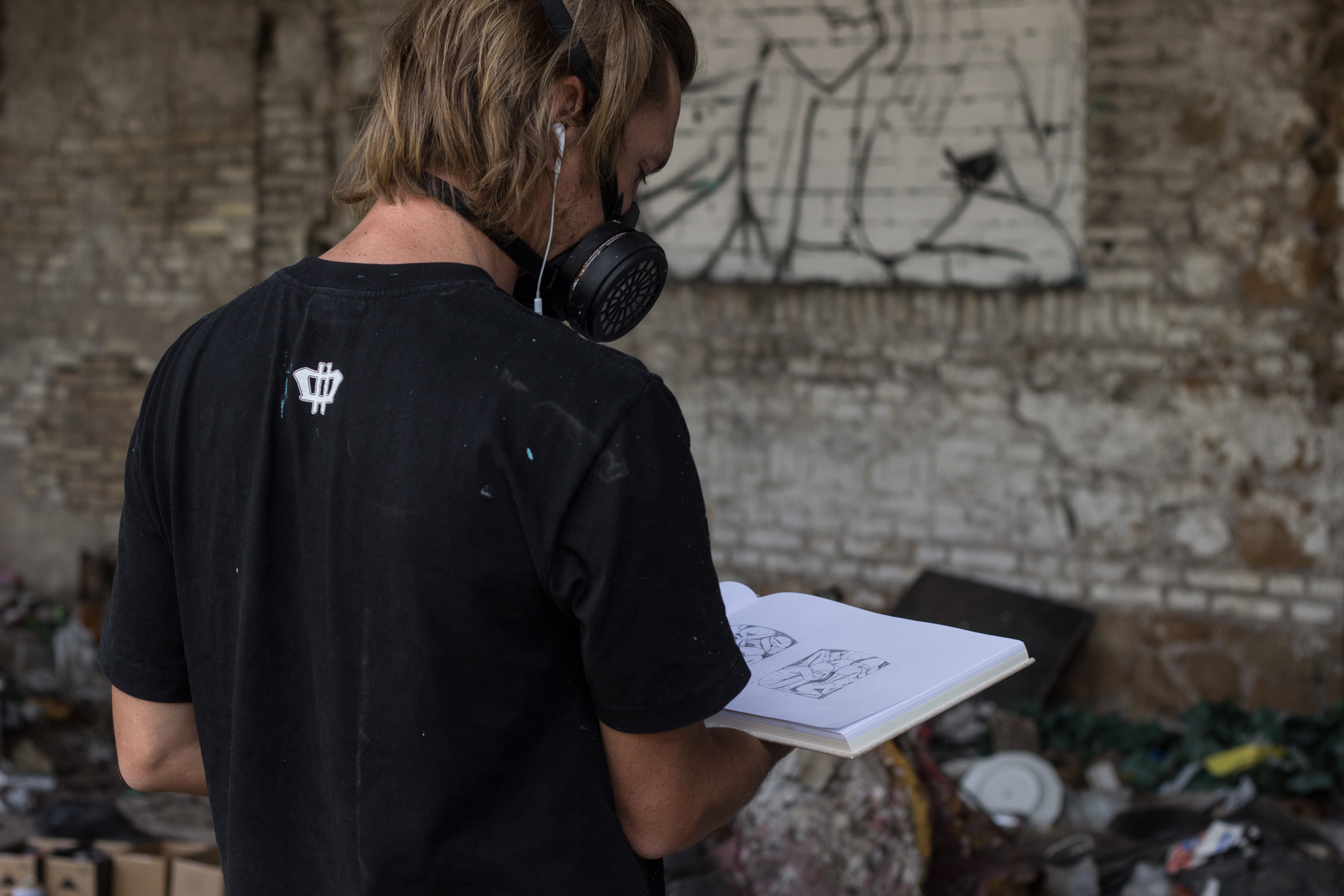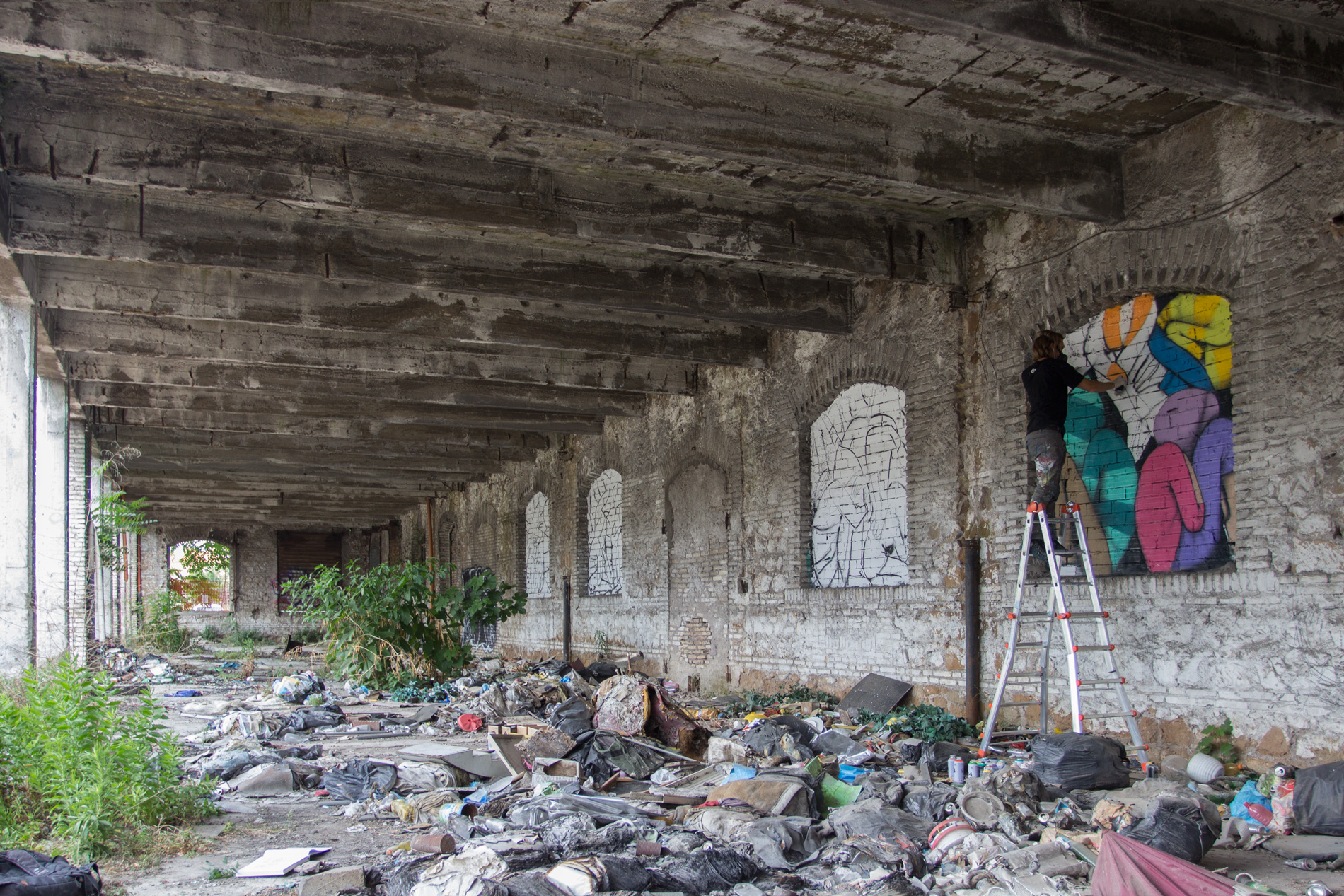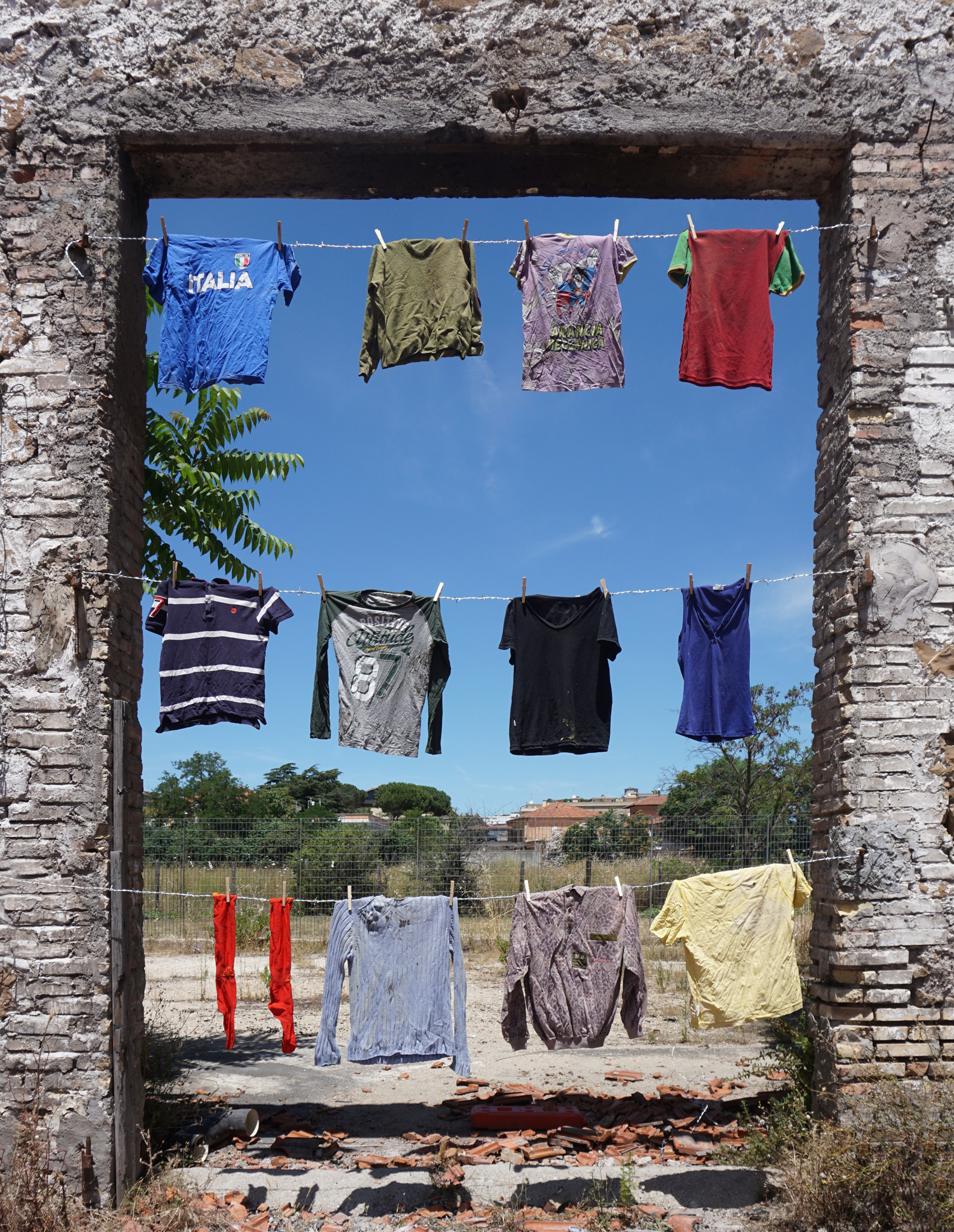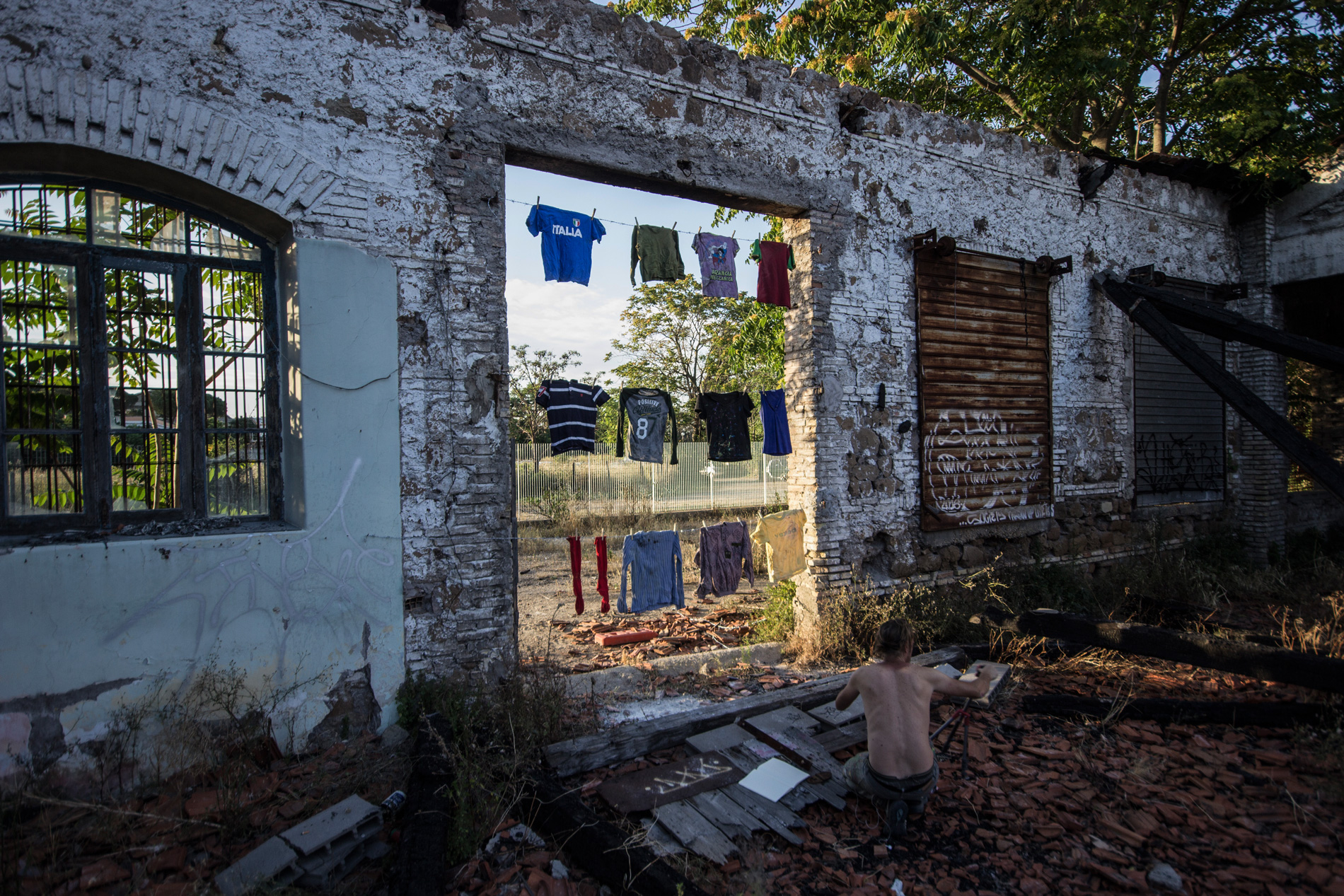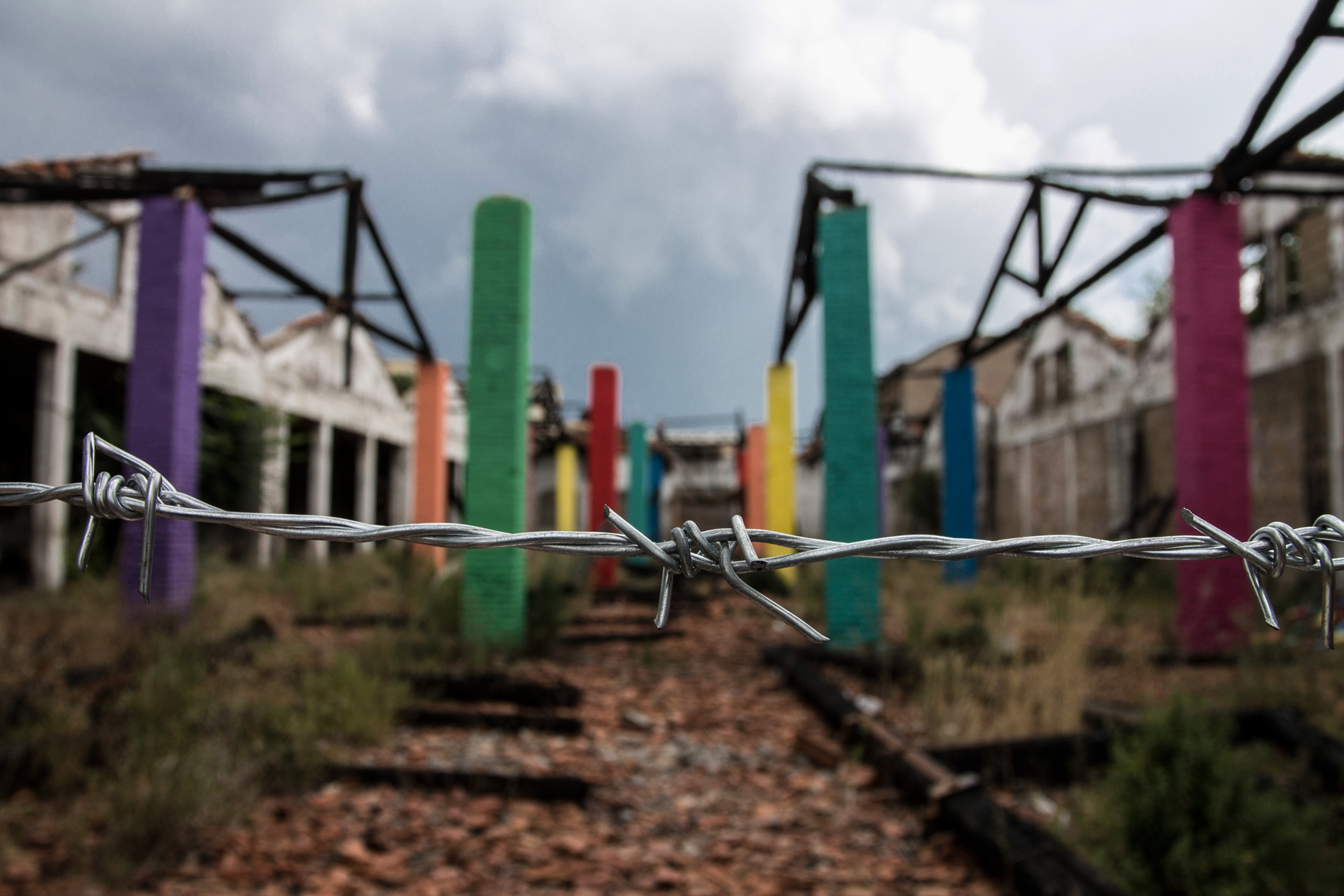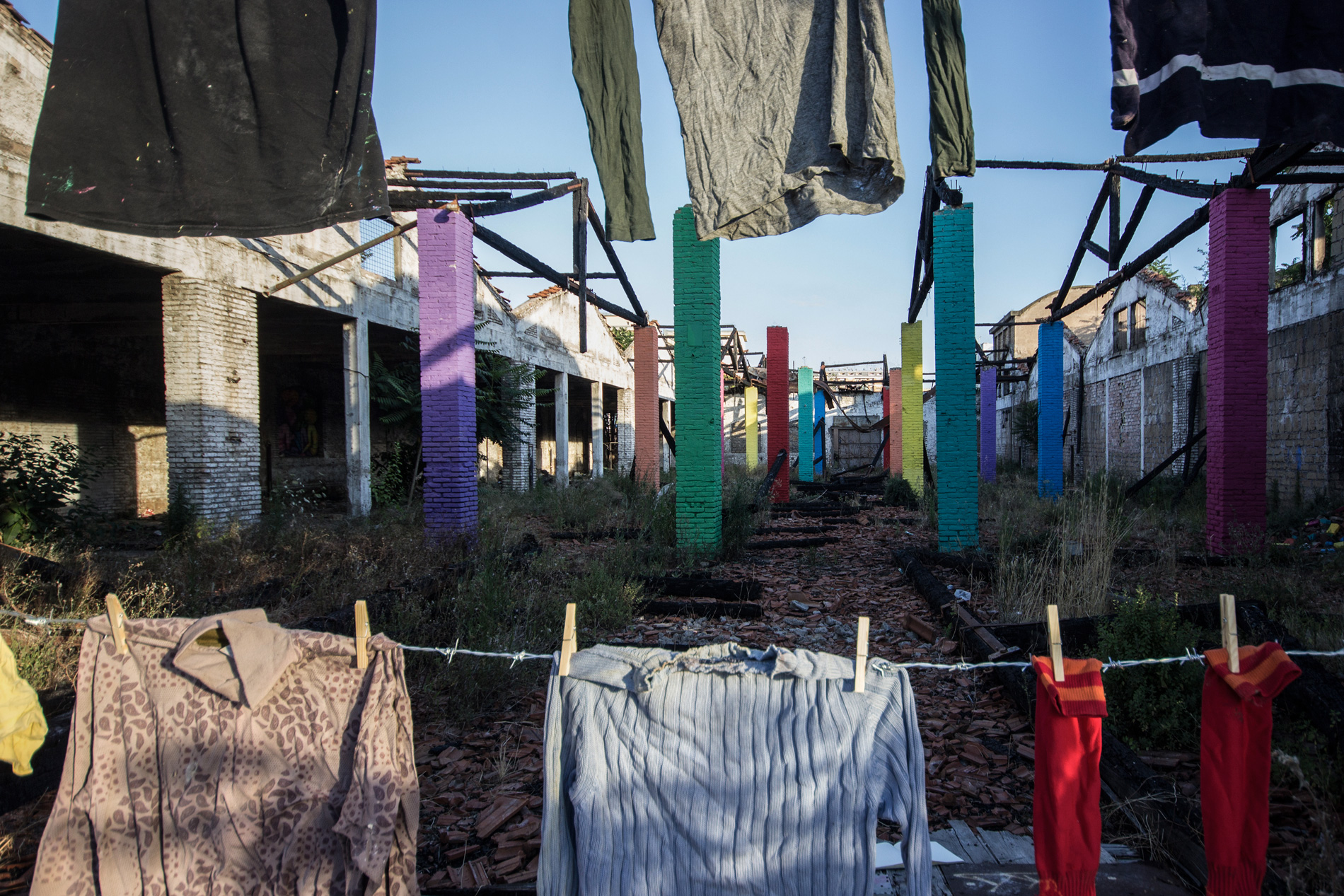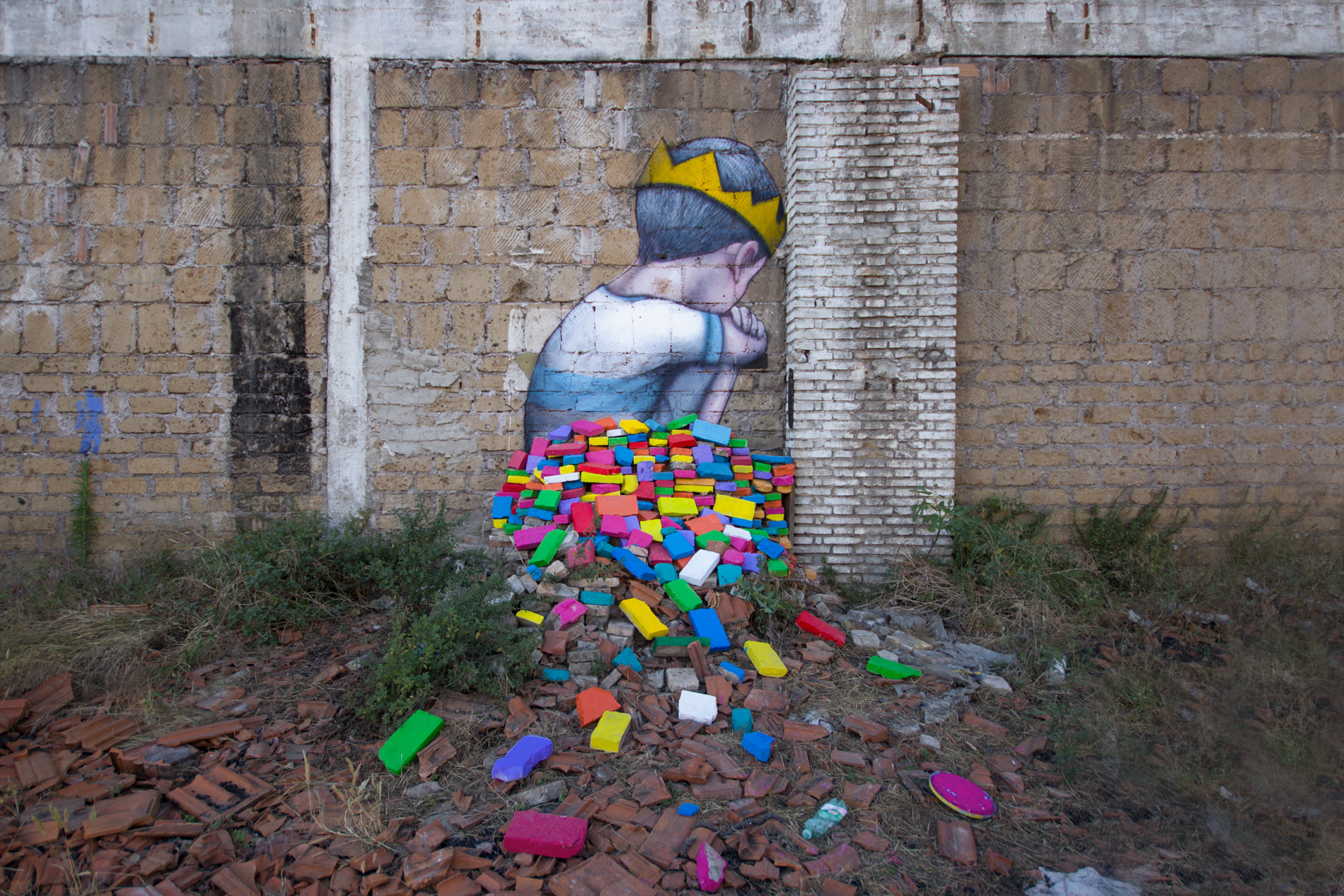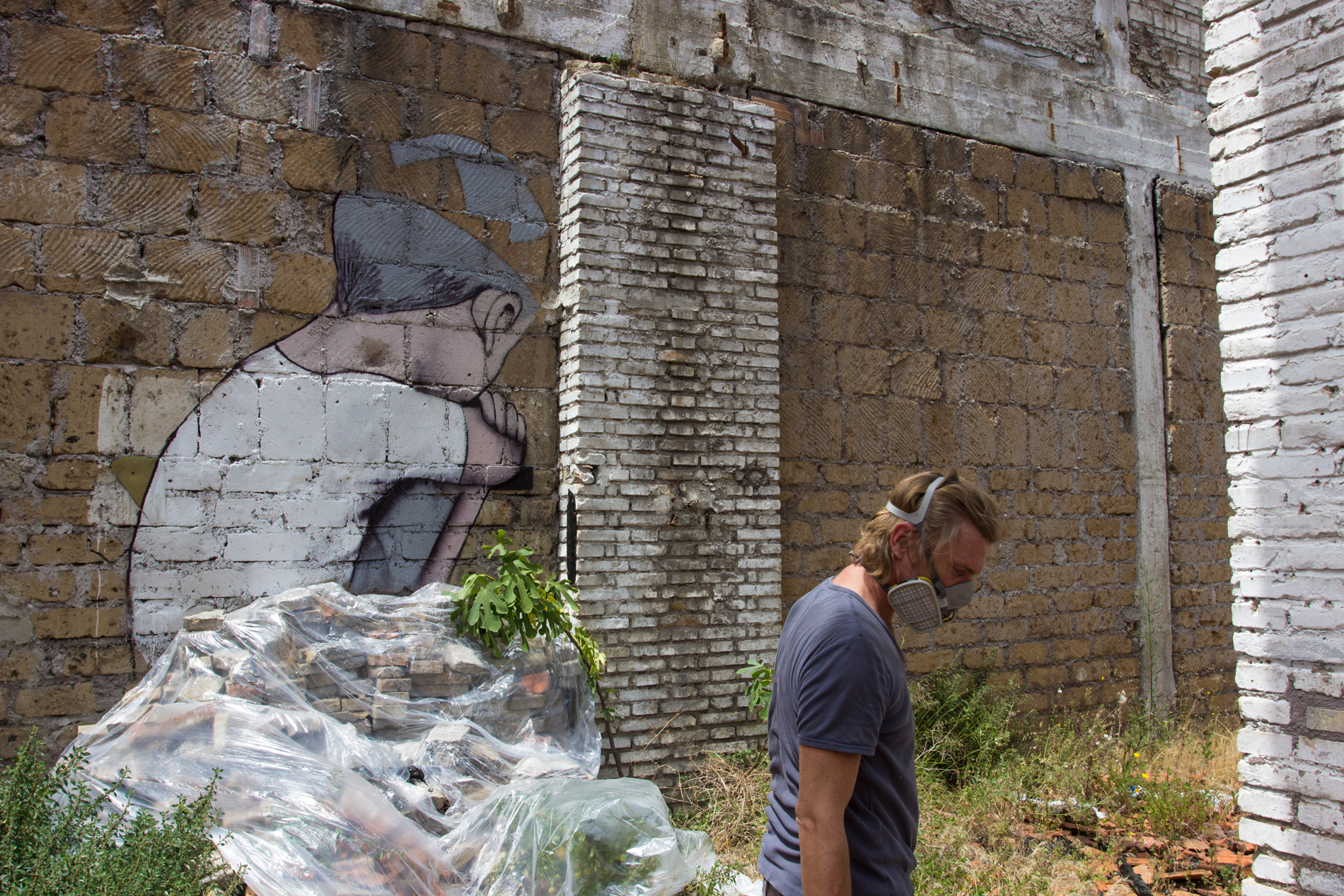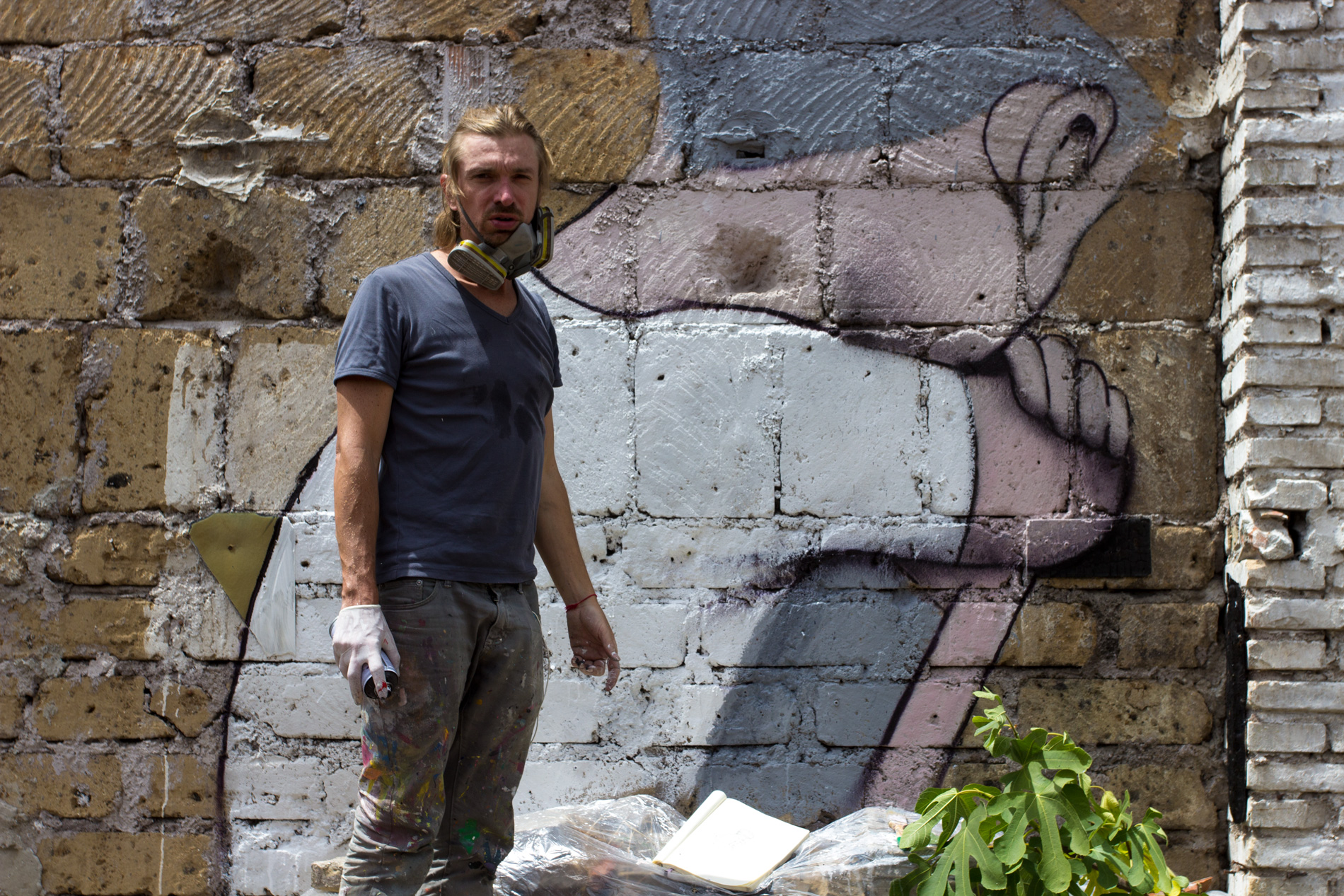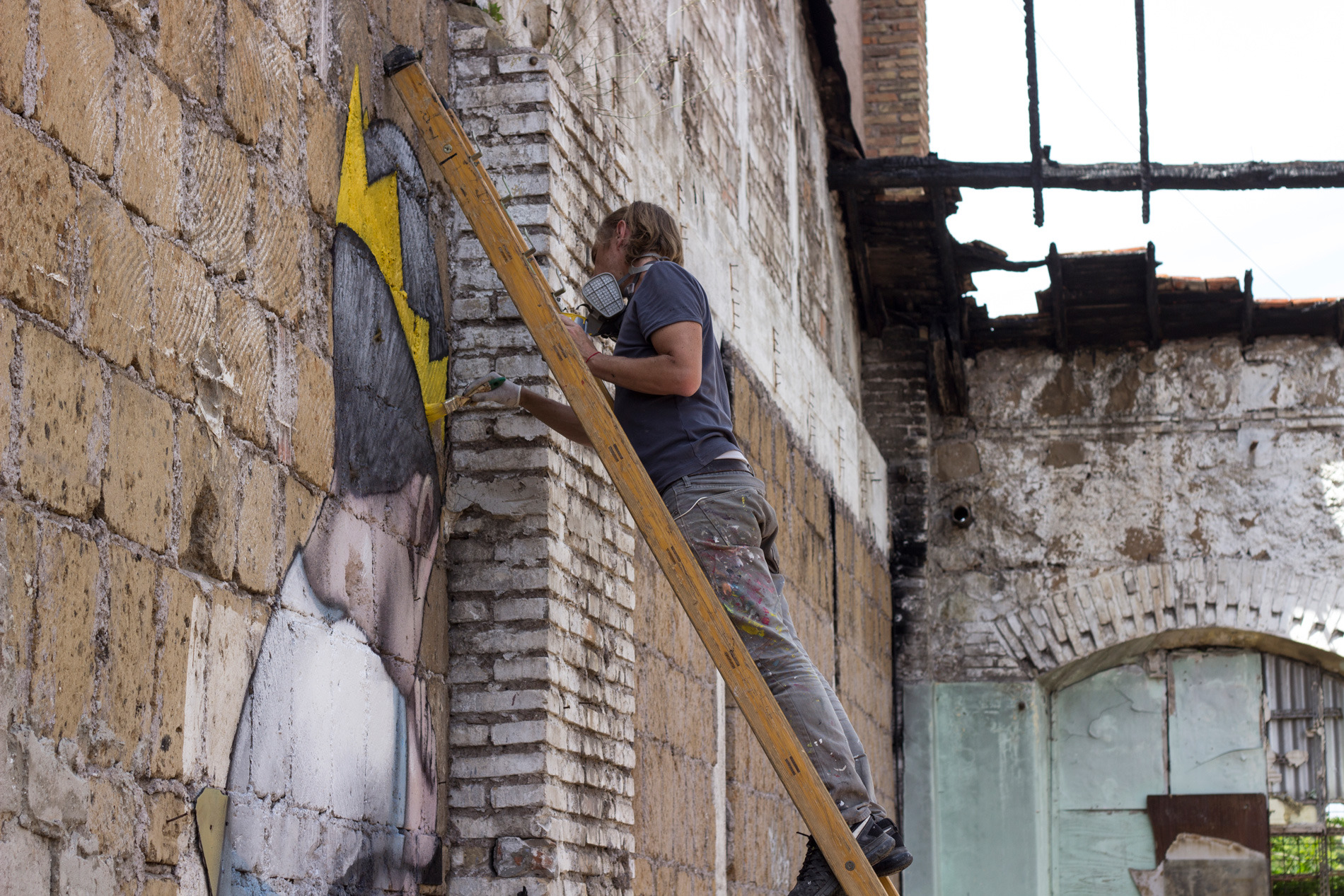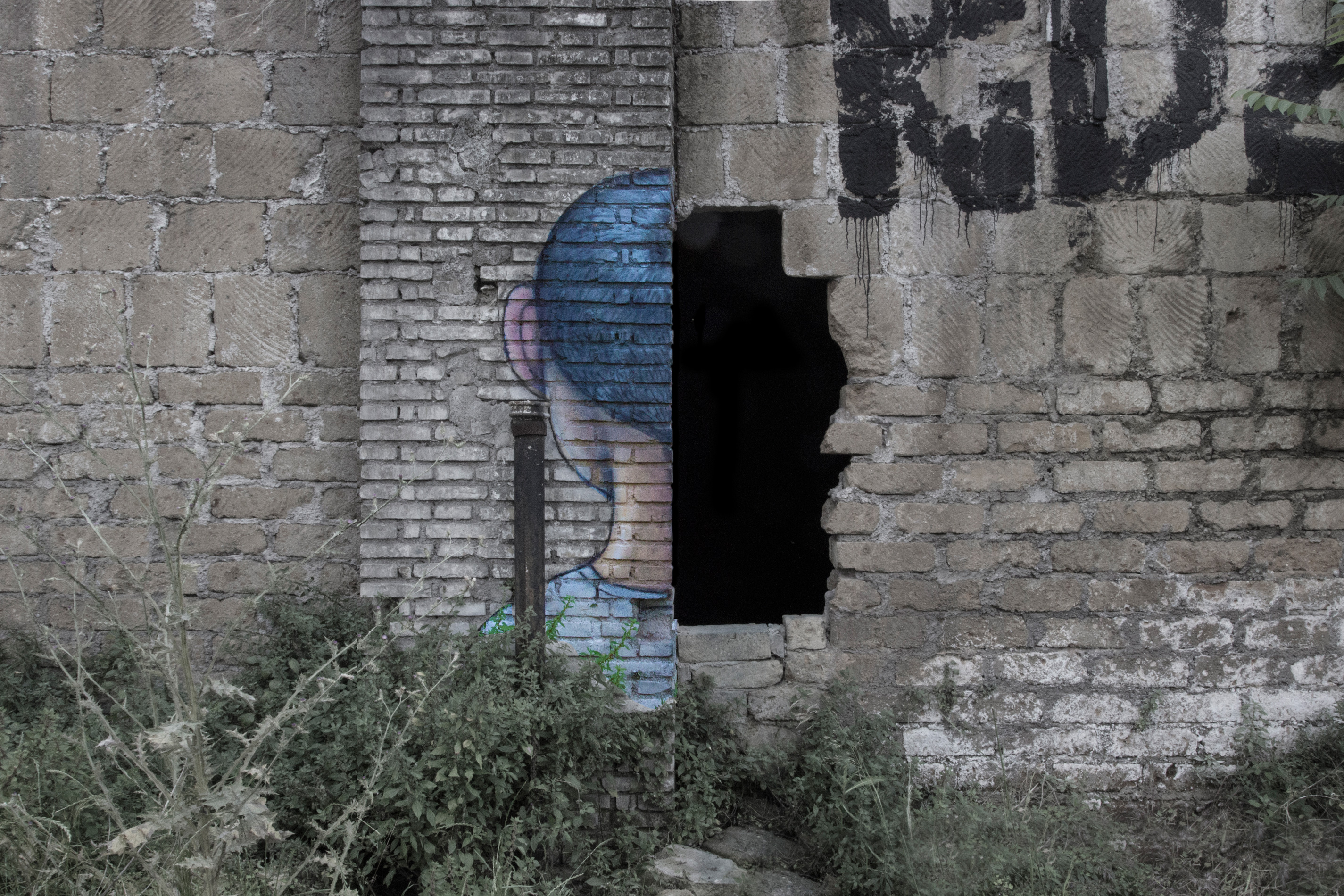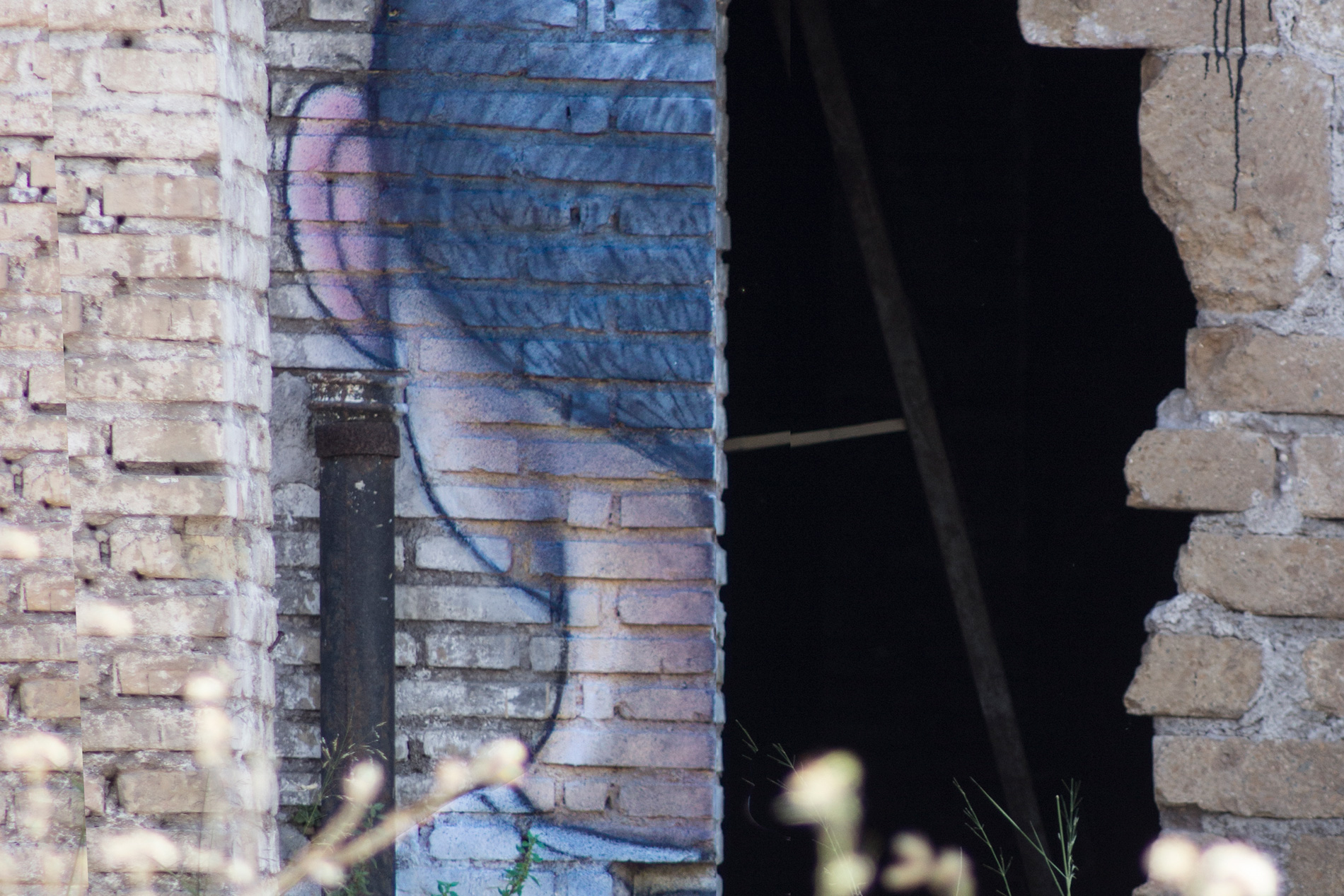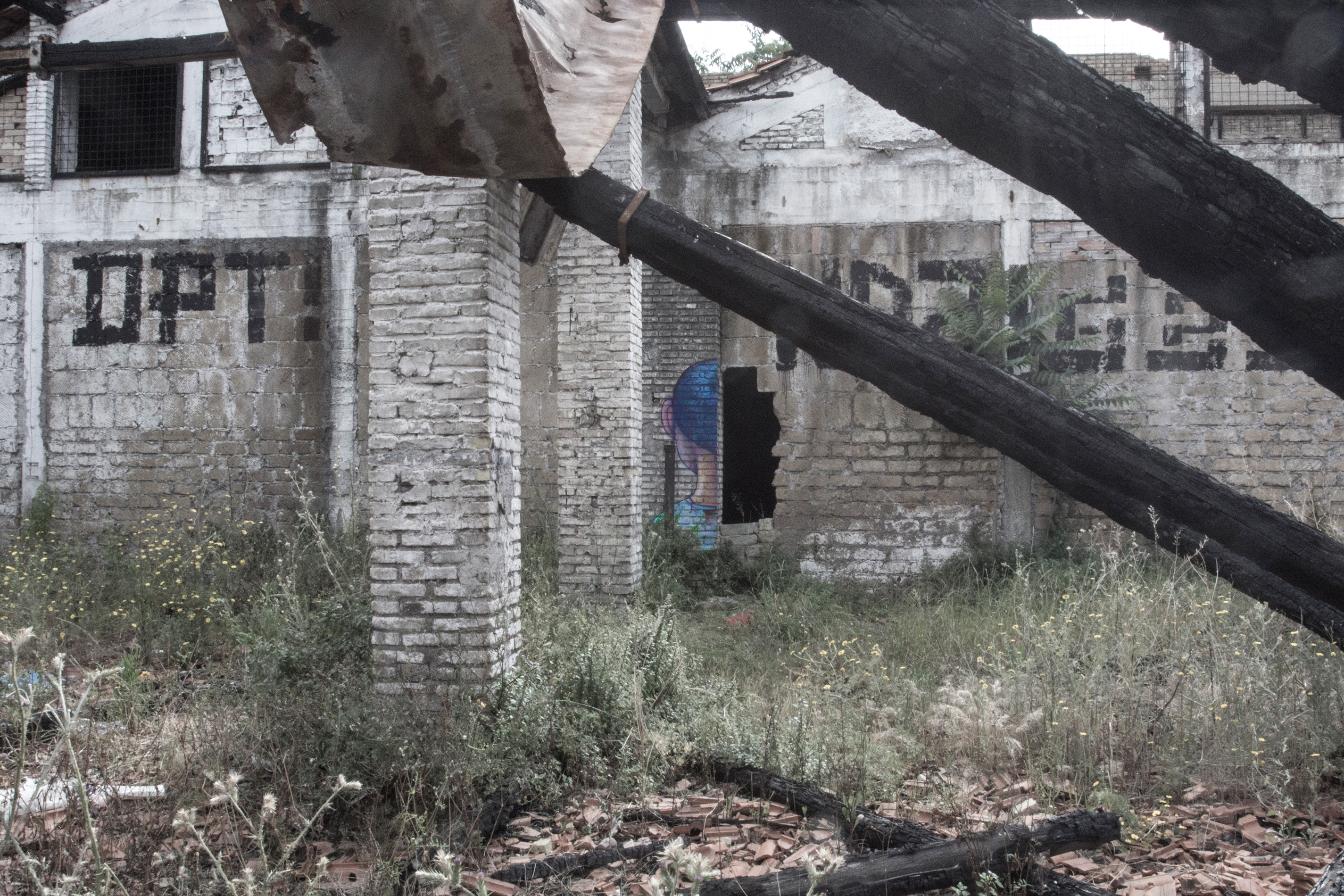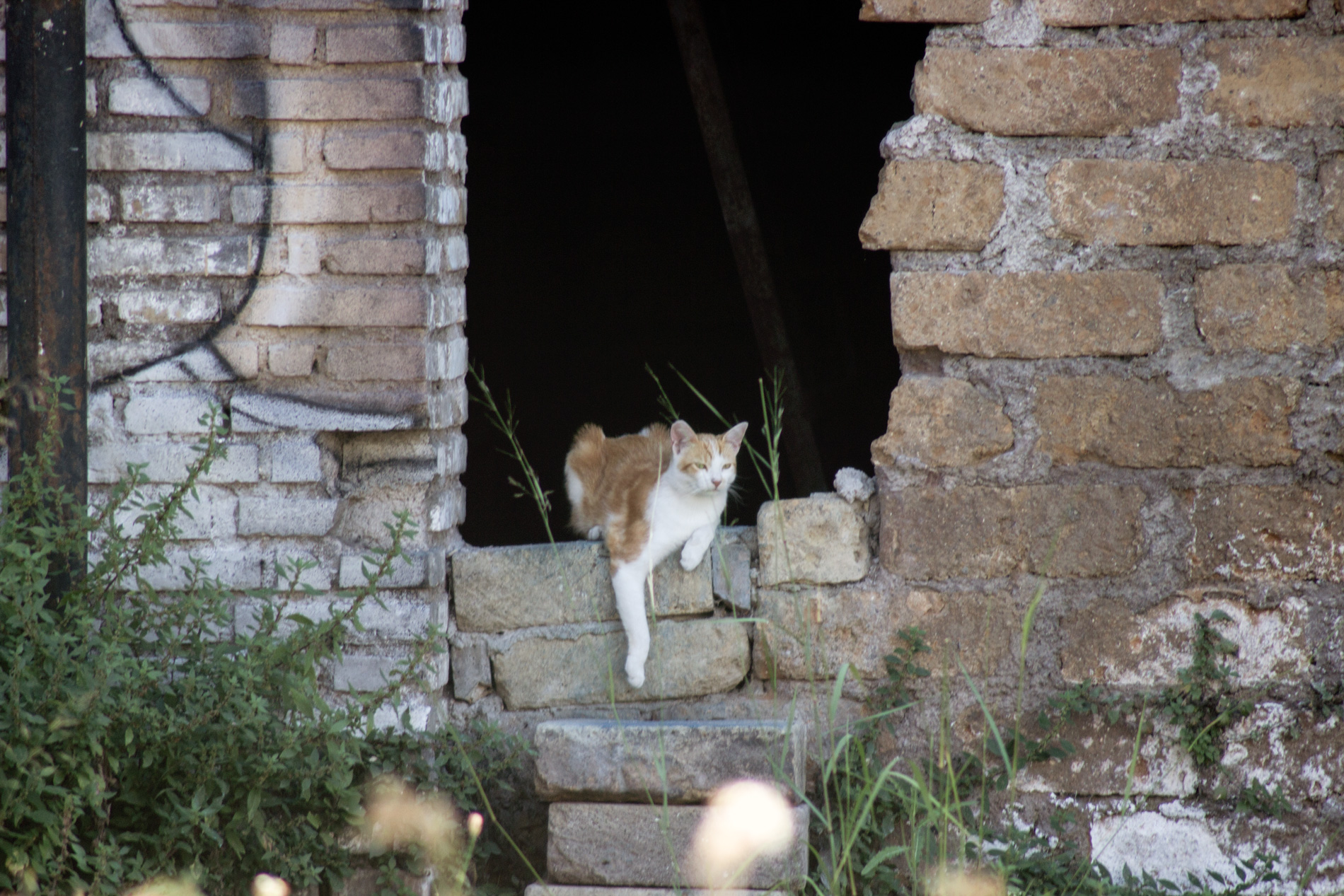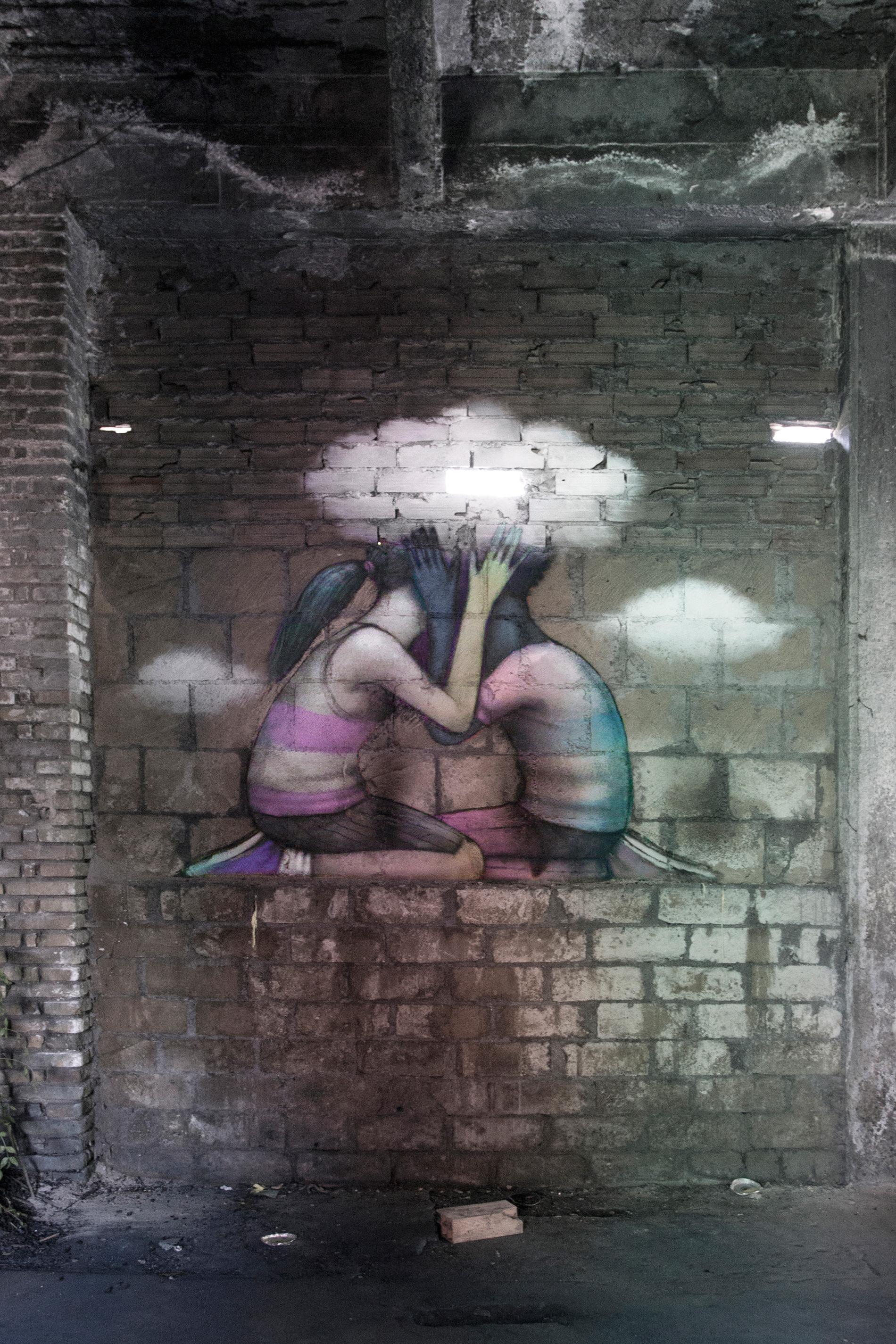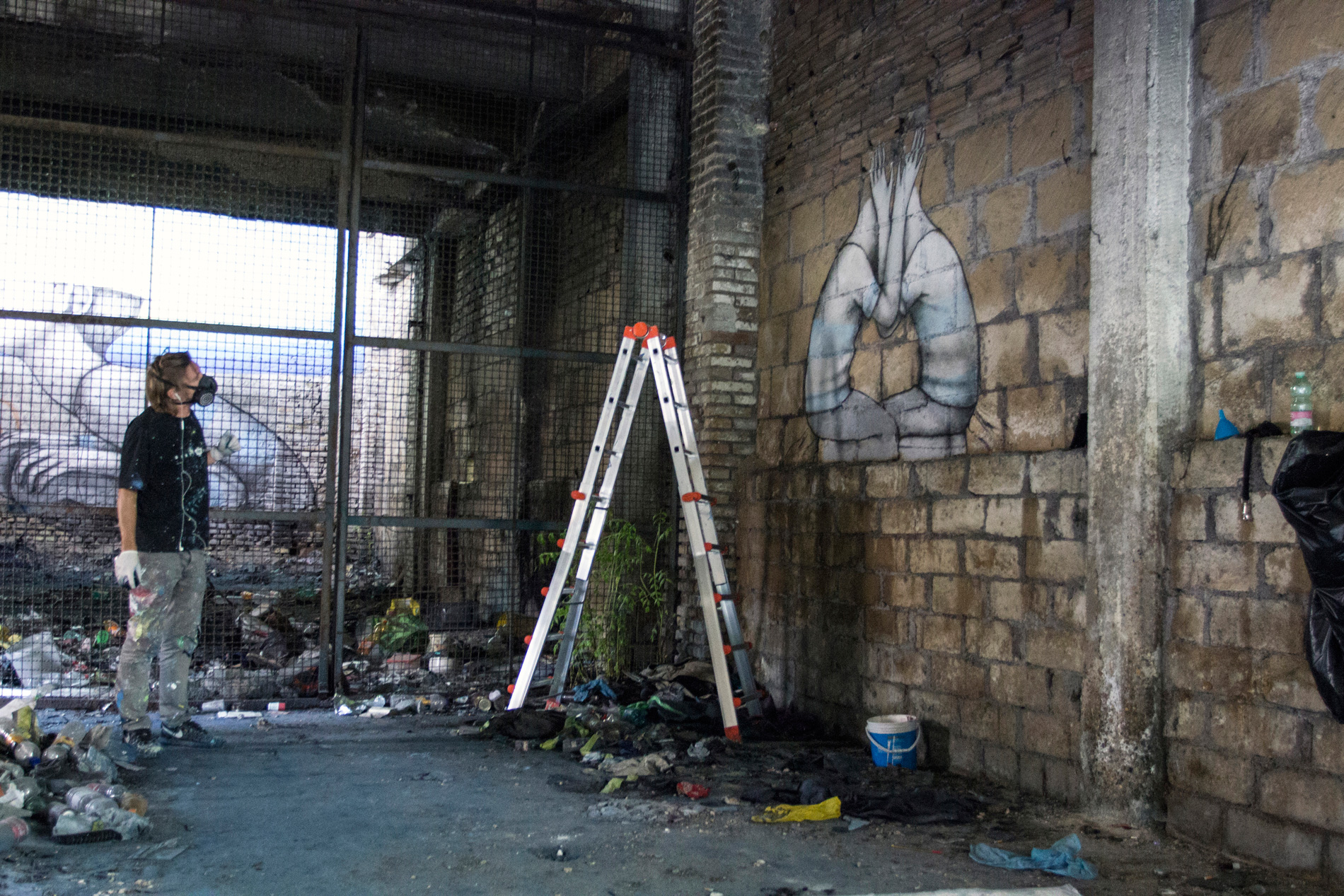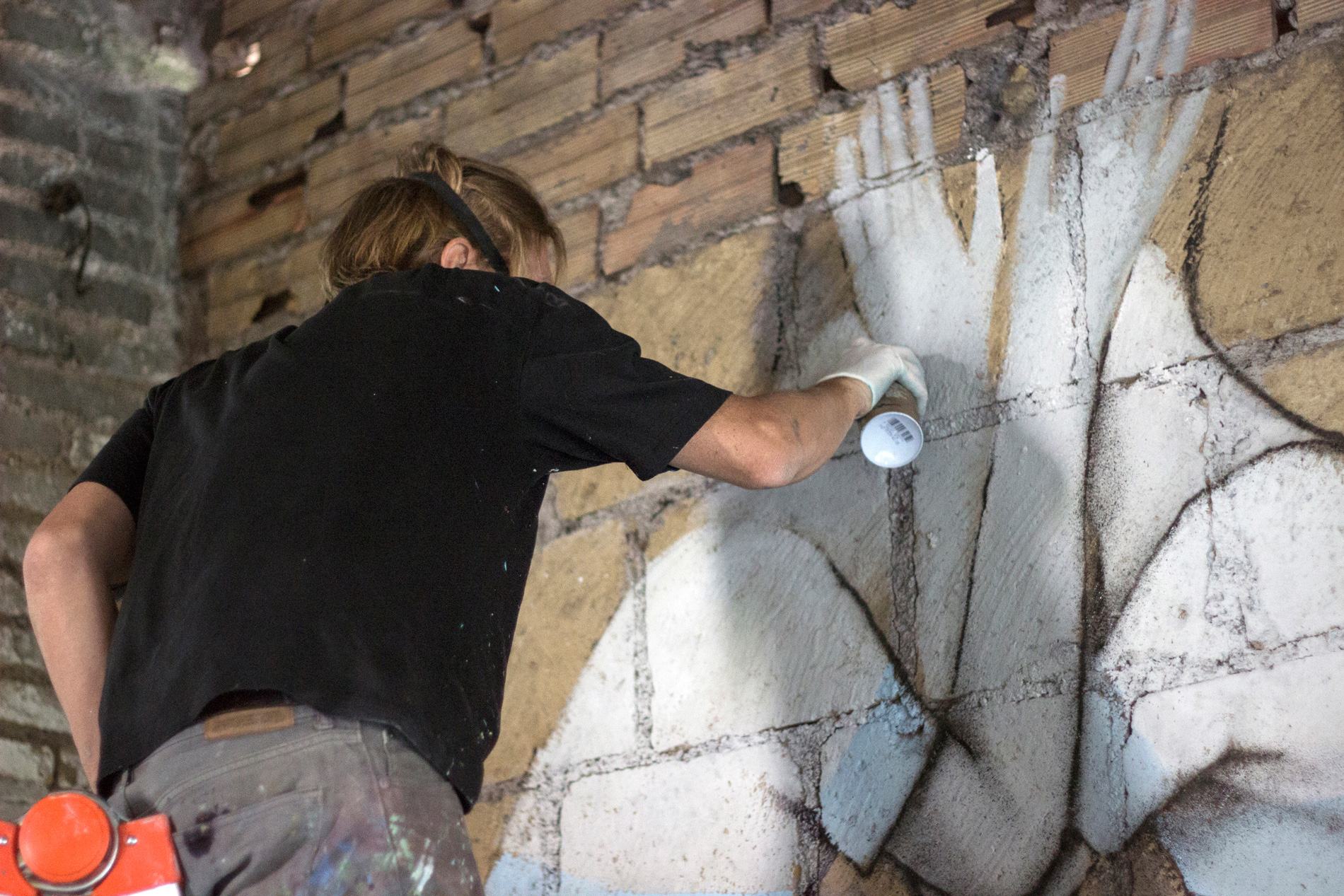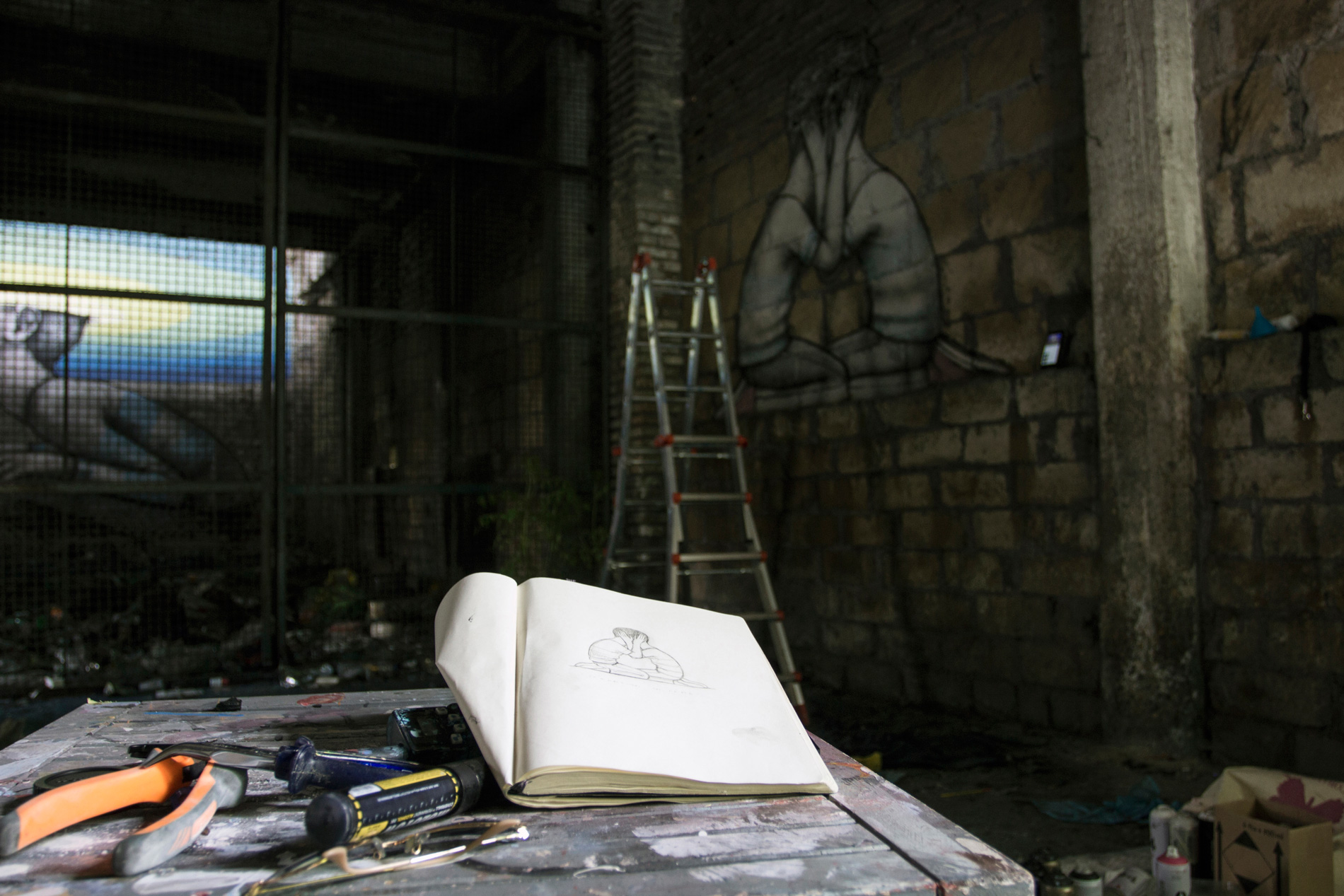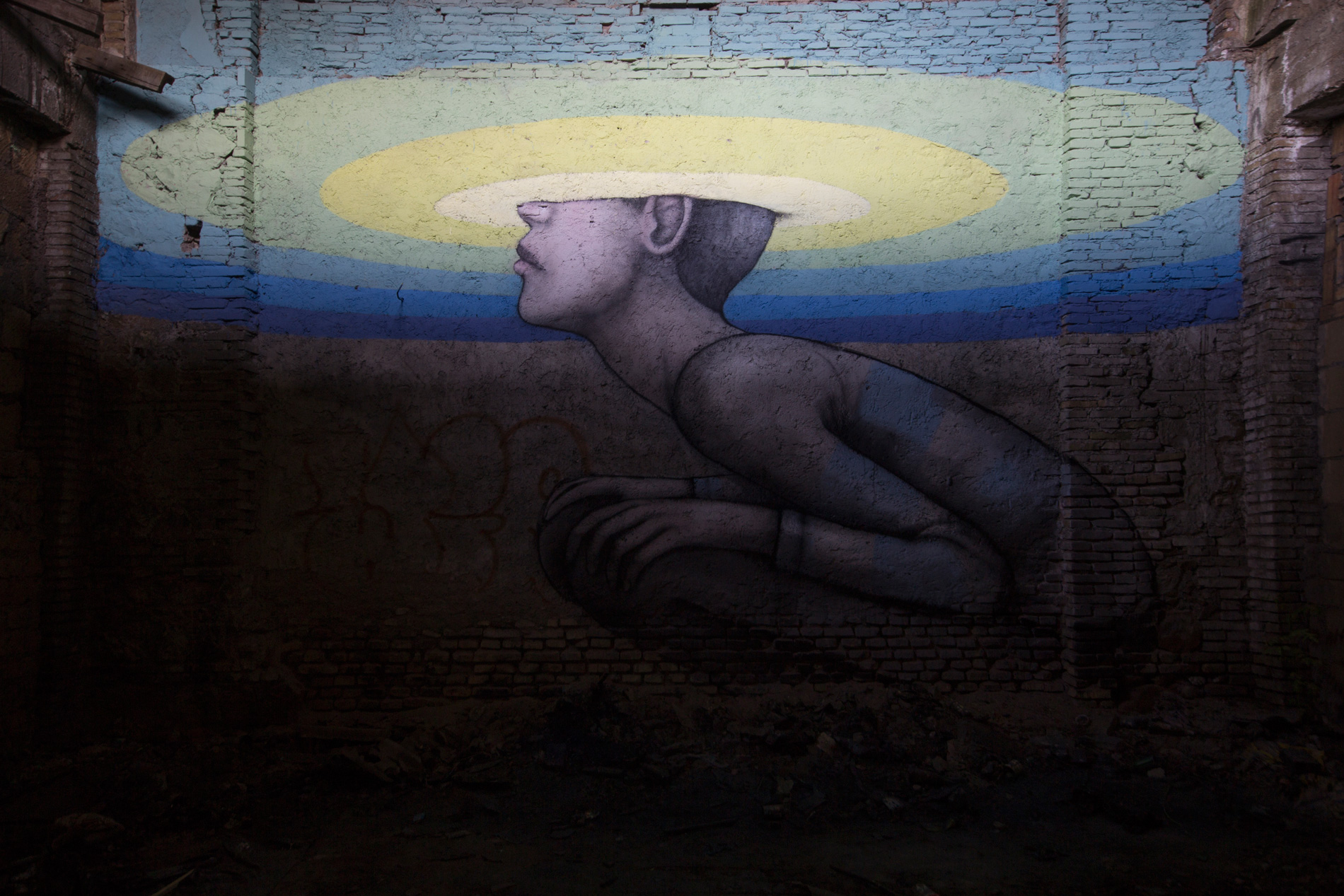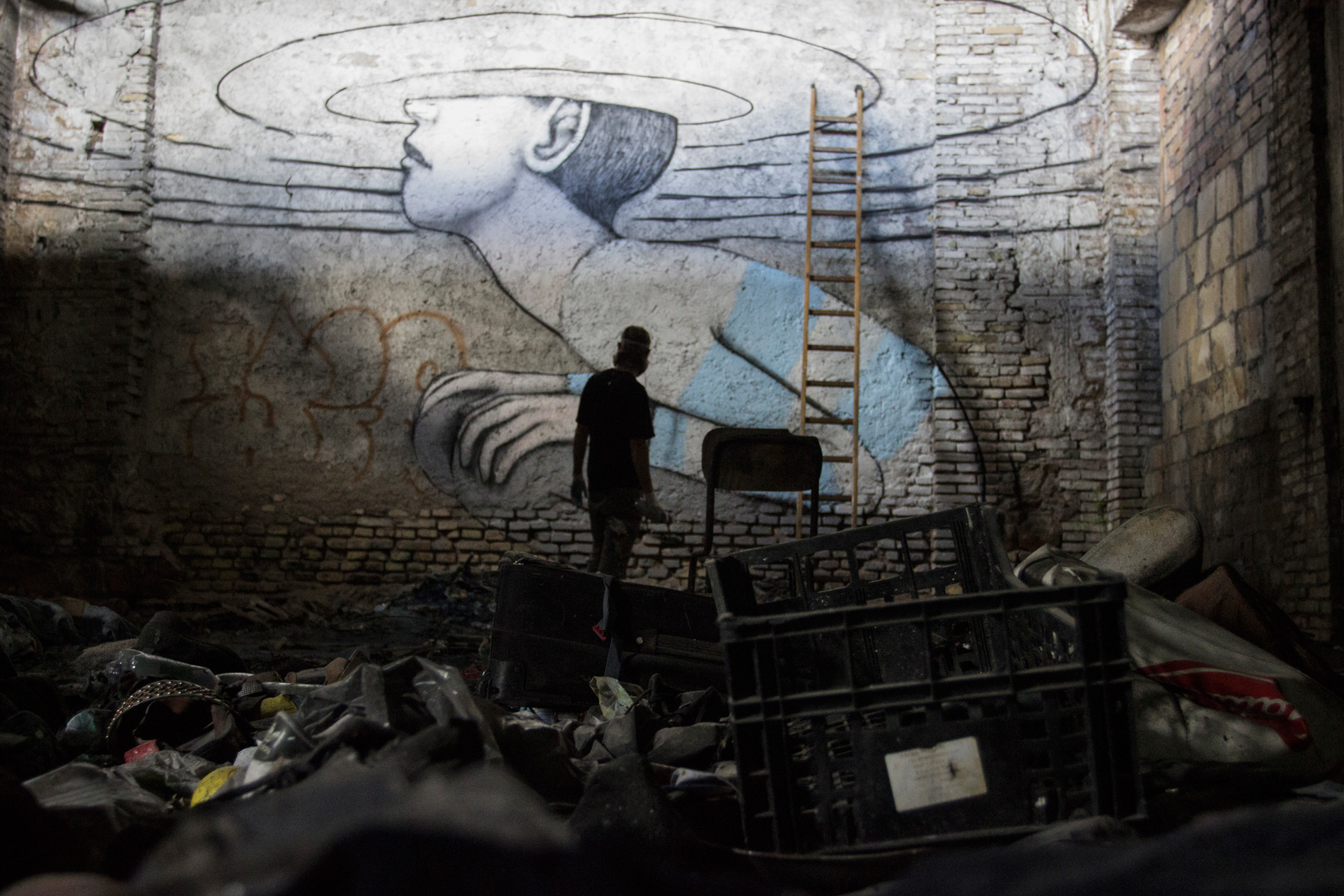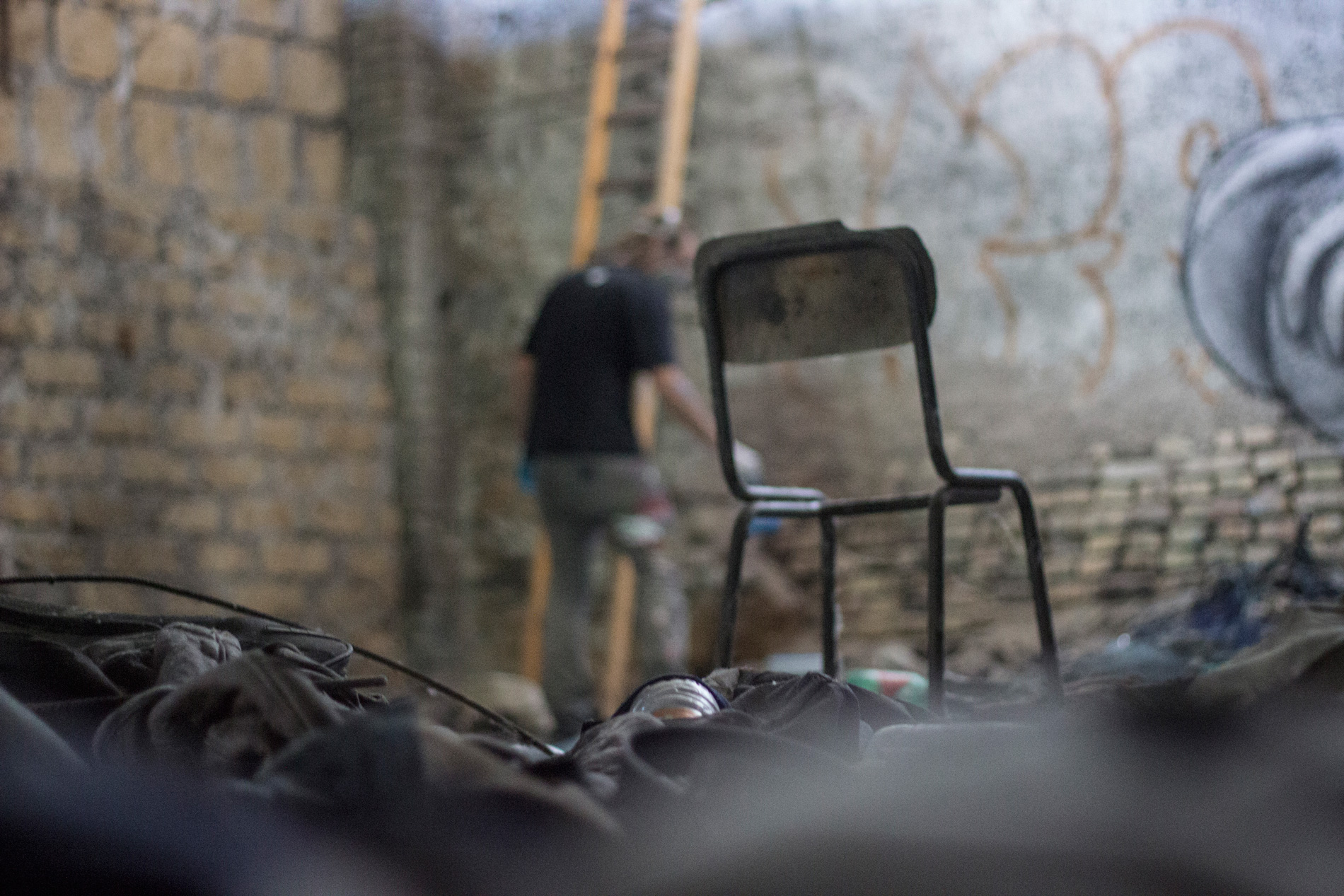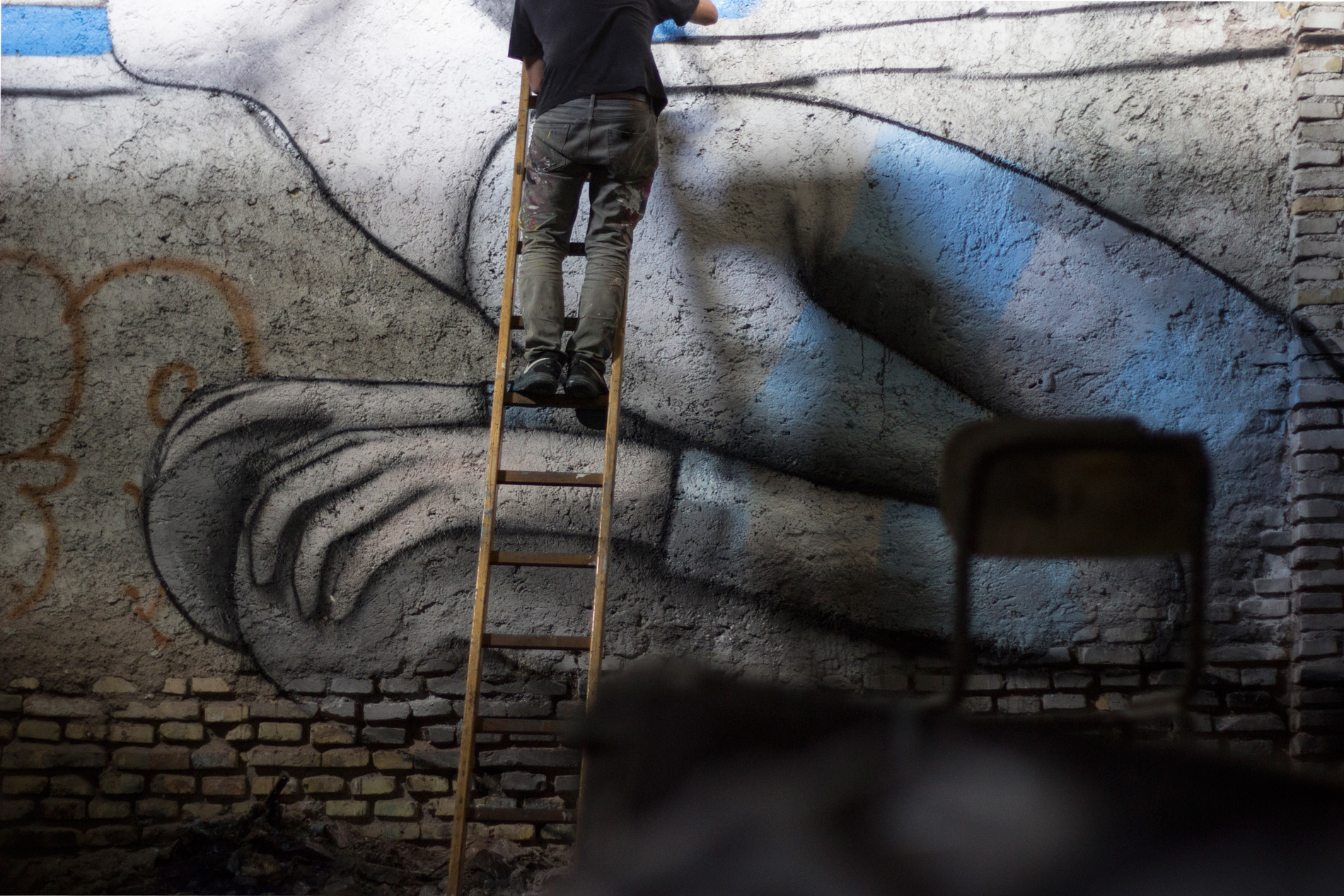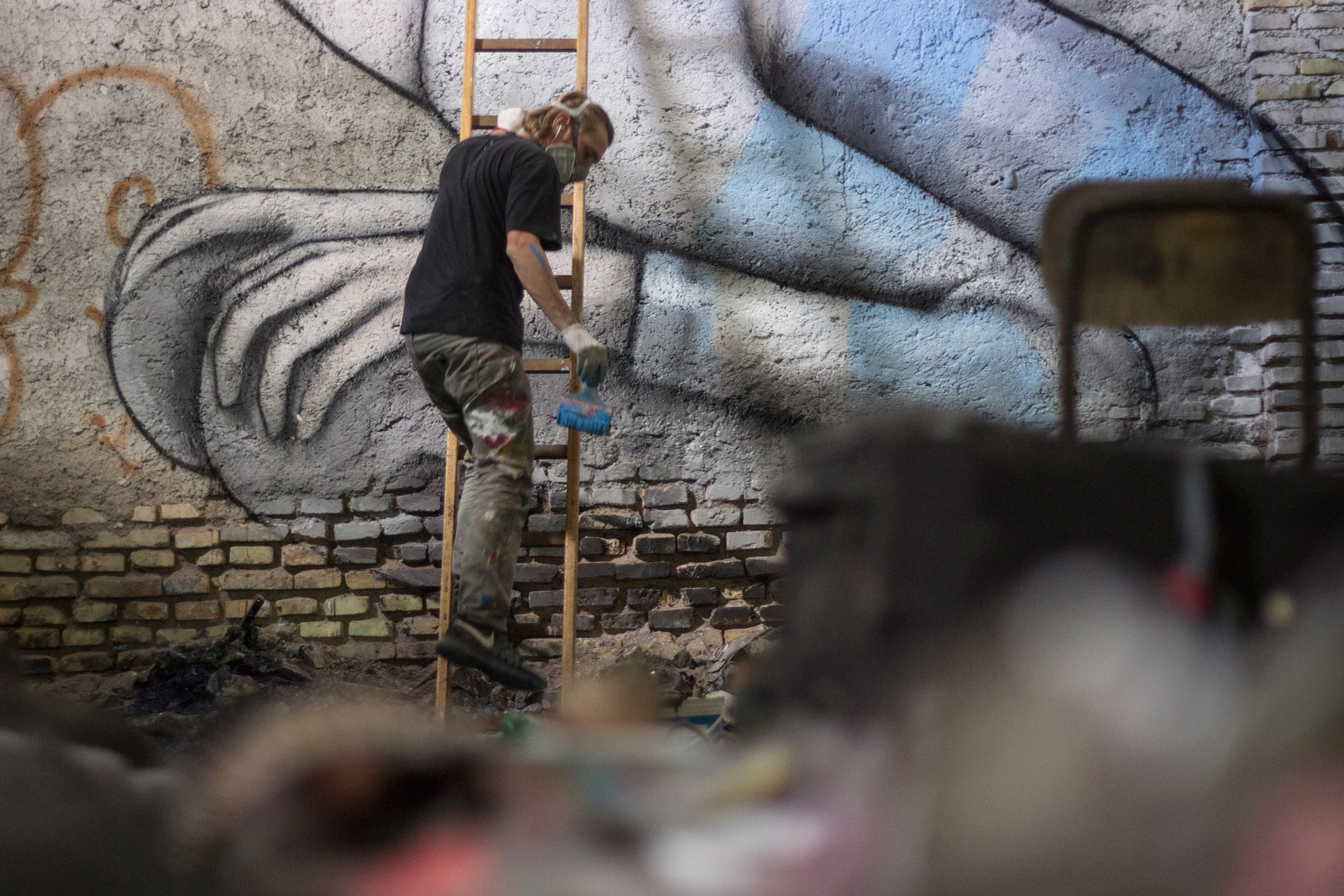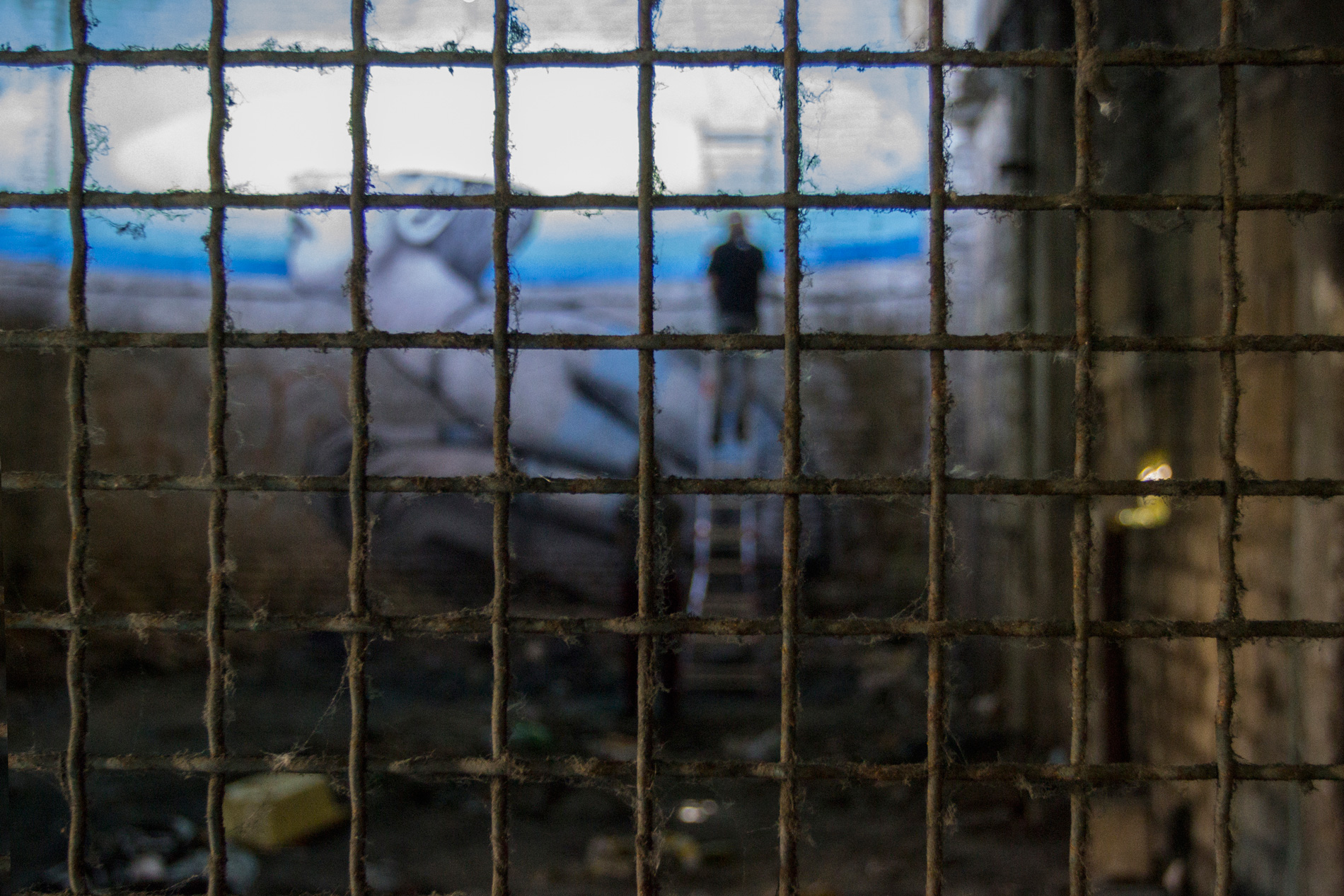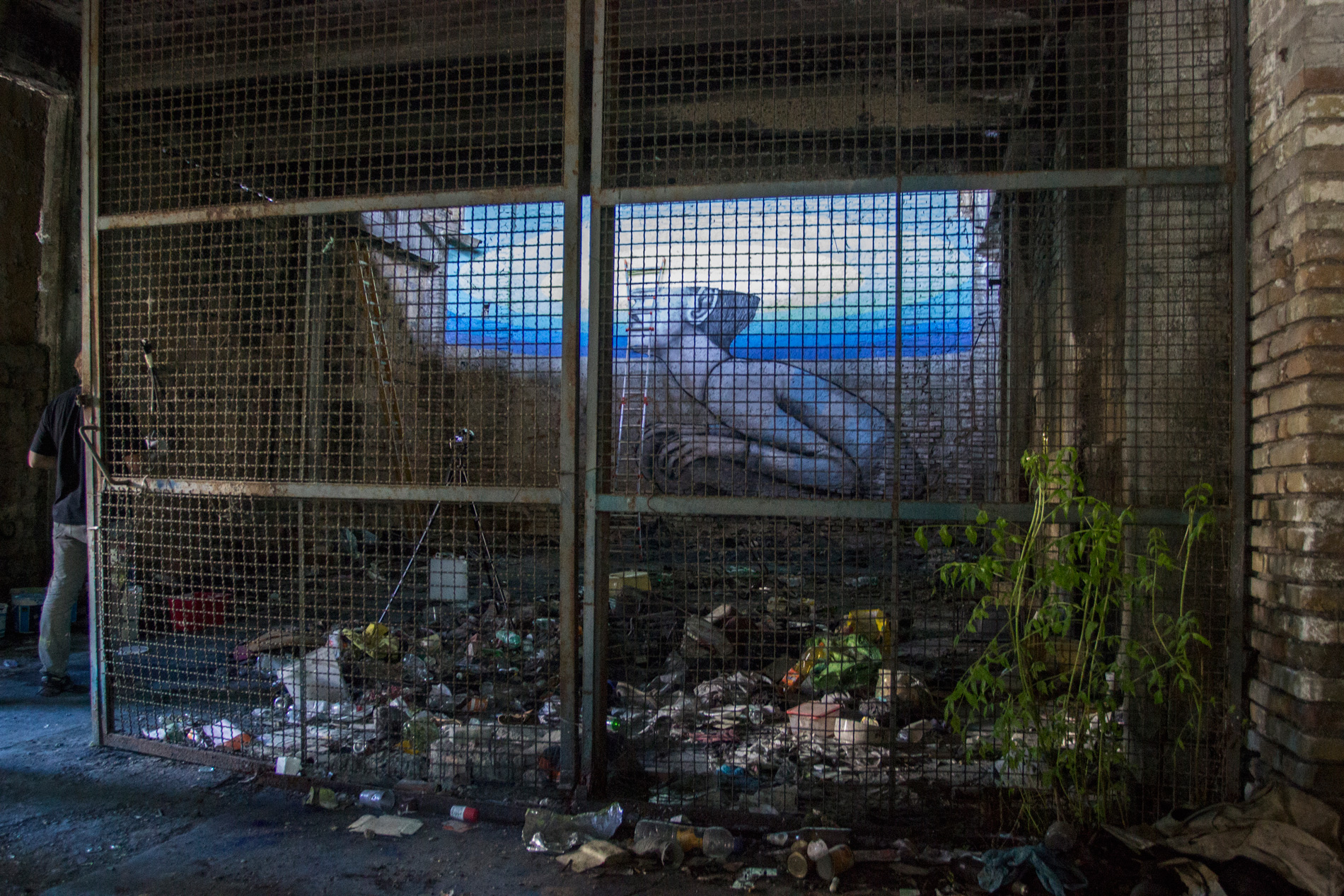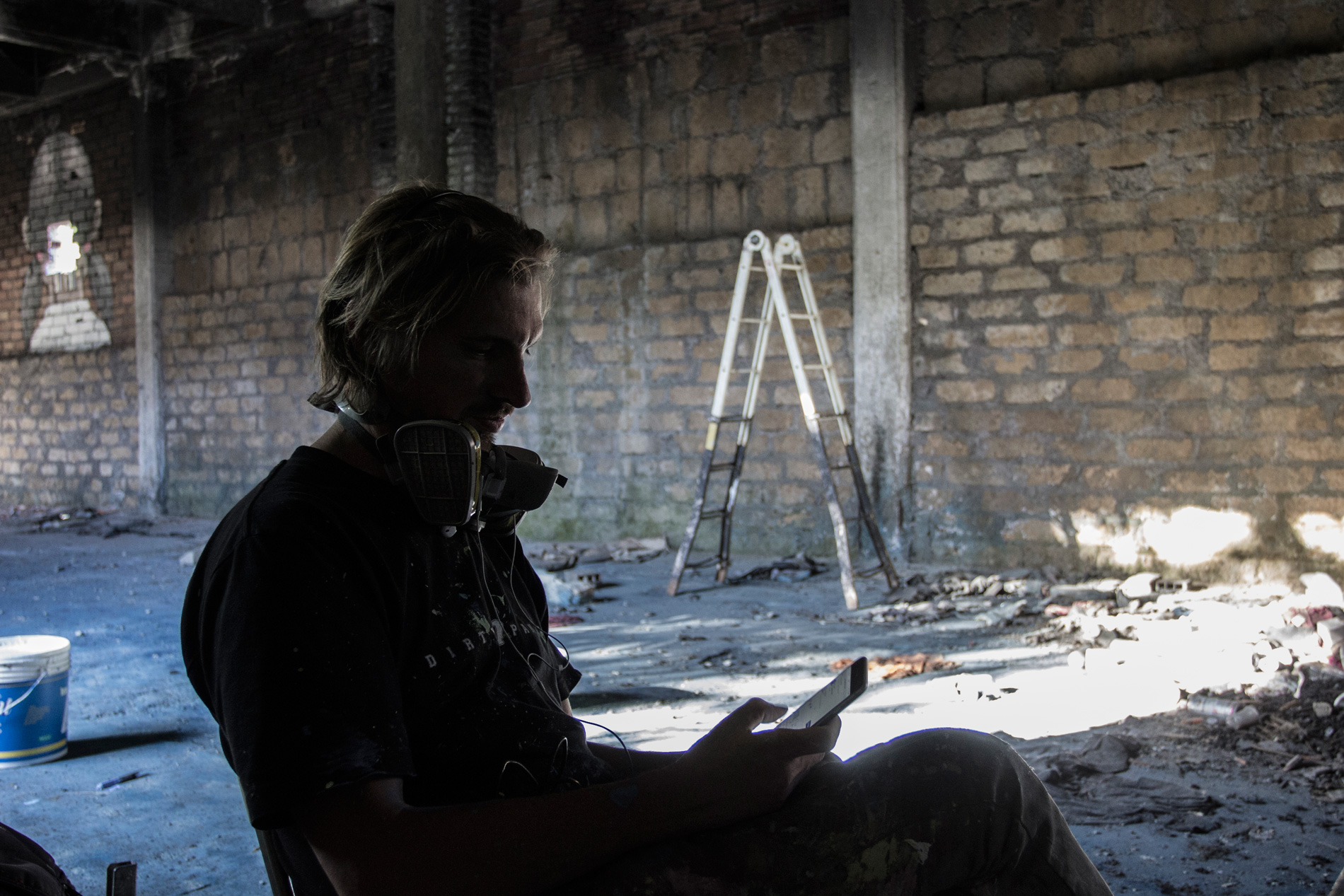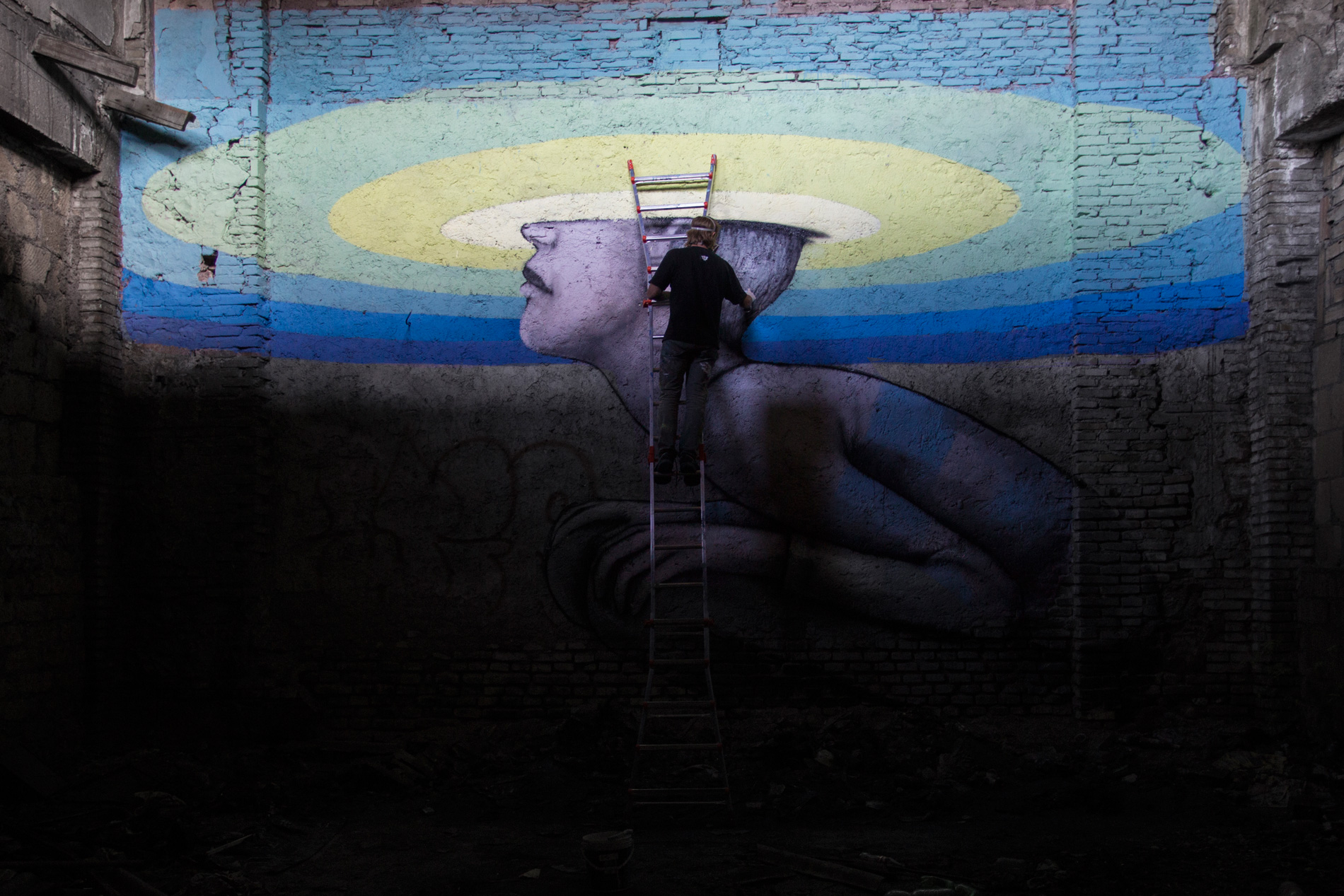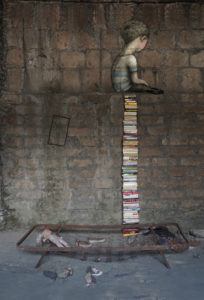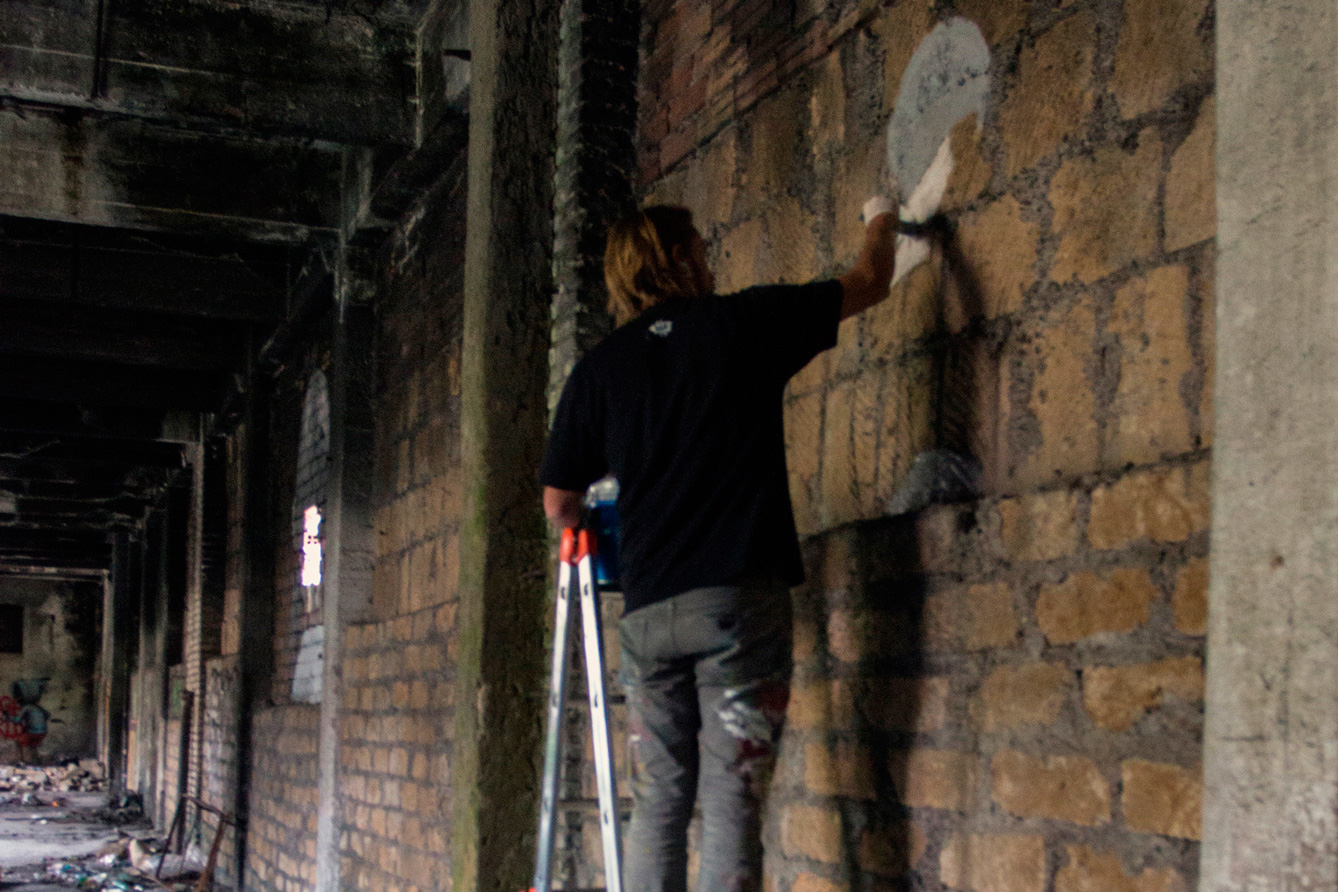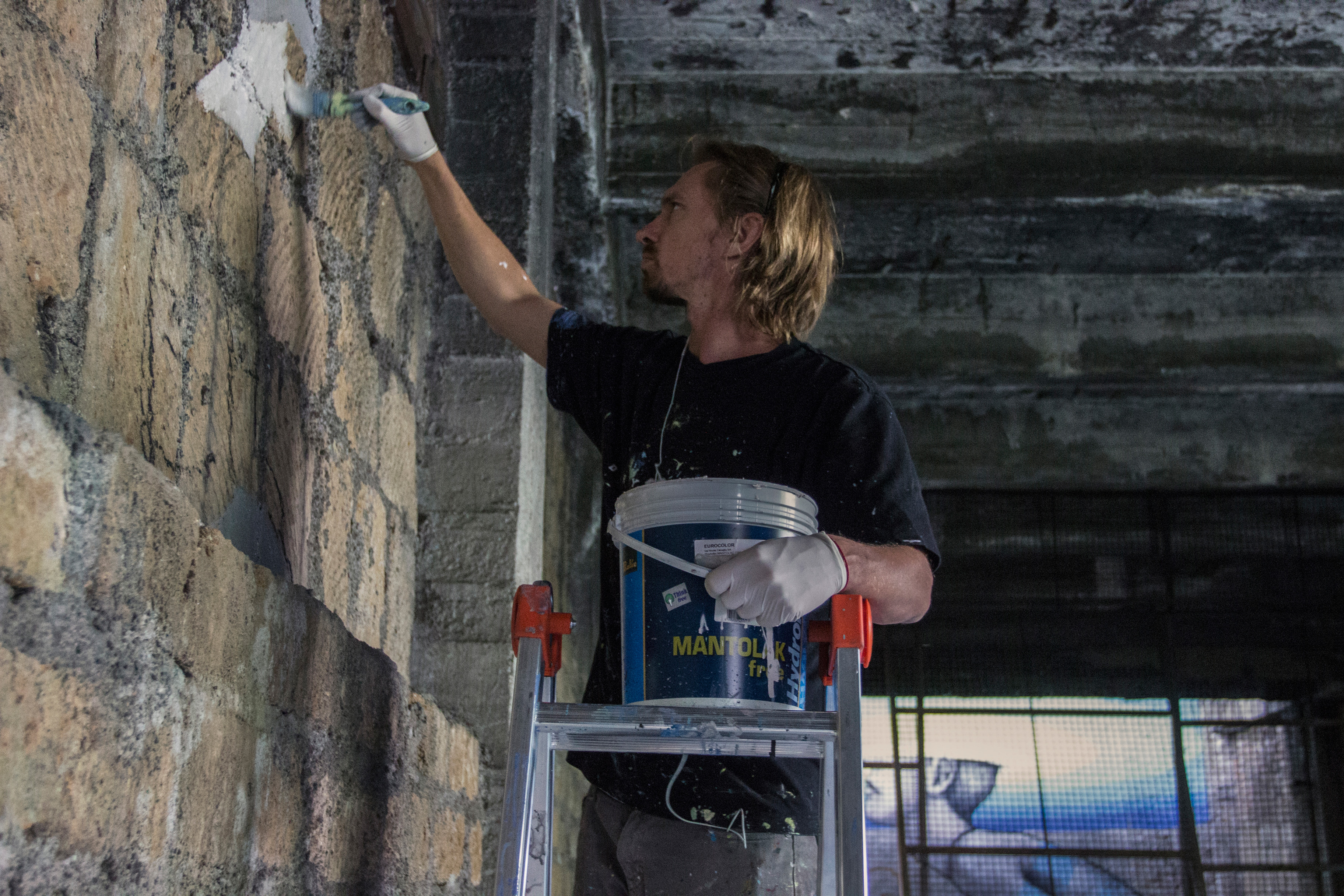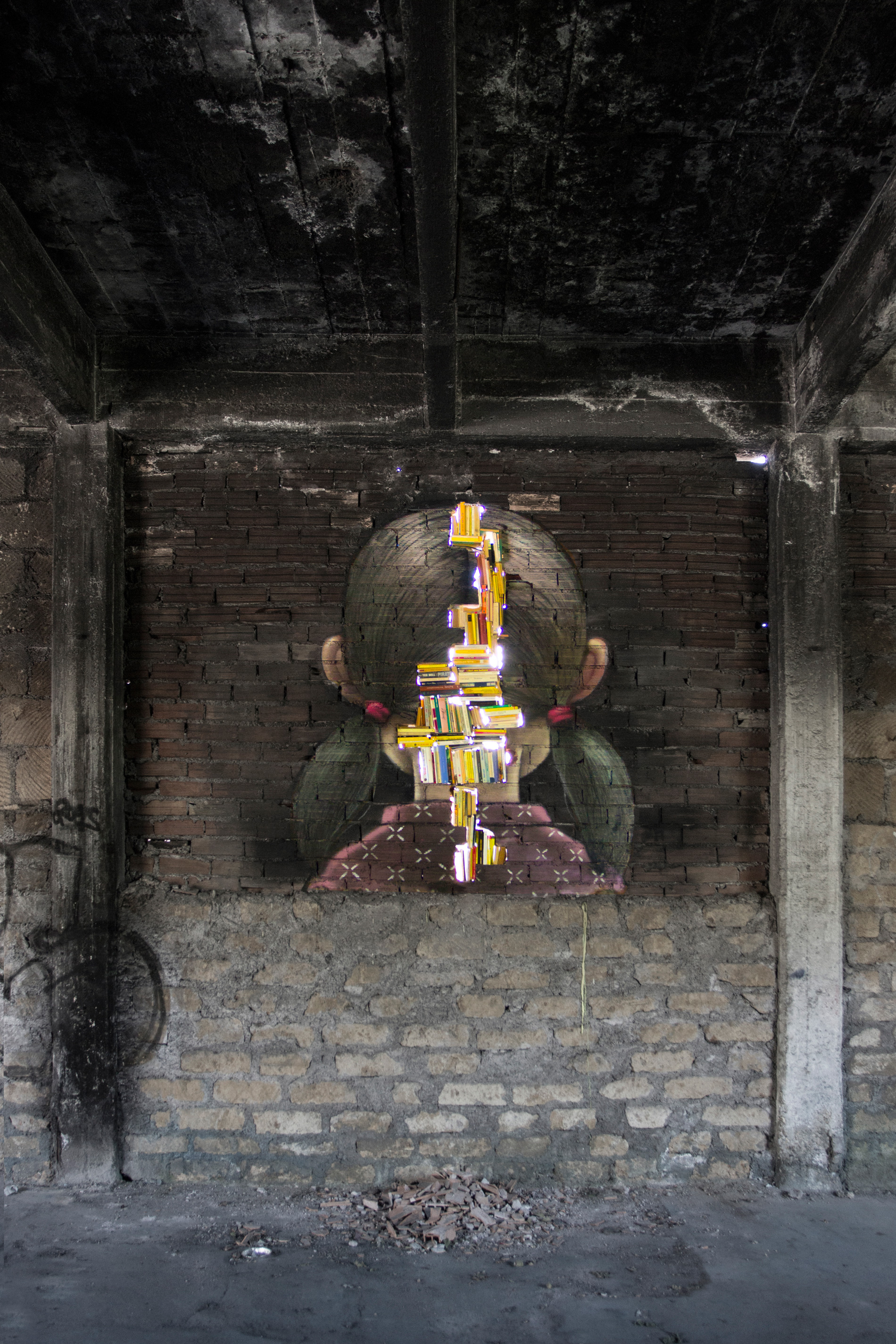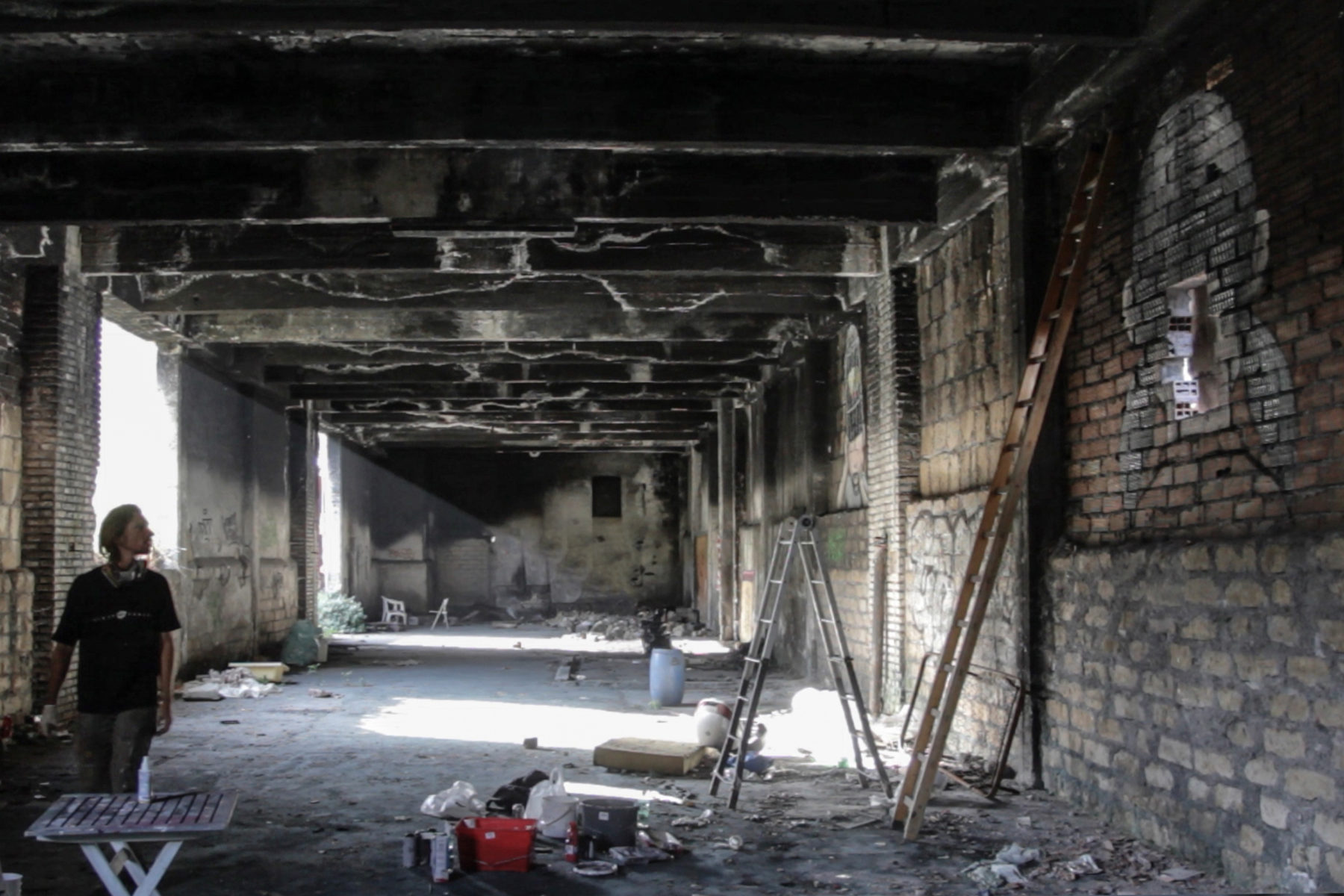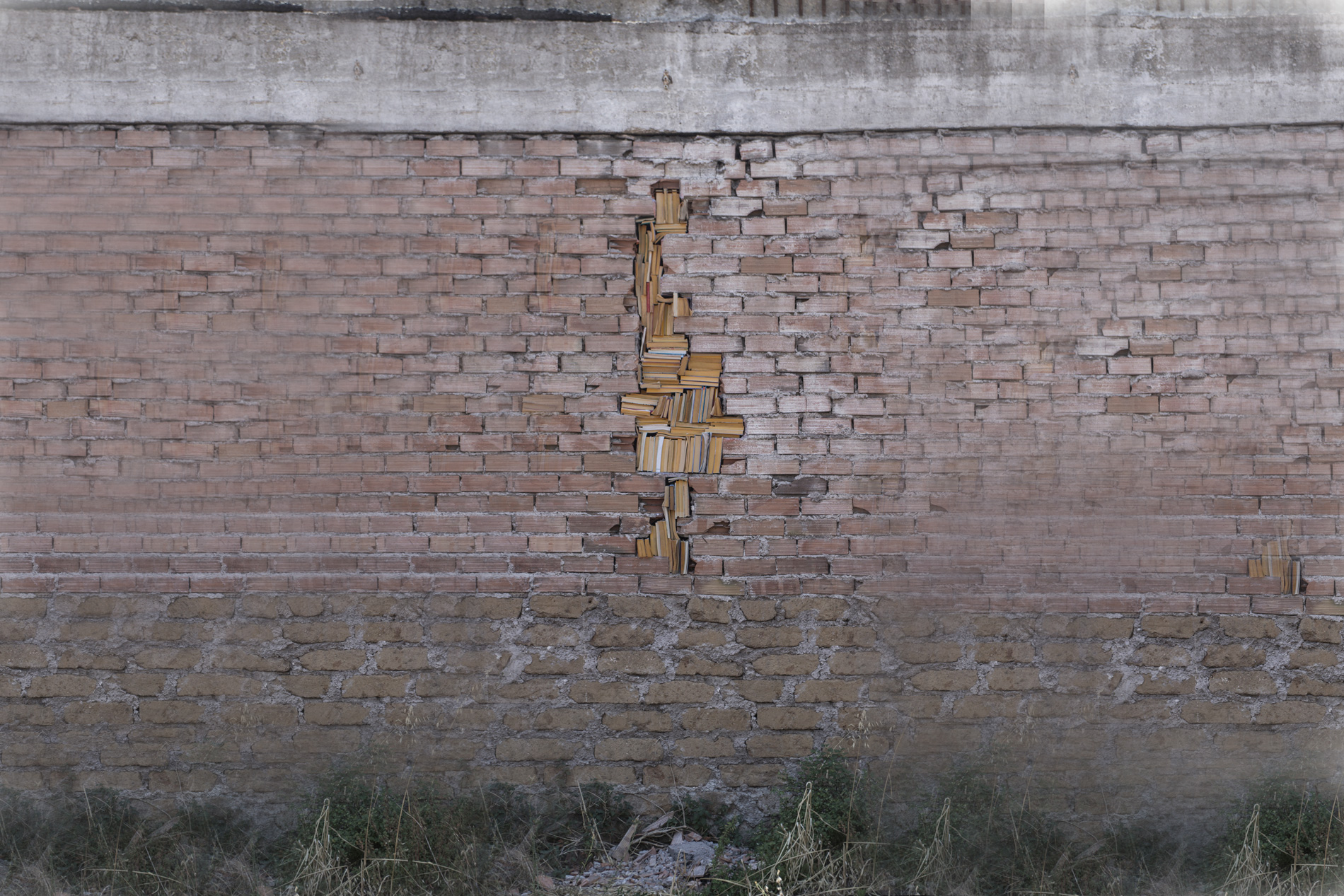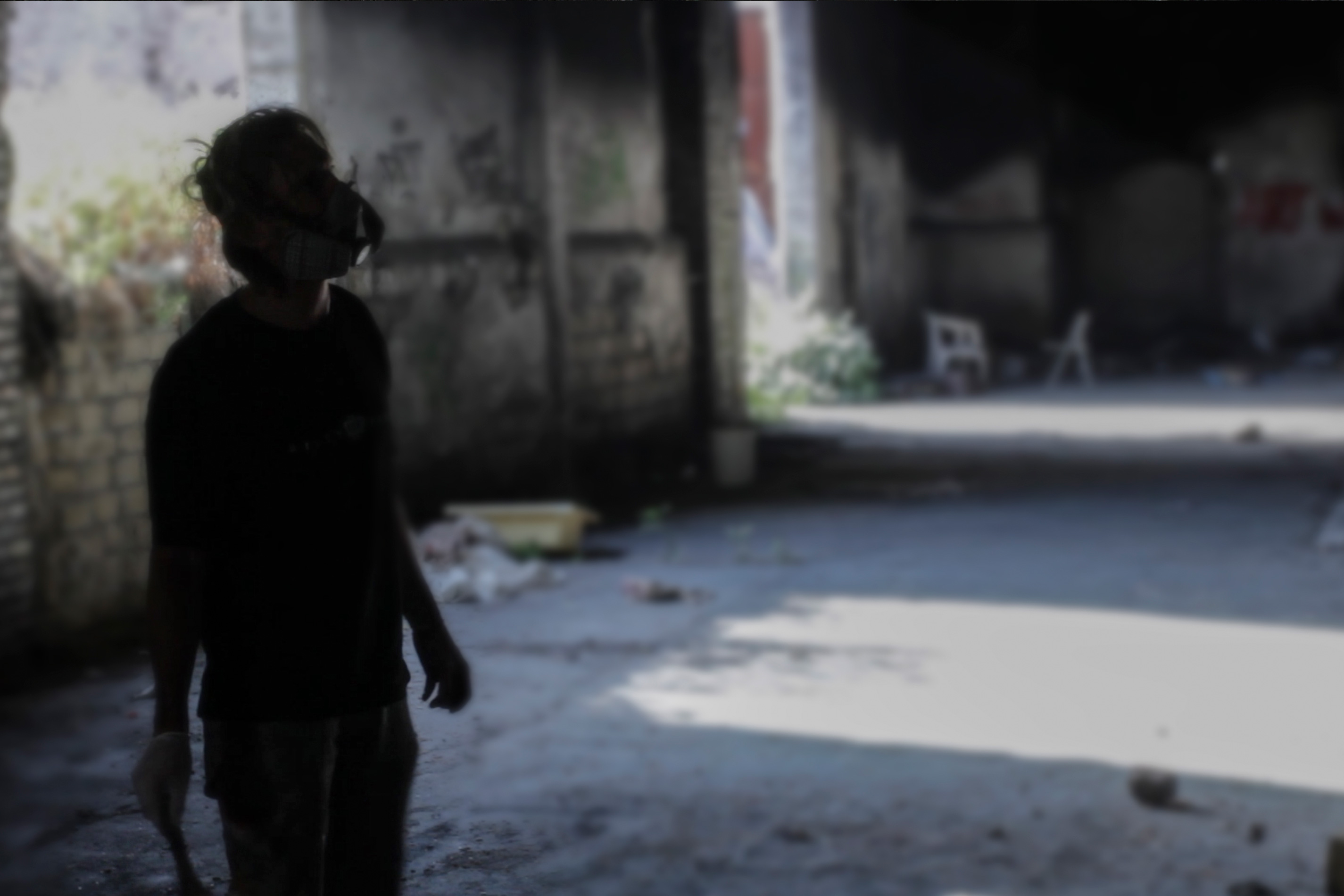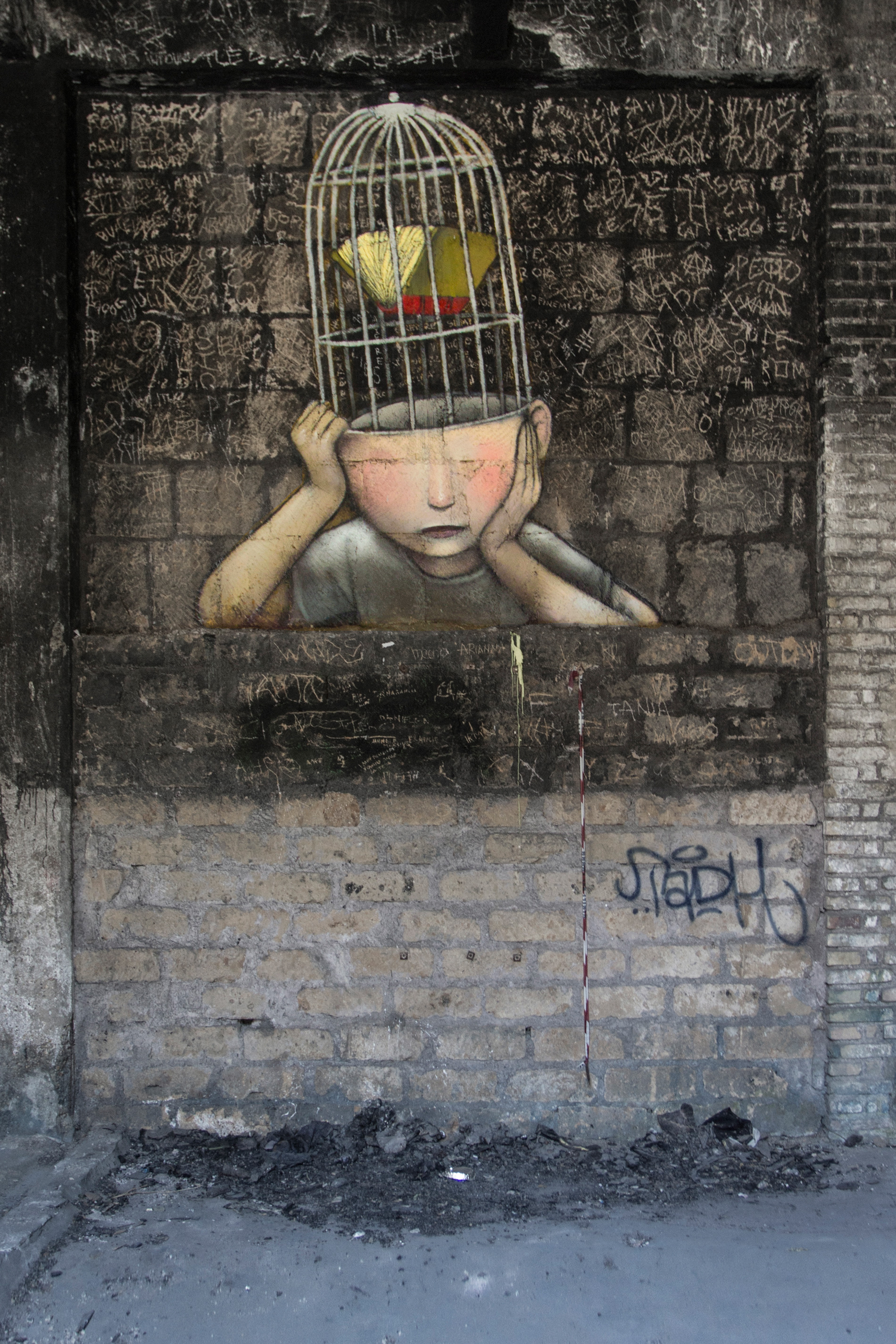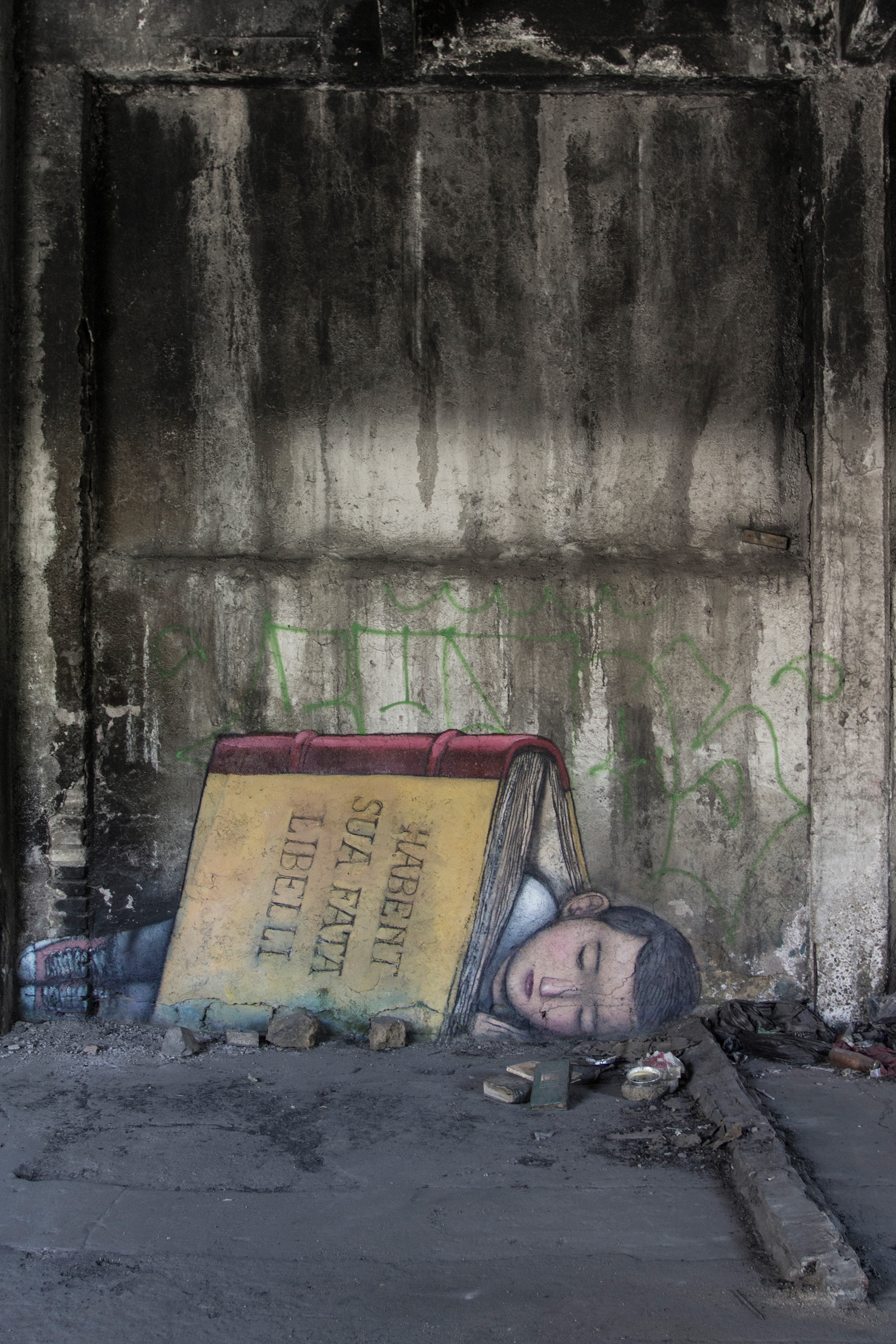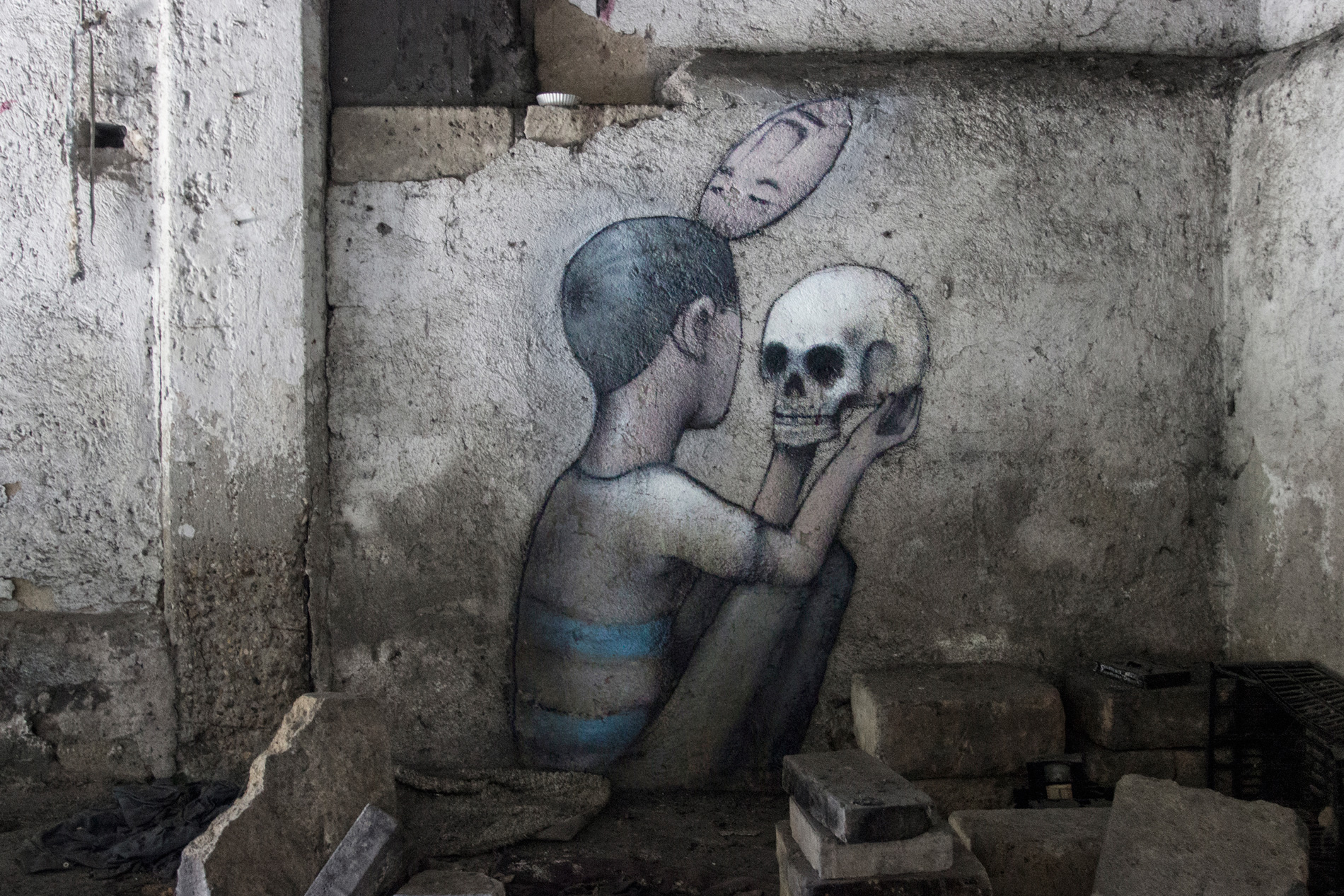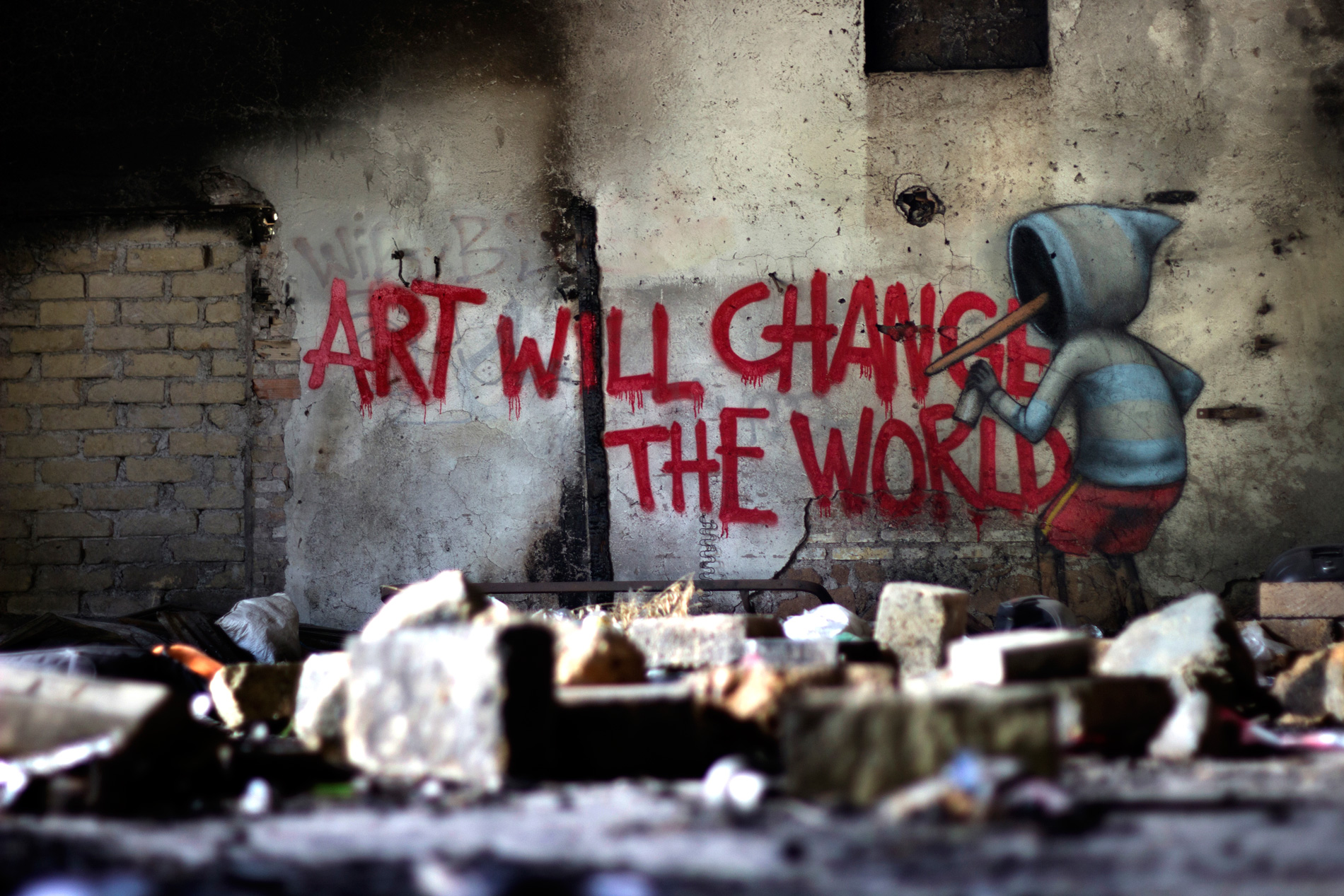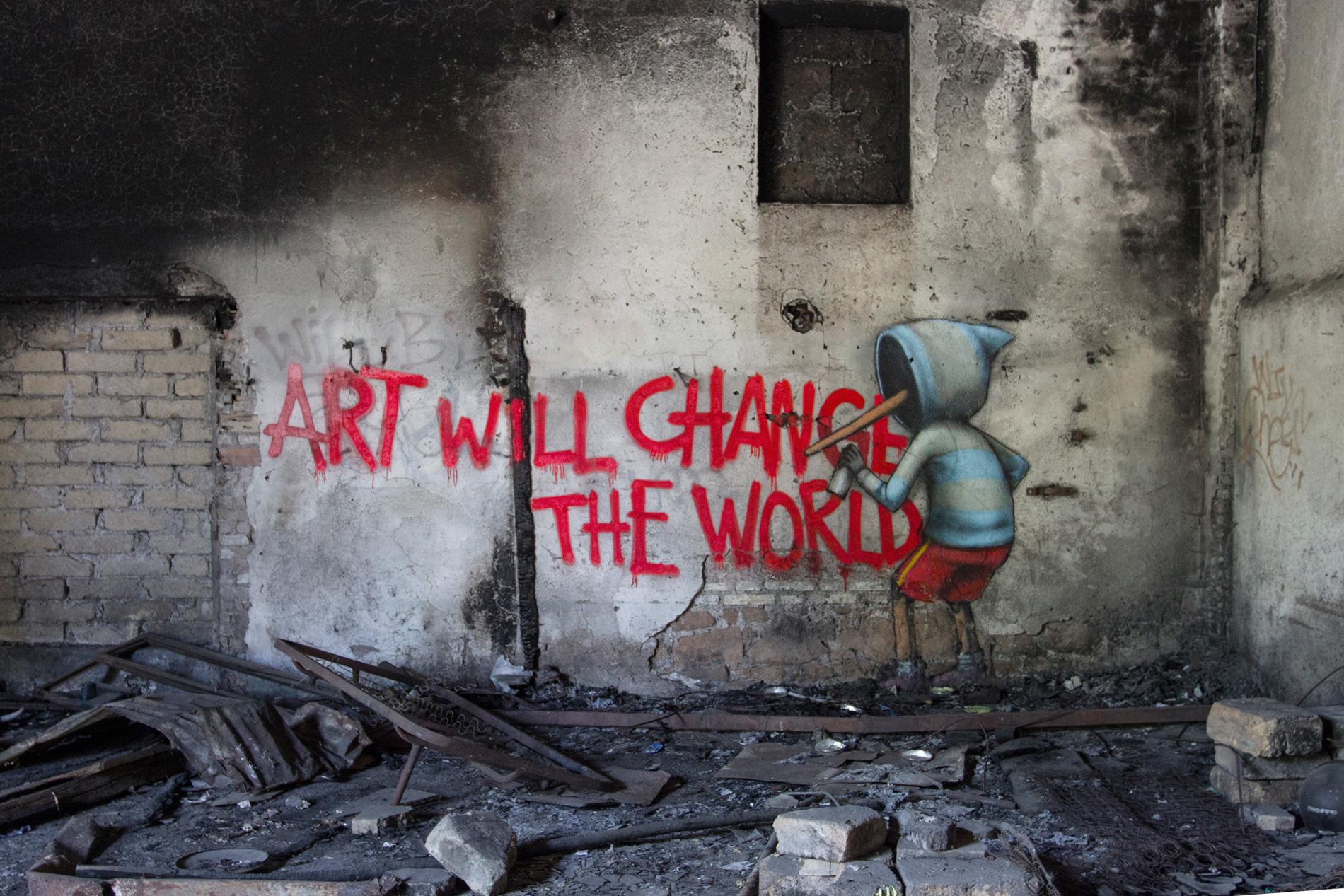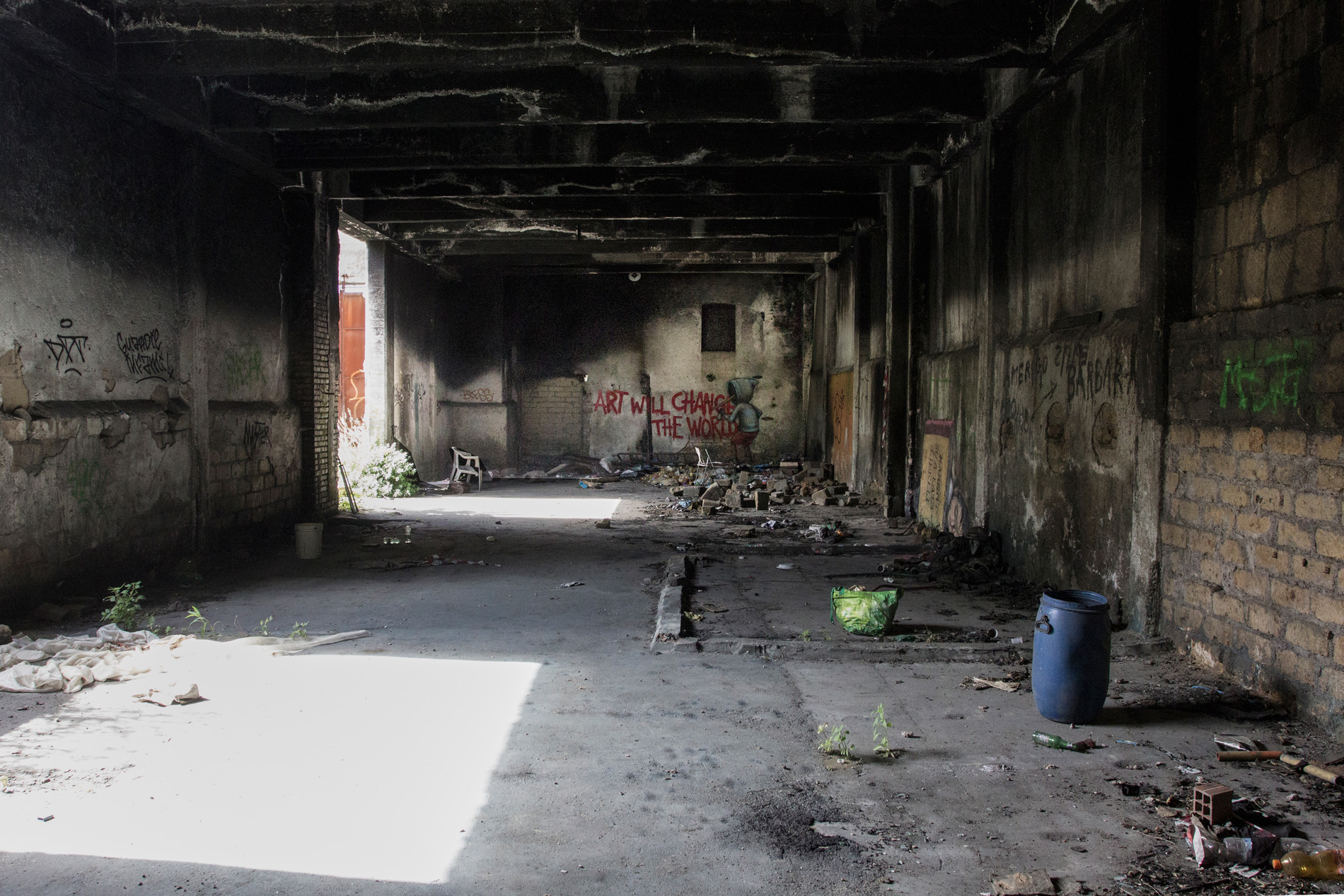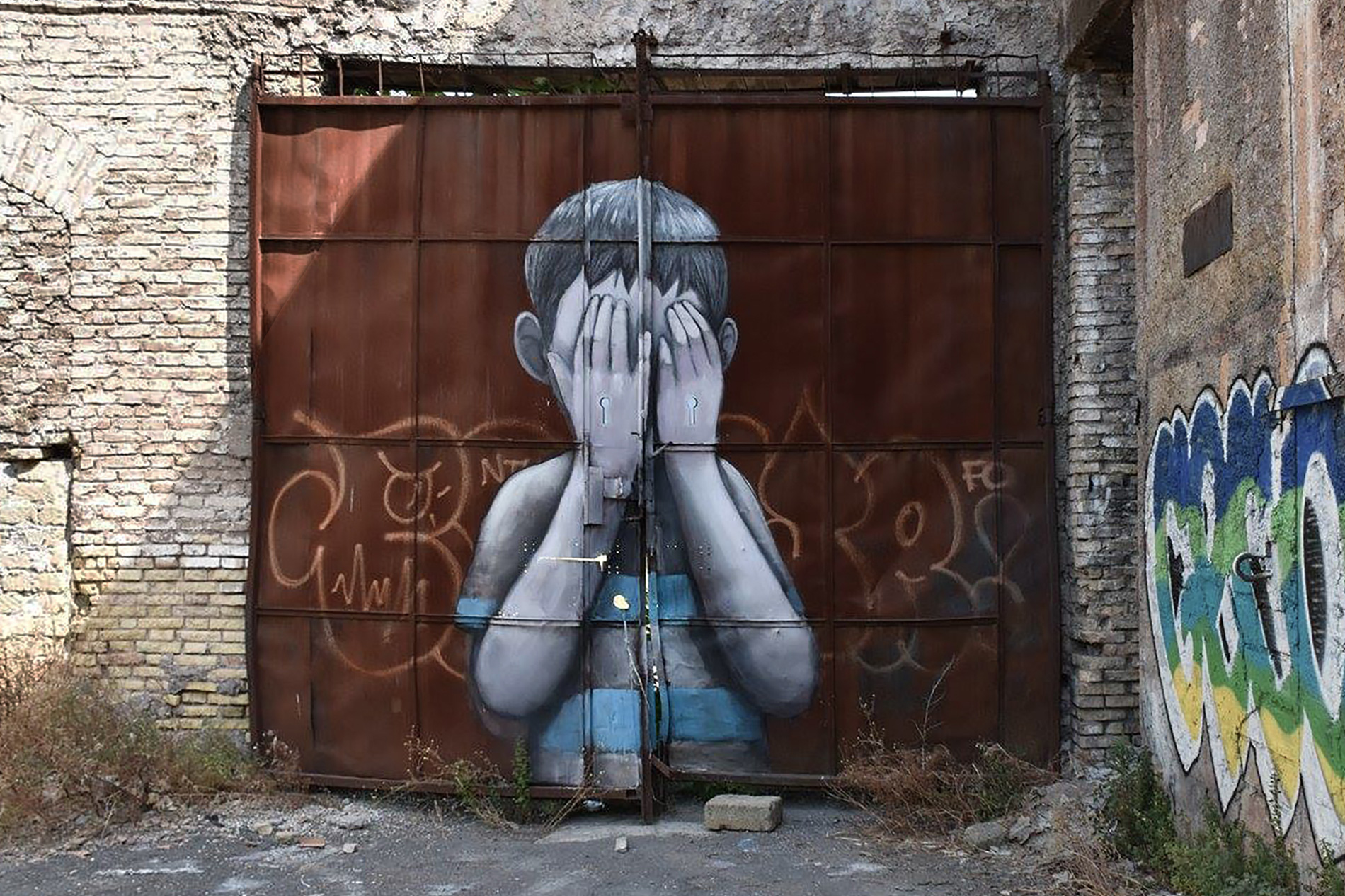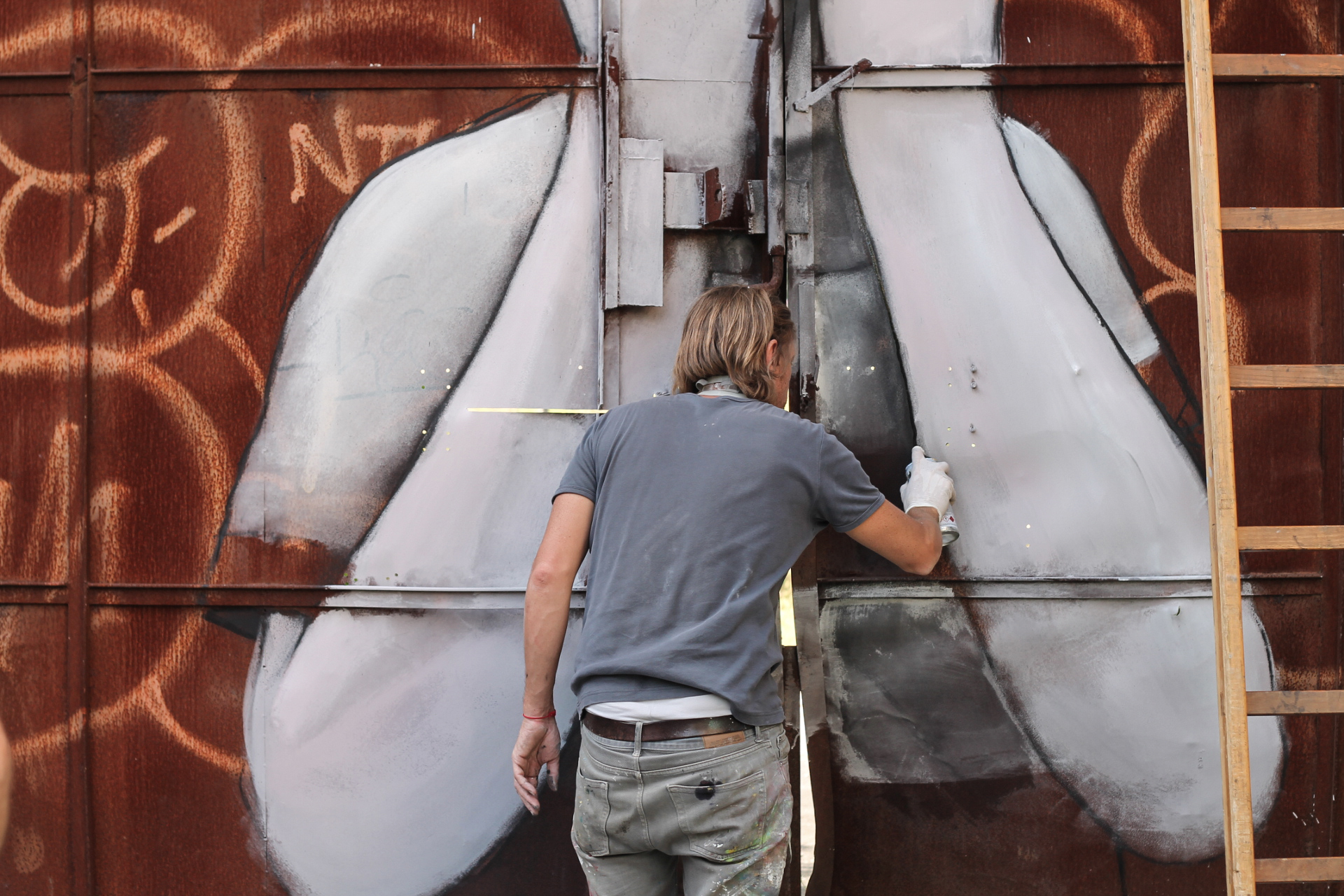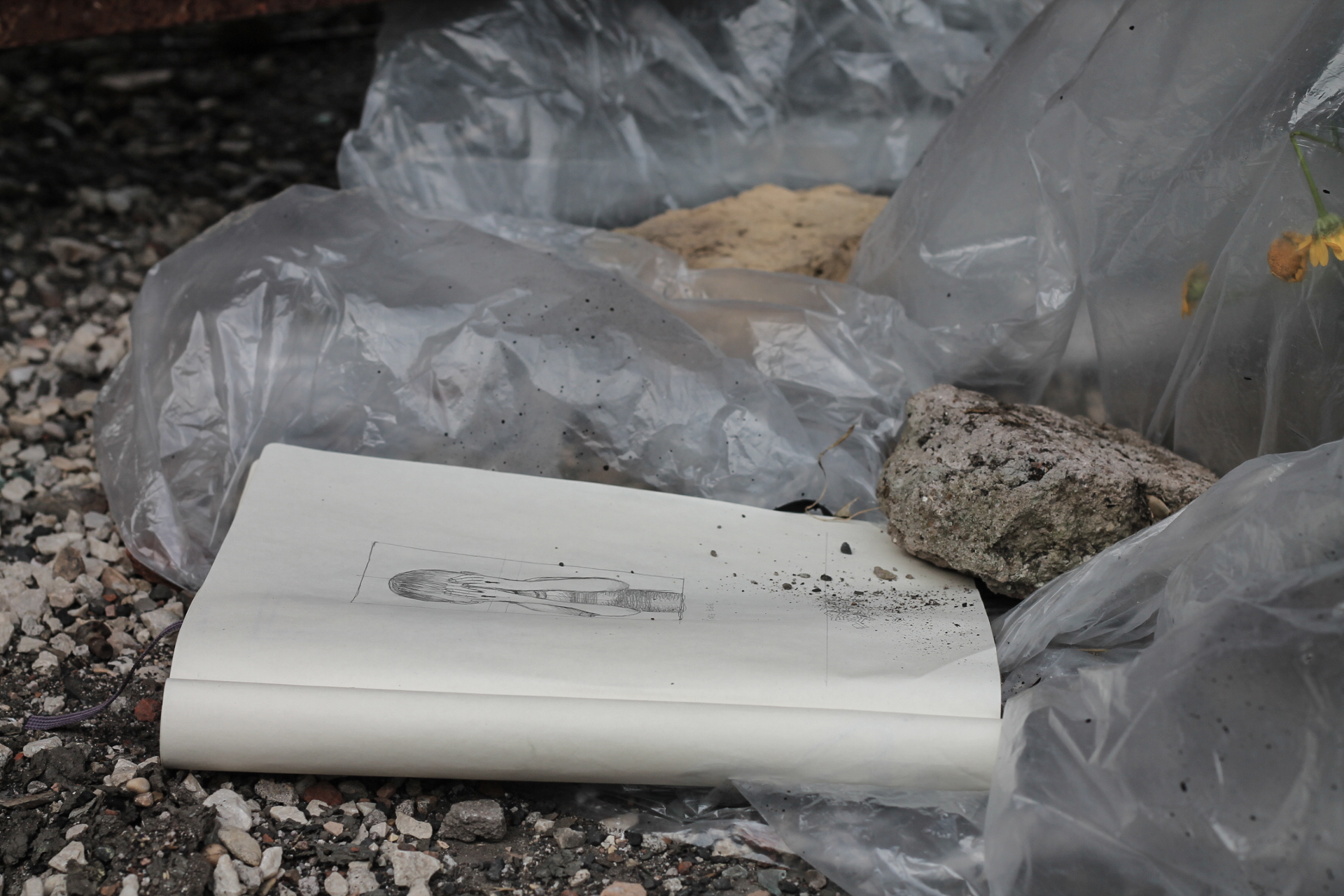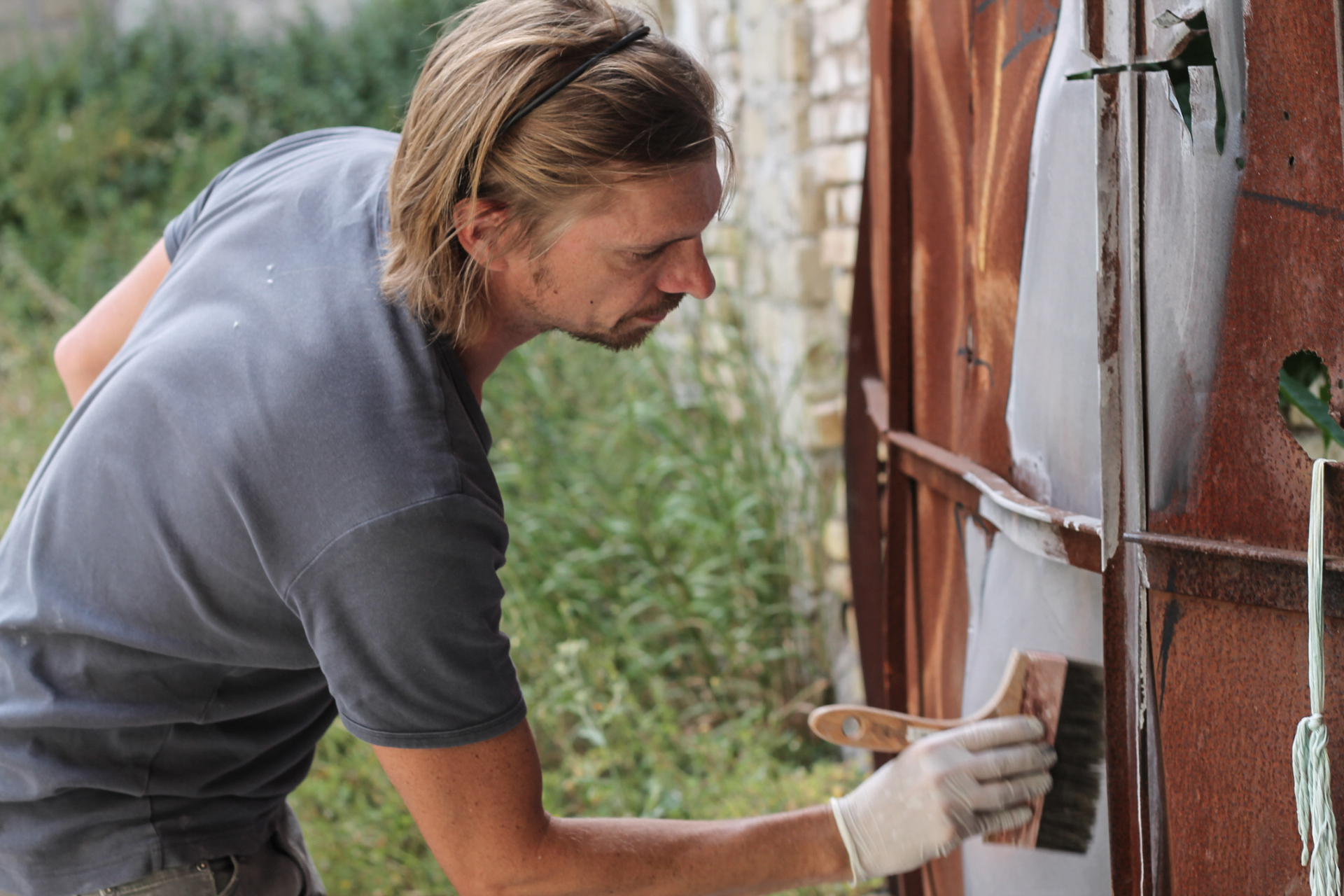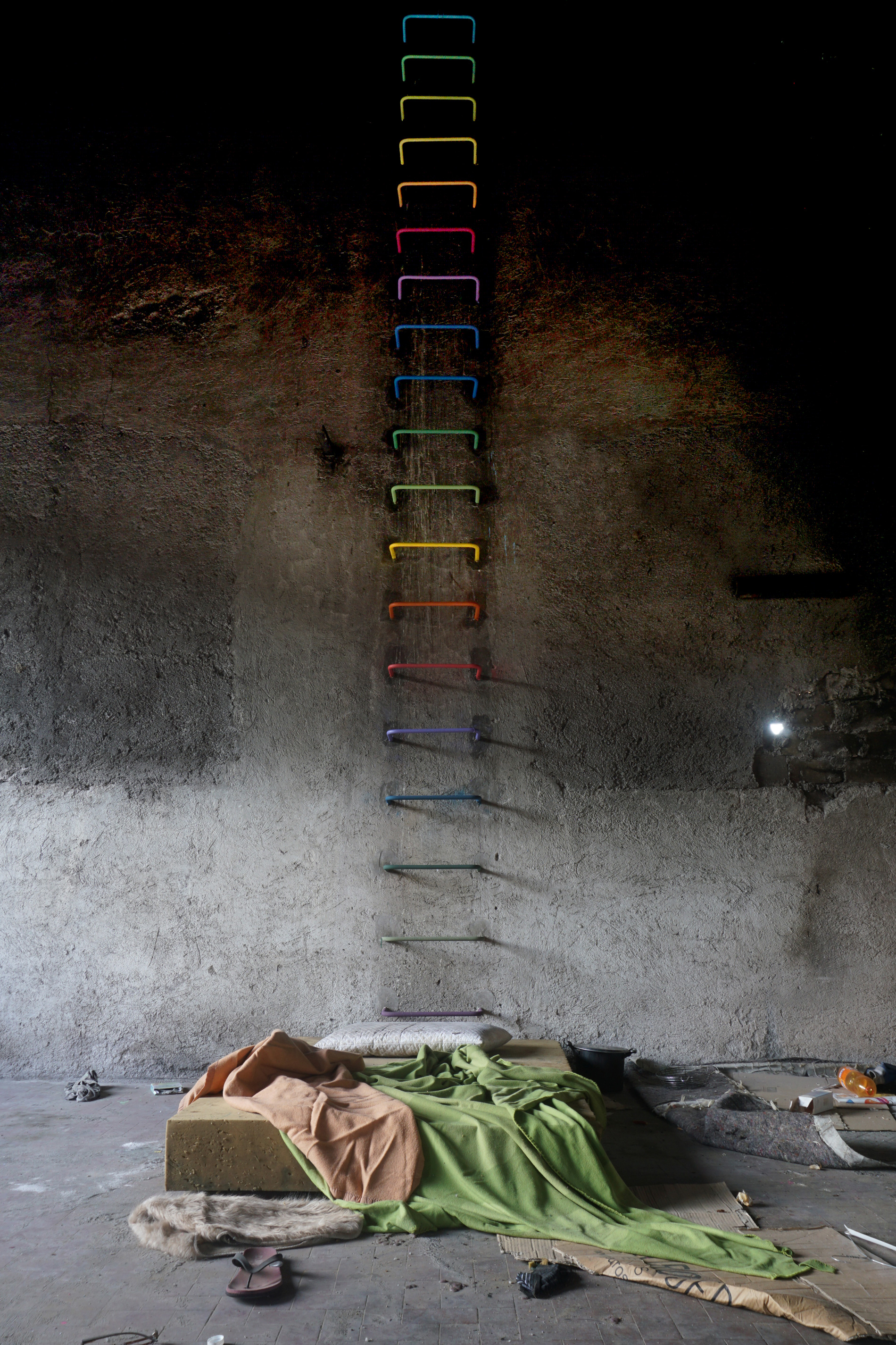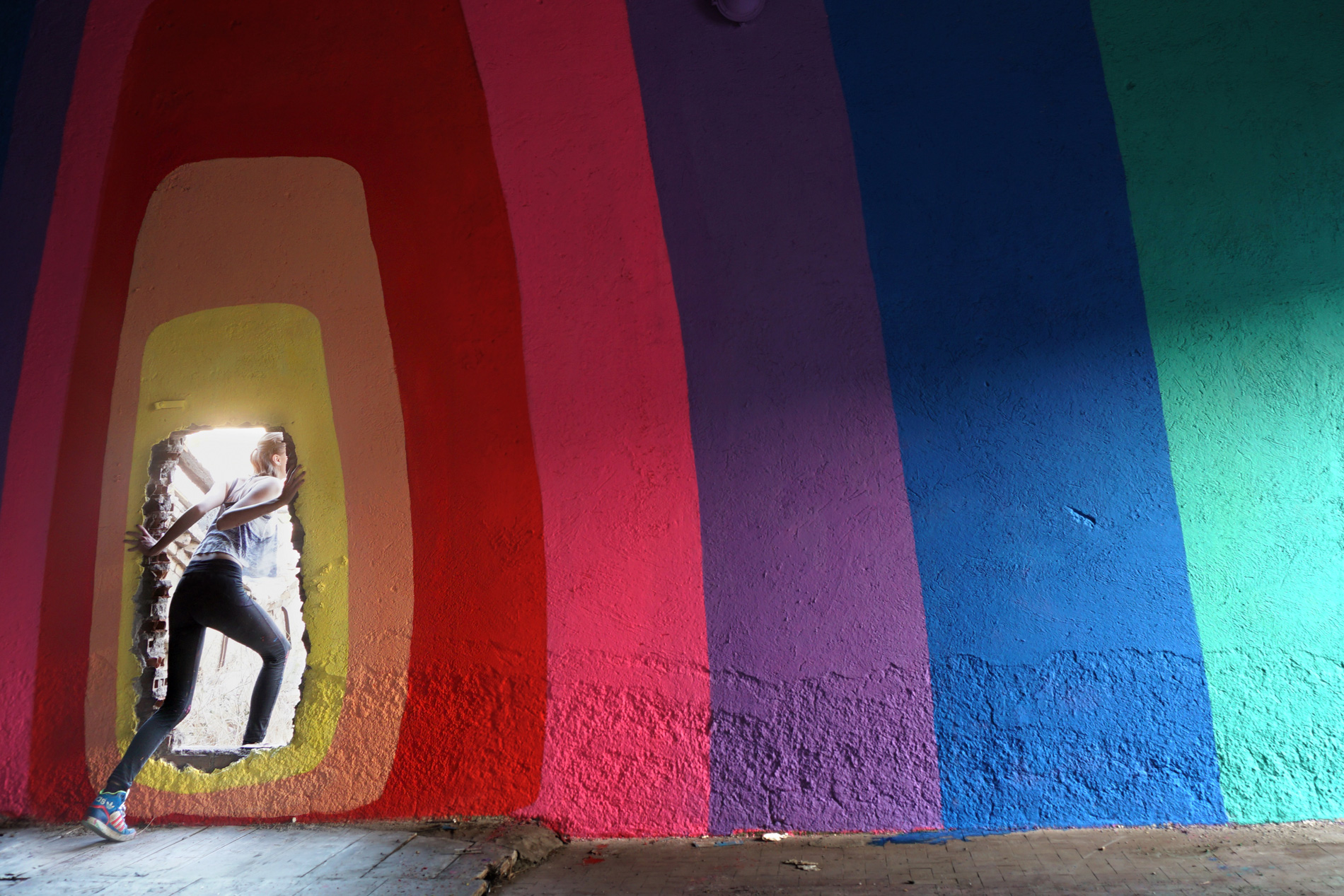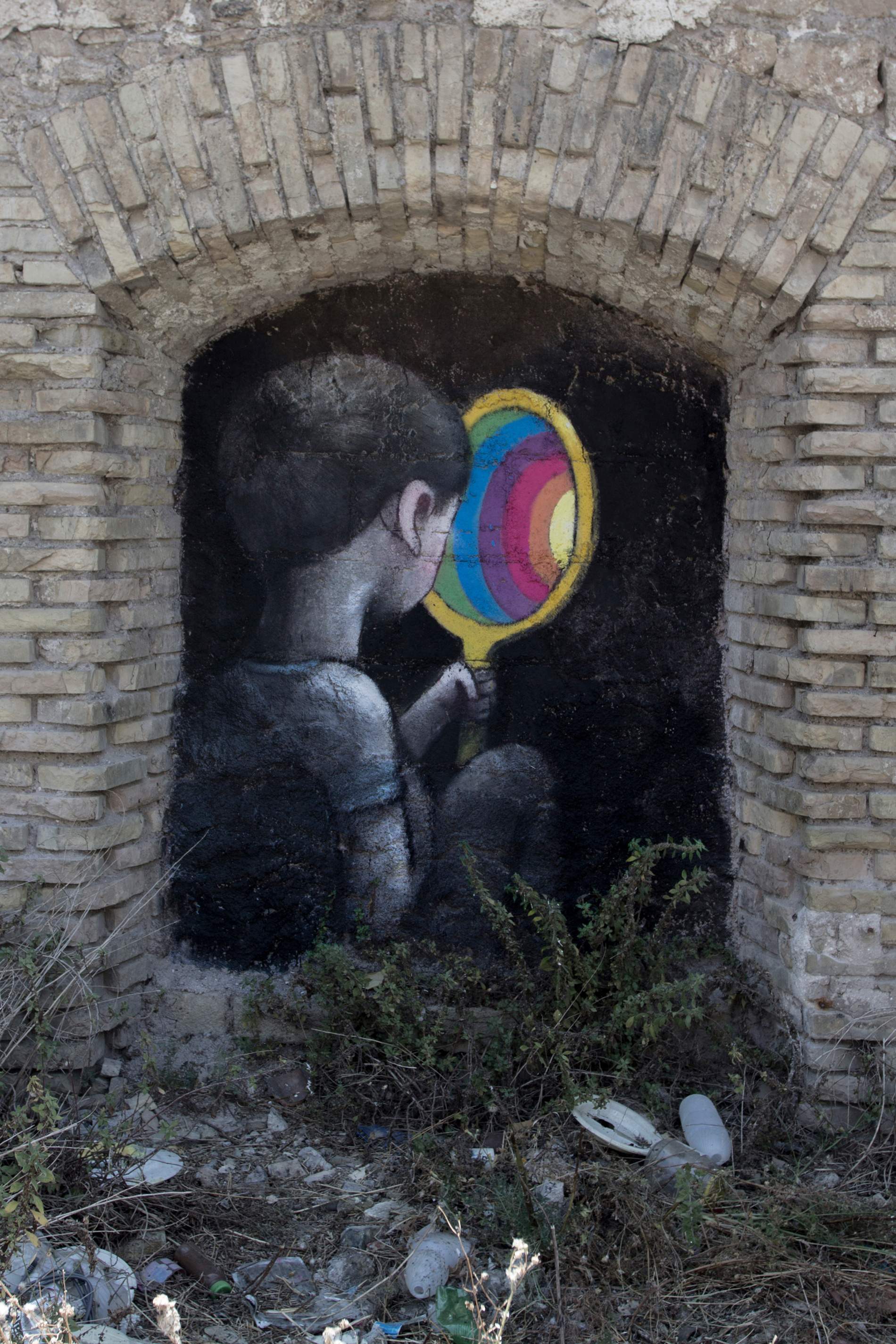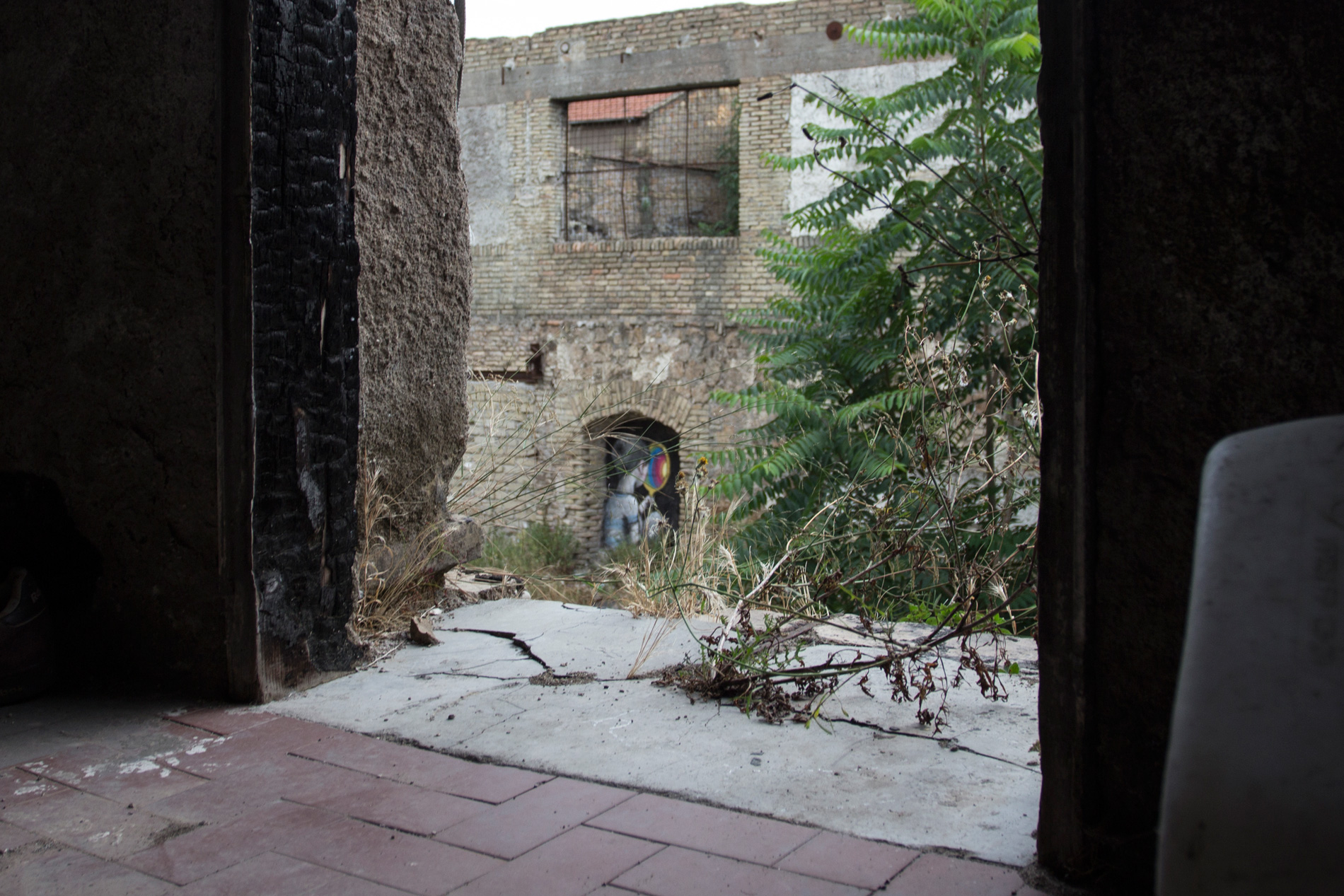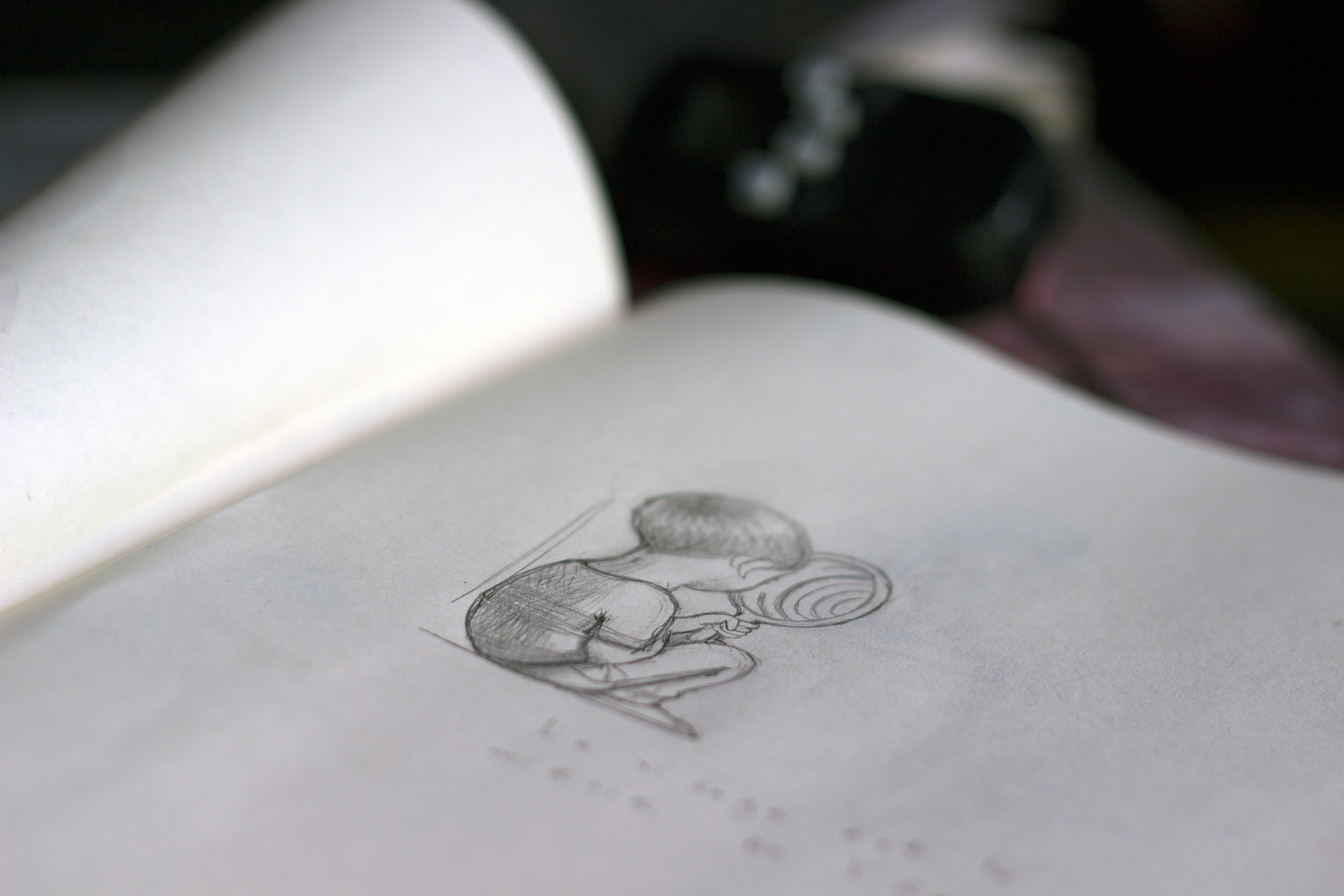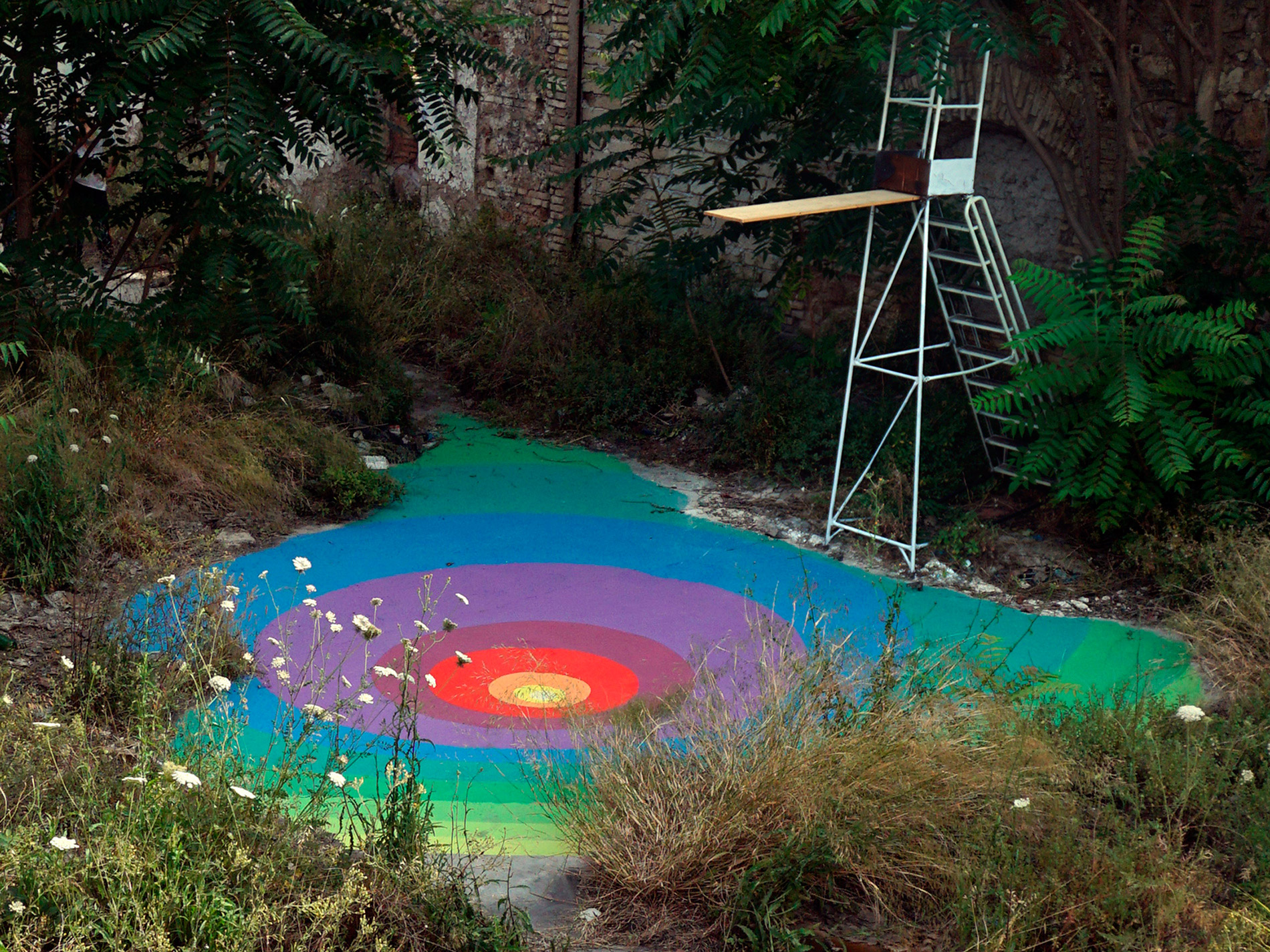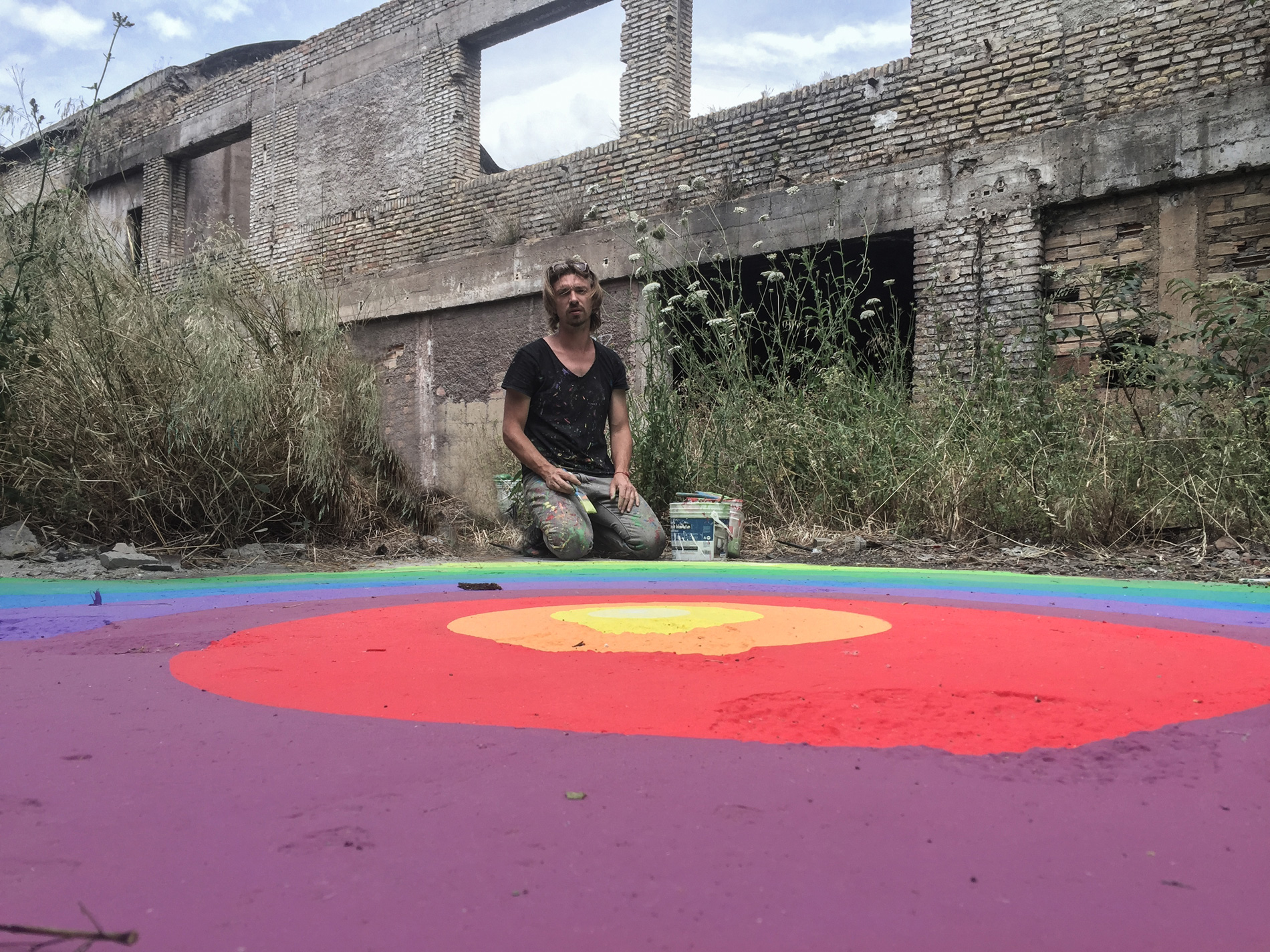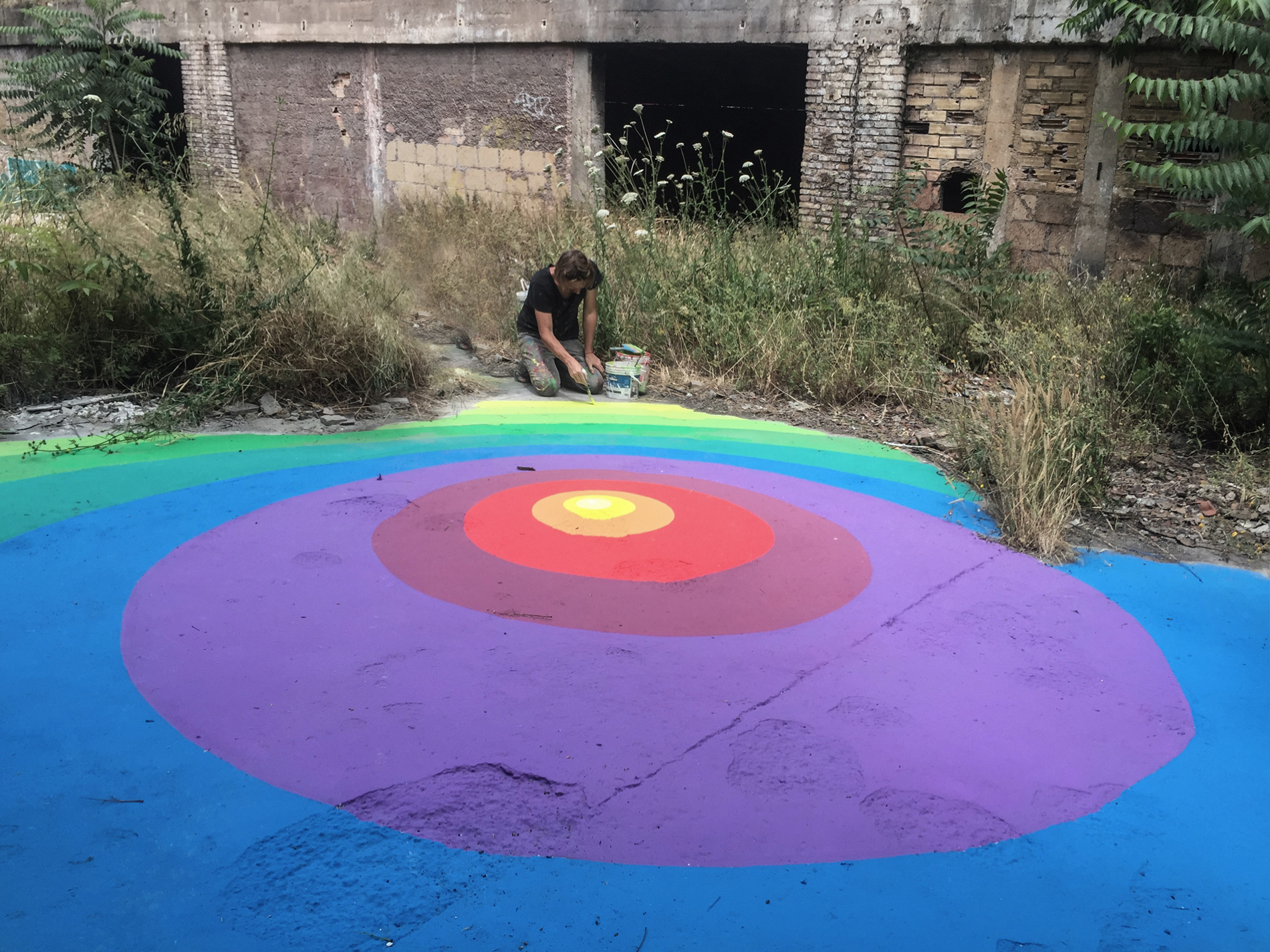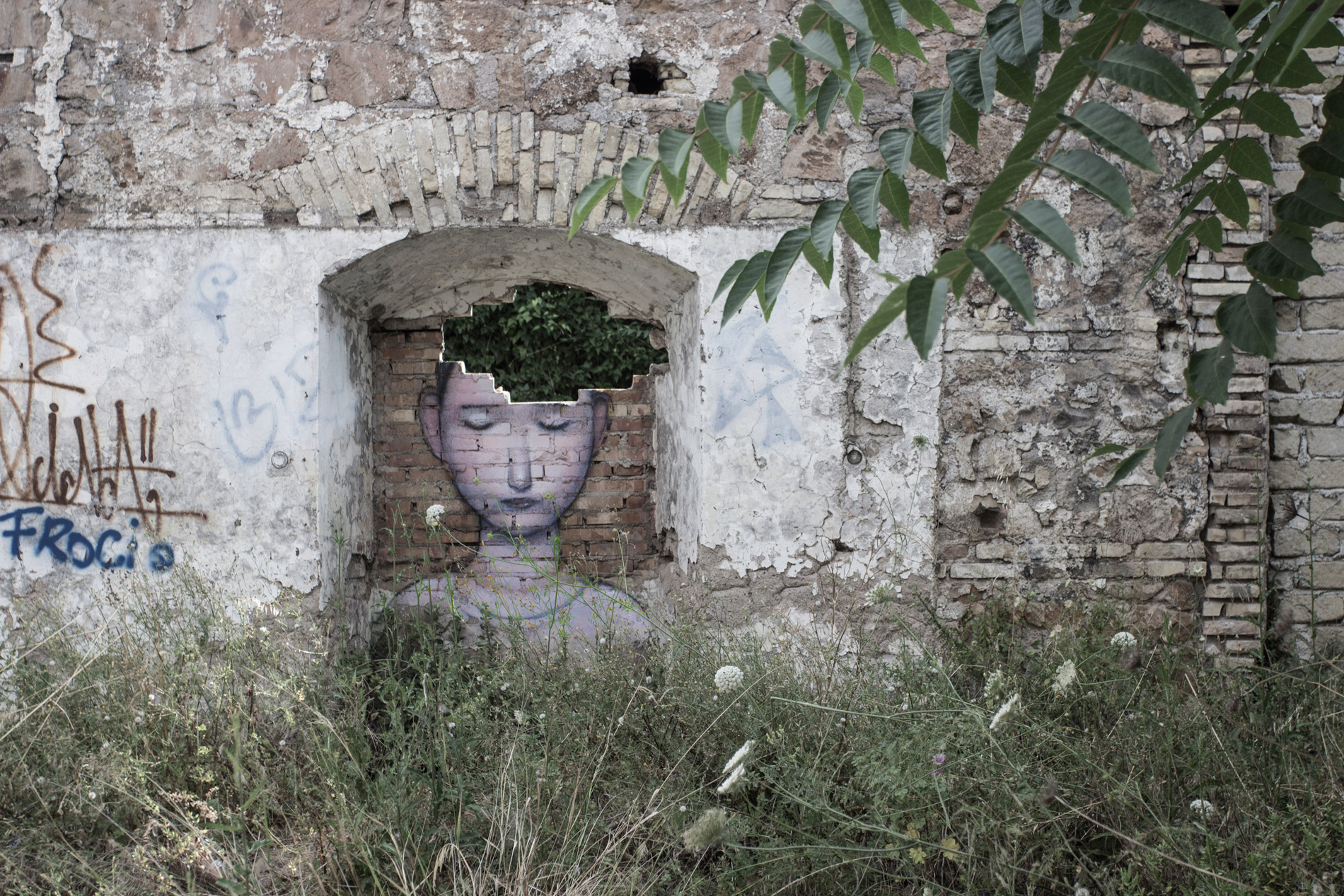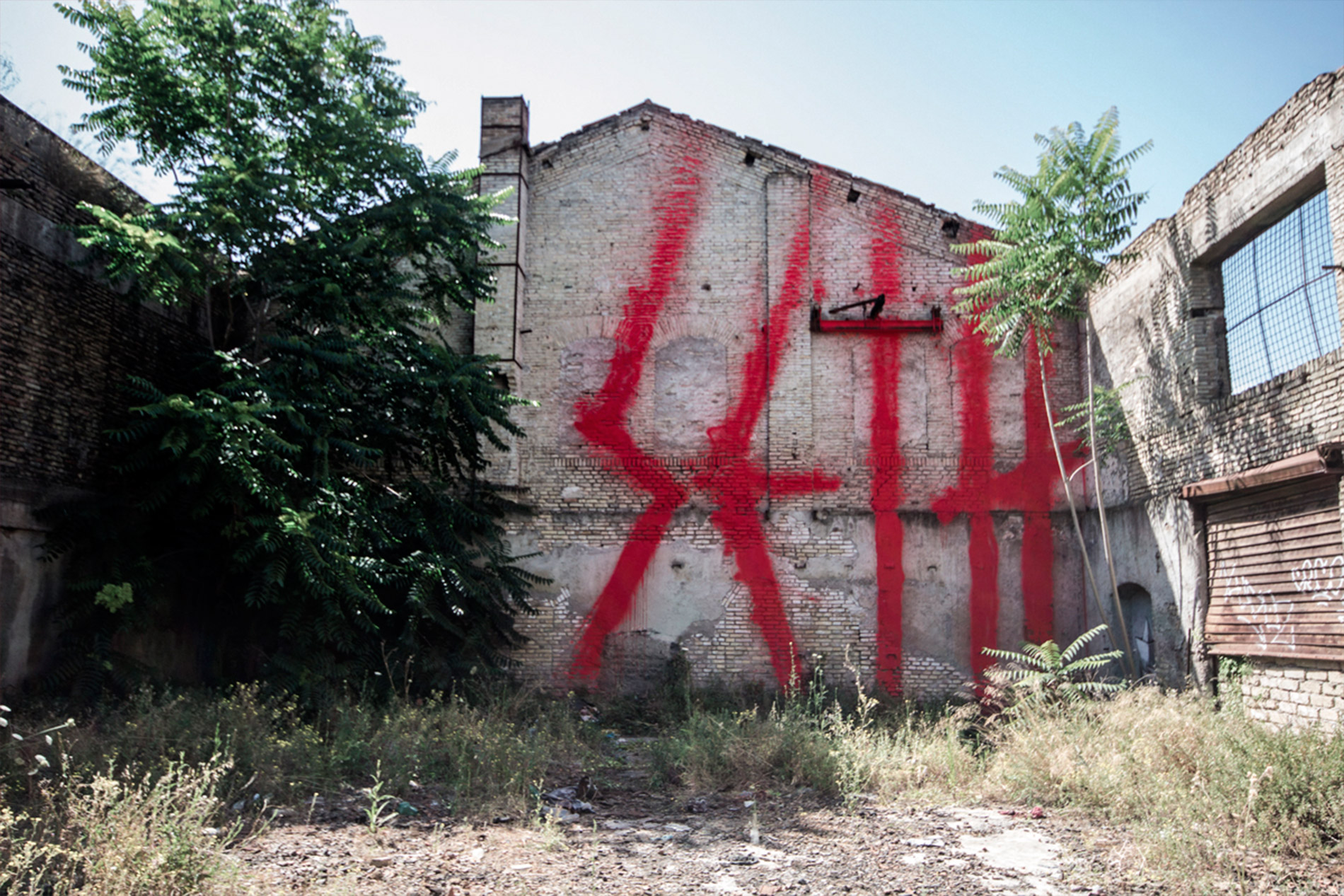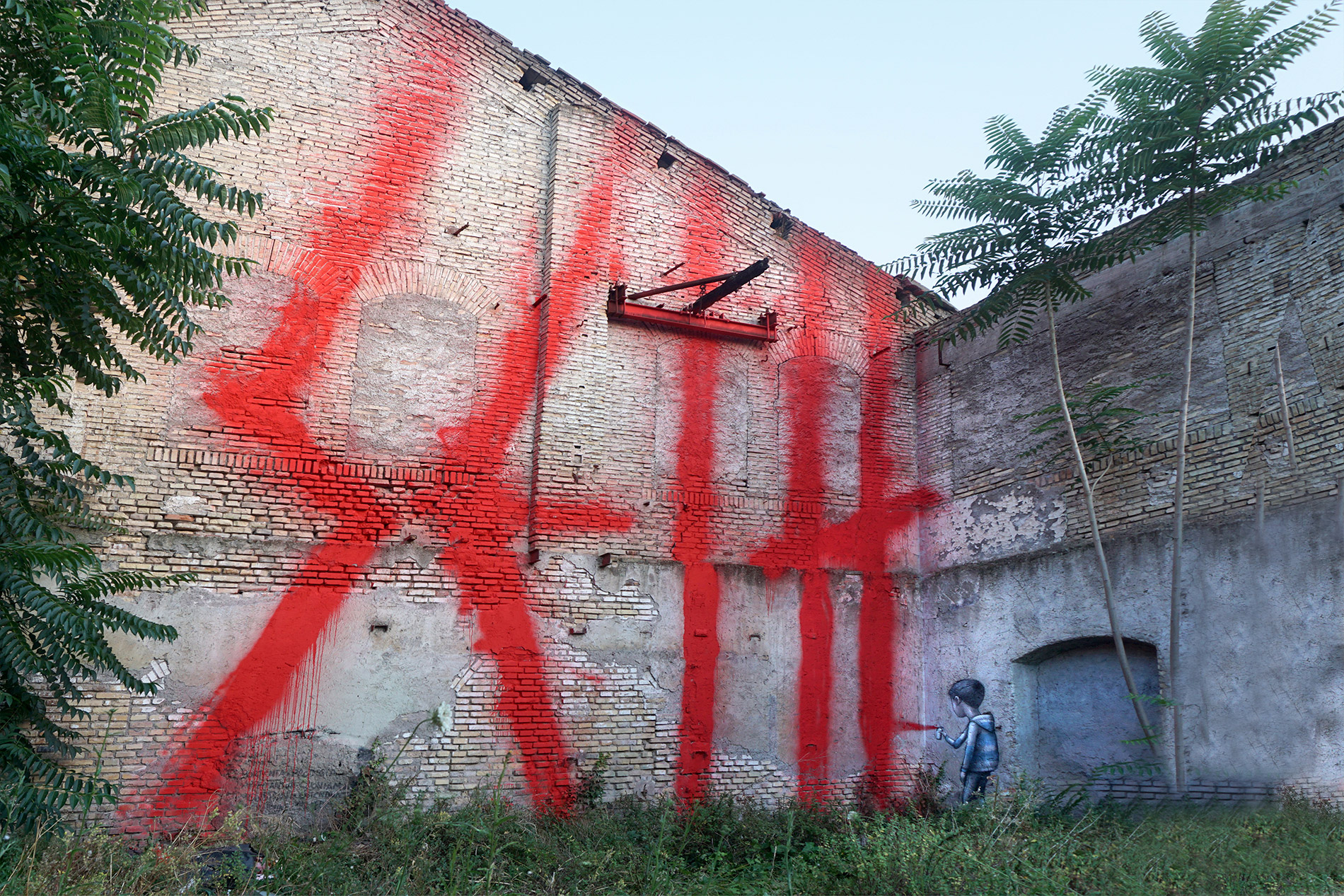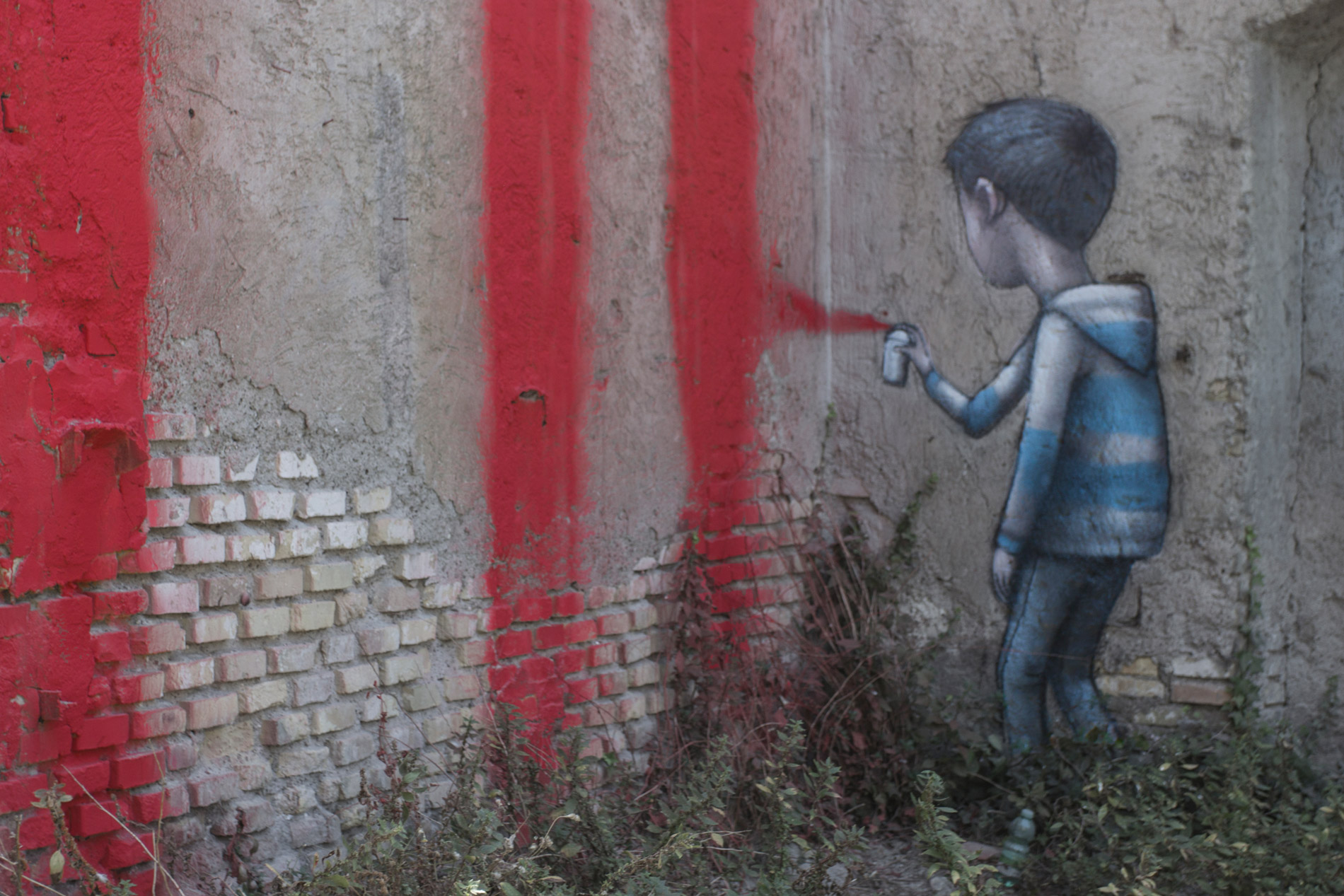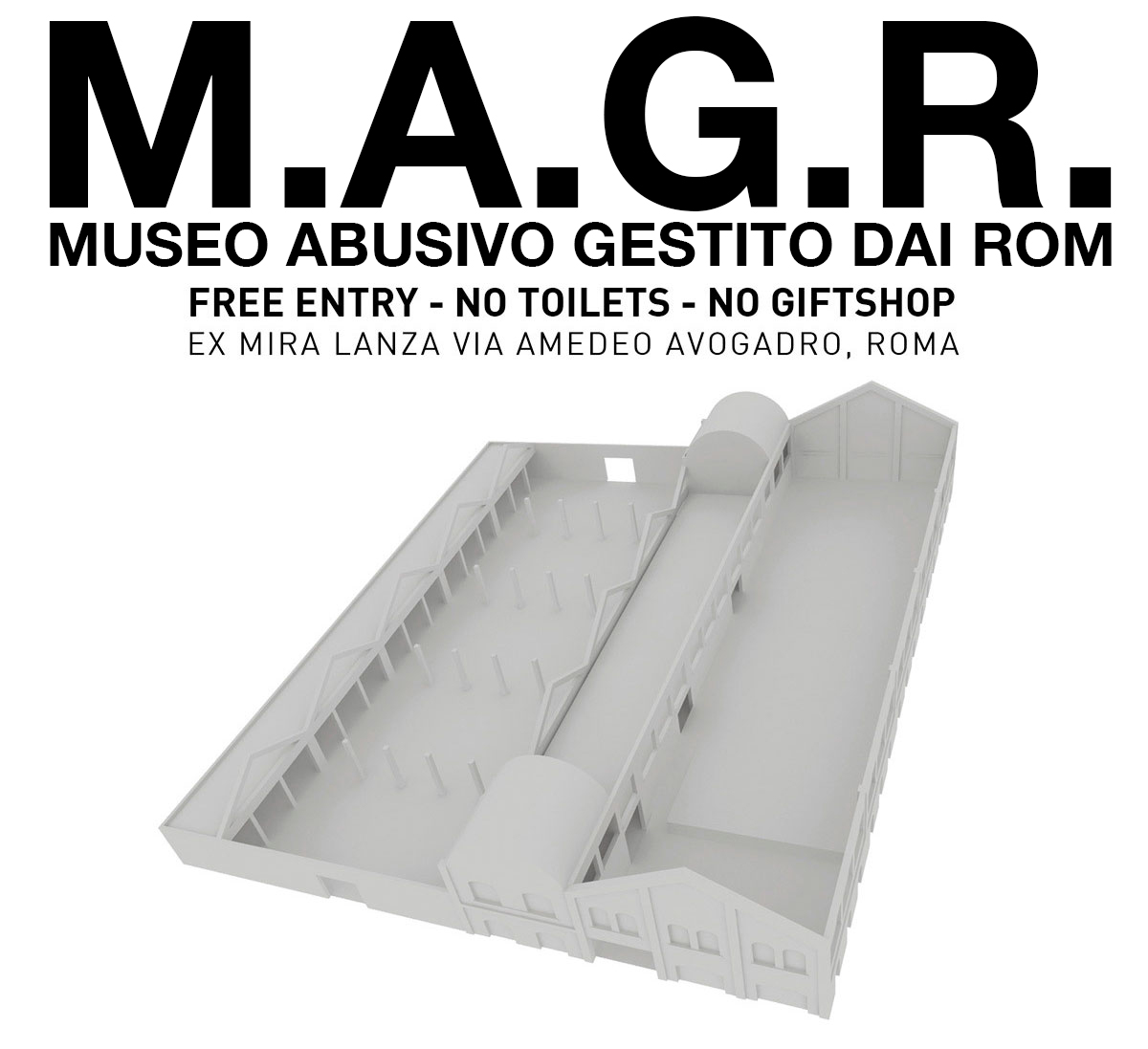
999FOUNDATION EX MIRA LANZA MUSEUM an Artist Resistance Residency project
SETH, RANGE TA CHAMBRE
Questo Museo sorge nella splendida area di archeologia industriale tra i quartieri Ostiense e Marconi di Roma negli stabilimenti dell’ex fabbrica Mira Lanza che ospita ora RANGE TA CHAMBRE, l’enorme intervento artistico site specific di Julien Malland a.k.a. Seth (Fr), 2500 mq di dipinti murali, installazioni, stanze segrete e generico vandalismo a cura di Stefano S. Antonelli.
EX MIRA LANZA MUSEUM / M.A.G.R. Museo Abusivo Getsito dai Rom – Director: Tito
Address: via Antonio Avogadro, first hole in the net behind garbage bins.
Phone: +393510317563 – Open 24/7 | Free entry | No toilets | No giftshop | No high heels | Yes Gypsies | Reception by Tito (Gipsy householder)
999FOUNDATION EX MIRA LANZA MUSEUM an Artist Resistance Residency project
SETH – RANGE TA CHAMBRE
This Museum arises from the ruins of a former soap factory hosting now RANGE TA CHAMBRE, an uncommissioned art intervention by Julien Malland a.k.a. Seth (Fr), 2500 square meters of wallpaintings, installations, secret rooms & generic vandalism in an abandoned municipality 1899 soap factory located in Ostiense district – Rome – curated by Stefano S. Antonelli
EX MIRA LANZA MUSEUM / M.A.G.R. Museo Abusivo Getsito dai Rom – Director: Tito
Address: via Antonio Avogadro, first hole in the net behind garbage bins.
Phone: +393510317563 – Open 24/7 | Free entry | No toilets | No giftshop | No high heels | Yes Gypsies | Reception by Tito (Gipsy householder)
EX MIRA LANZA MUSEUM / Art critic review
Tre mesi dopo l’inaugurazione dell’intervento di Seth all’ex Mira Lanza siamo tornati con Gianluca Marziani, direttore di un vero museo di arte contemporanea a Spoleto palazzocollicola.eu,, critico d’arte e curatore.
VIDEO: SETH / EX MIRA LANZA MUSEUM / Gianluca Marziani review
Three months after Seth’s intervention opening at former Mira Lanza factory in Roma we went back with Gianluca Marziani, a real contemporary art museum director in Spoleto palazzocollicola.eu, art critic and curator.
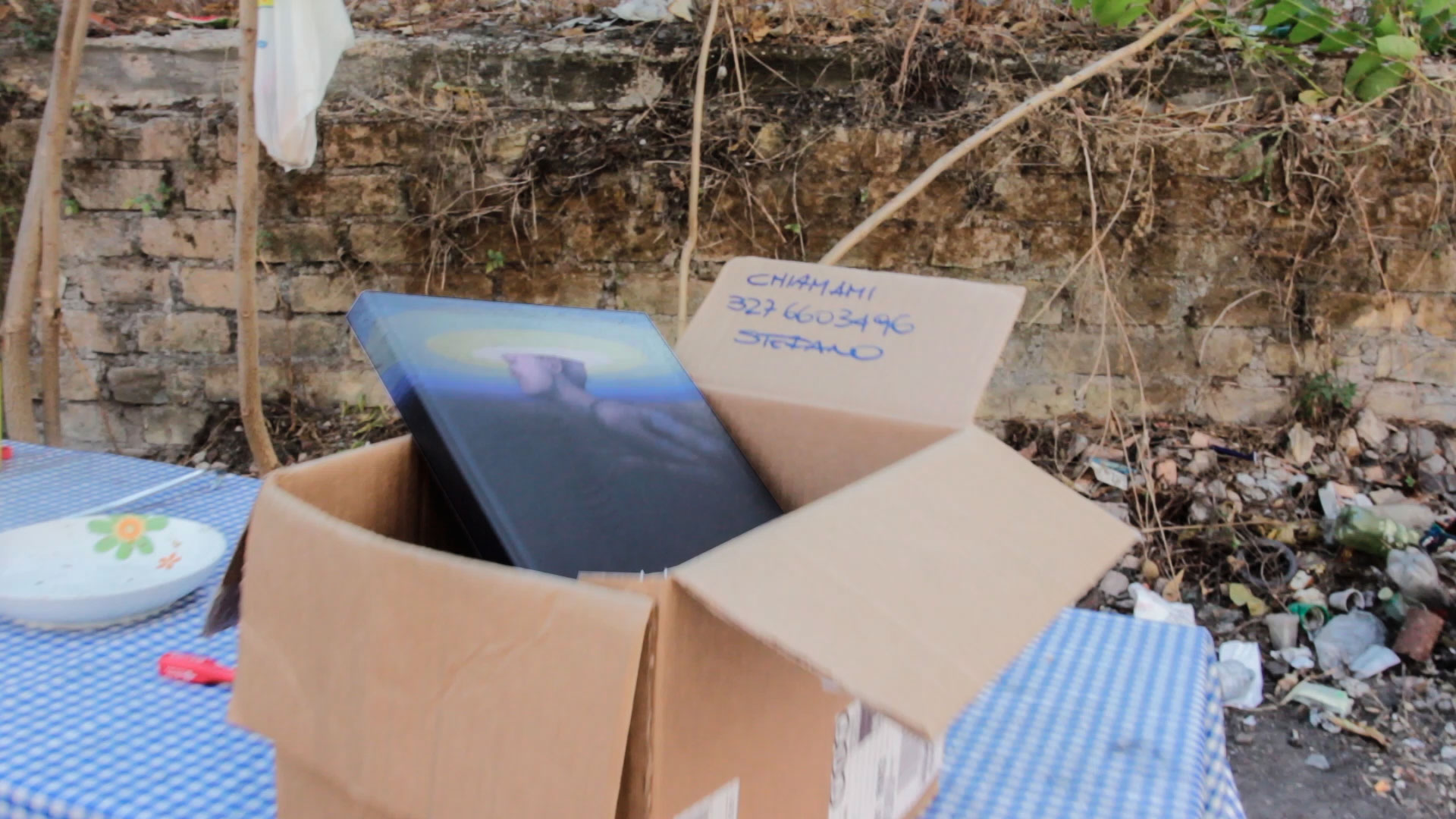
BUY THE BOOK / COMPRA IL LIBRO
Compra il libro online qui / Buy the book online here
ENG / Published by Wasted Talents it’s a 150 pages hardcover color book! It’s full of images and just few words, pictures and book composition was made by Seth himself.
// 30€ at Museum bookshop (ask for Tito) or drop us a line here: studio@999contemporary.com
ITA / Pubblicato da Wasted Talents é un volume di 150 pagine con copertina rigida interamente a colori! E’ pieno di immagini e pochissime parole. Foto e composizine del libro sono stati realizzati da Seth stesso.
// 30€ al bookshop del museo (chiedere di Tito) o scriveteci qui: studio@999contemporary.com
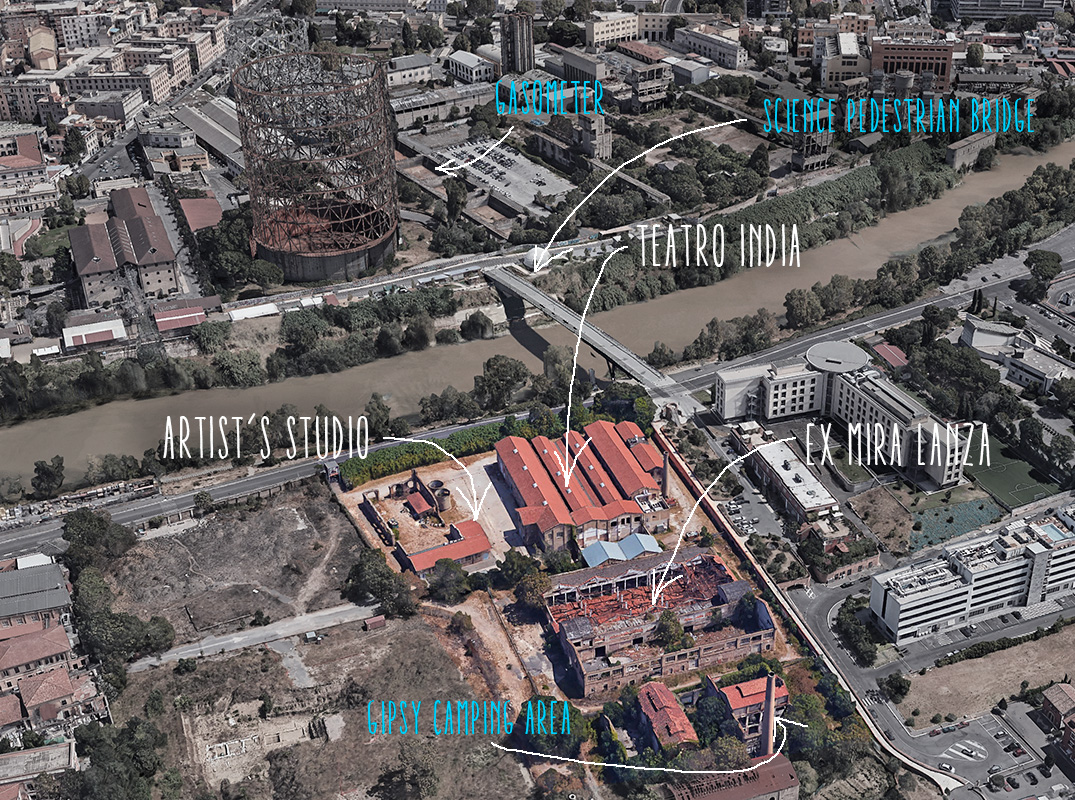
I asked Seth to trigger a project both ambitious and simple, an artist residency in collaboration with city of Rome theatre called Teatro India. This place offers huge opportunities for an artist, three large industrial sheds and a park with industrial archaeological vestiges. This residency program has no obligations. You can organise a show, make a book, plan an installation or nothing at all, you can do whatever you want. I asked only one thing, I asked the artist to work in the space, to use possibly all the structure of the teather, even if it is not an obligation. How did it go?
“ The futility of things makes us sad and that brings trouble | L’inutilità delle cose ci rende tristi e questo porta guai “
Vincenzo Lezzi a.k.a. il Bove
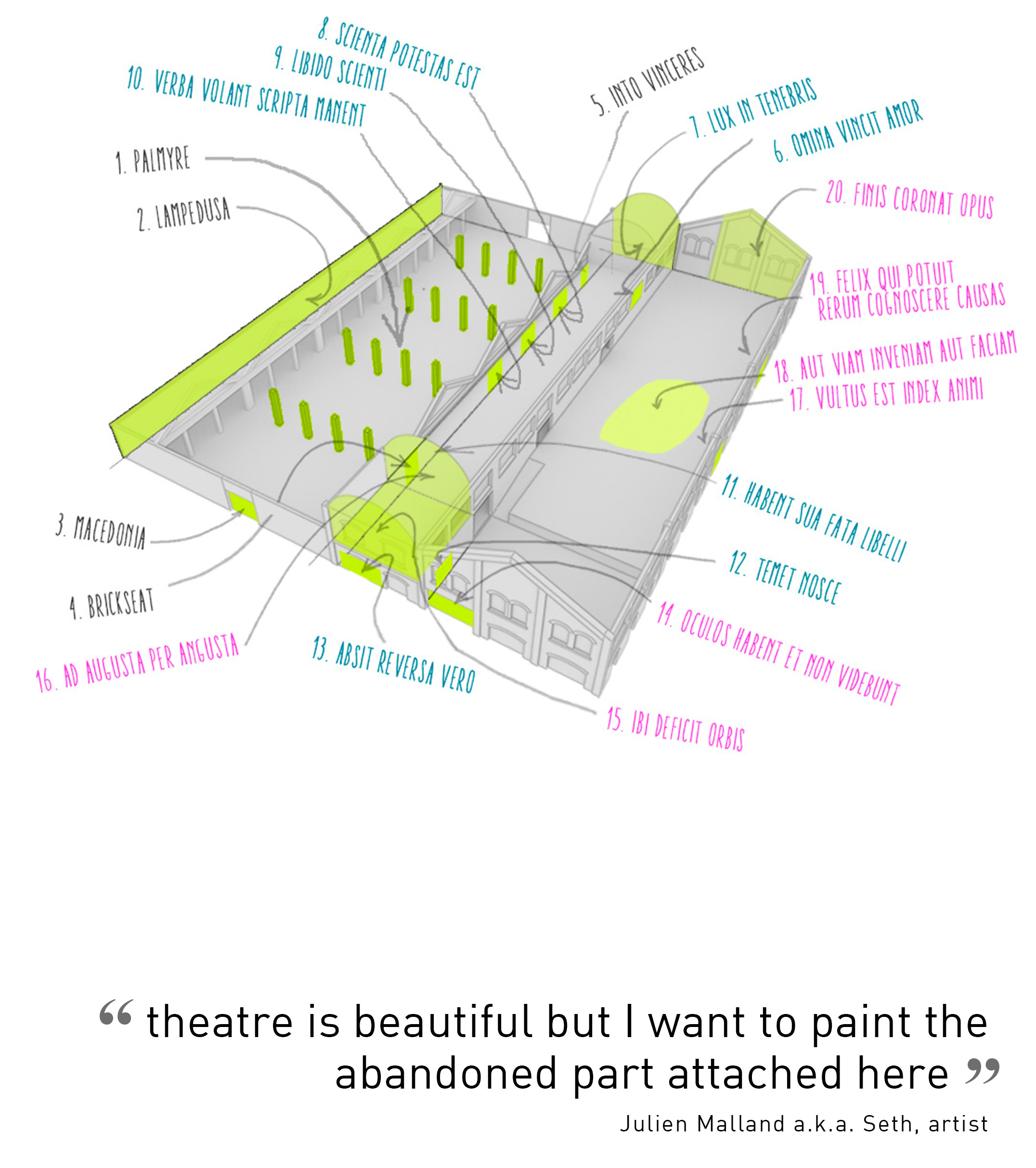
SETH, RANGE TA CHAMBRE (SETH, TIDY YOUR BEDROOM)
After two days hanging on the theater space Seth came to me saying: “theatre is beautiful but I want to paint the abandoned part attached here”. The Teatro India is located in the industrial≠archeology site of the former Mira Lanza factory dating back to 1899, then restored in 1999. Only one third of the former factory was restored, however, the other two thirds lie beside it really abandoned since the eighties. It `s a structure that belongs to us, it is ours, yours and was given to the municipal administration that has reduced it to a wreck. A part of that structure was occupied for housing emergency issues and during the evacuation in 2014 the occupants put it on fire. The large central industrial shed has collapsed and so it remained. A destroyed place, full of garbage, shit and rubble. Former Mira Lanza is one of the most beautiful example of indusrial archaeology Rome has, it’s also an ideal bridge between Marconi and Ostiense districts but residents don’t even know Mira Lanza still exists. To abandon such wealth, such symbol of our history isn’t a form of vandalism? Well, if the state vandalizes public properties, with a civil disobedience act we choosed to de≠vandalize the site re≠vandalizing it, bacause if first graffiti cover the city second graffiti discover the city. Between the incredible Teatro India spaces Seth was attracted by the missing part, the abandoned one, because it is there that art can be effective and maybe offer a service to the community and not just to herself. “Range ta chambre” means “clean up your room”. It is the title that Seth has chosen for this exhibition, it is the phrase that your mother tells you when you have better things to do. So then she does it herself. And then, when your bedroom becomes the world, you can’t even imagine to clean up this room, it’s just impossible. Even just thinking of doing it is epic and heroic
“the state vandalizes public properties abandoning them, then we decided to de≠vandalize the property re≠vandalising it”
Stefano S. Anotnelli, project curator
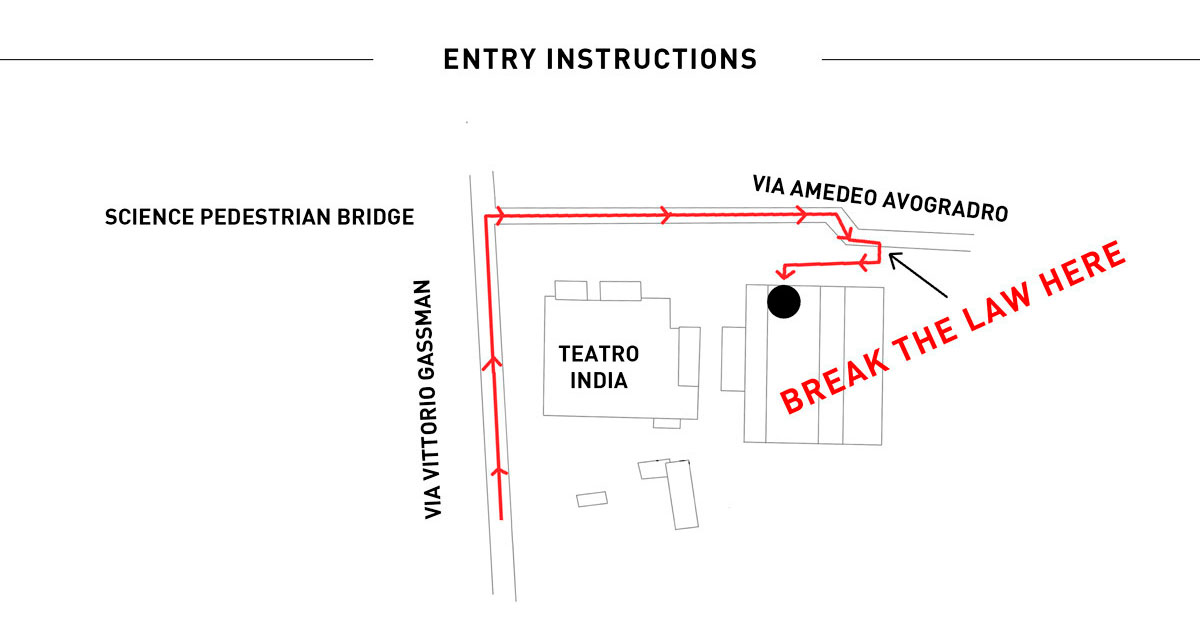
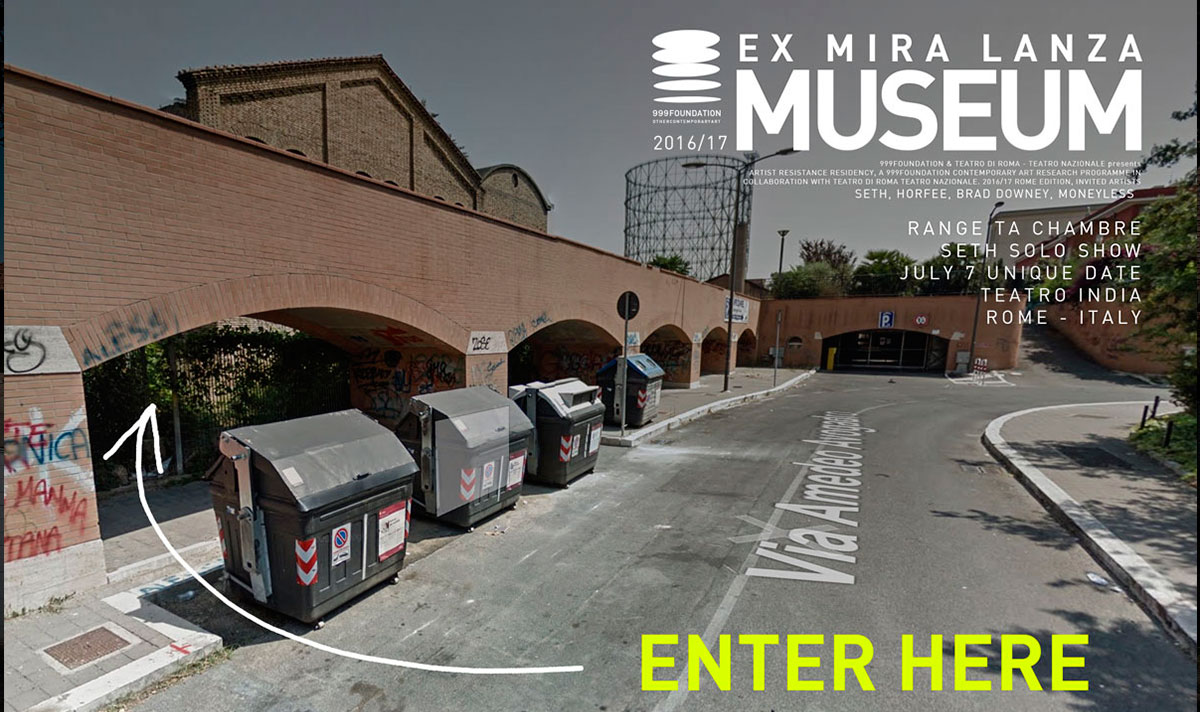
Whitout anyone knowing and under our personal legal, moral and ethic responsibility
for two months, Seth and I trespassed unauthorized a private property. For two months Seth painted, ate, climbed, slept, sweated, was injured and all this for nothing, nothing of what has been done is to last, but we hope, over dacay, ruin and rubbish, we did something that will bring you there, to discover this space. There is a huge amount of books burned at Mira Lanza, books burned are never a good thing and then in a whole gallery Seth talks about books, what they are, what they are for. The great collapsed space has still the marks of the occupants, their despair, and the second gallery is dedicated to this issue, figures embedded between need and resignation, but there is not much else to explain, if street art has to be explained, there is something wrong. Just look at it and if you remain open≠mouthed, then it means that the work is well done. Now, the Mira Lanza factory is a schizophrenic place as the world we live in, as the future that awaits us. Garbage and Beauty, shit and wonder. If you want to see the “show” by Seth, wear hiking shoes and do not expect hung paintings and a waiter with flutes, the price to pay is an act of civil disobedience
You may enter through the gap in the network at Via Amedeo Avogadro. Once inside look at the site around you and imagine how it could be, and if you like it take it back, clean it and let your children play inside, they will be in good company. Whether or not they are still visible, this place is full of children, full of hope. Enter through the gap in the network at Via Amedeo Avogadro, then enter the space through the small metal gate chink. Once inside look at the site around you and imagine how it could be, and if you like it take it back, clean it and let your children play inside, they will be in good company. Whether or not they are still visible, this place is full of children, full of hope.
Stefano Antonelli | 999contemporary.com.
INSTALLATION MAP
ARTWORKS
MAIL US TO BOOK A FREE GUIDED TOUR WITH THE CURATOR!
exmiralanza@999contemporary.com
PALMYRE, 2016
Acrylic on standing columns, 28 x 14 mt
Site specific installation
LAMPEDUSA, 2016
Spraycan on walled up windows, 32 x 1,8 mt
Site specific installation
MACEDONIA, 2016
Barbed wire, found clothes and clothespins, 4,4 x 2,6 mt
Site specific installation
BRICKSEAT (Brexit), 2016
Spraycan on wall and acrylics on brick, 2,3 x 1,6 x 1,2 mt
Site specific installation
INTO VINCERES, 2016
Spraycan on walL, 2,2 x 1,6 mt
Site specific wallpainting
OMNIA VINCIT AMOR, 2016
Spraycan on wall, 2,2 x 1,6 mt
Site specific wallpainting
LUX IN TENEBRIS, 2016
Acrylics and spraycan on wall, 9,3 x 8,7 mt
Site specific wallpainting
SCIENTA POTESTAS EST, 2016
Spraycan on wall & in site found objects, 3,6 x 2,4 x 1,3 mt
Site specific installation
LIBIDO SCIENTI, 2016
Spraycan on wall and found books, 2,2 x 1,8 mt
Site specific installation
VERBA VOLANT SCRIPTA MANENT, 2016
Spray can and scratched graffiti on wall, 2,2 x 1,8 mt
Site specific installation
HABENT SUA FATA LIBELLI, 2016
Spraycan on wall, 1,4 x 1,6 mt
Site specific wallpainting
TEMET NOSCE, 2016
Spraycan on wall, 1,2 x 0,8 mt
Site specific wallpainting
ABSIT REVERSA VERO, 2016
Spraycan on wall, 3,7 x 1,8 mt
Site specific wallpainting
OCULOS HABENT ET NON VIDEBUNT, 2016
Spraycan on rusty metal gate, 3,4×1,9 mt
Site specific wallpainting
AD AUGUSTA PER ANGUSTA, 2016
Spray can on metal steps and found objects, 4,8 x 1,4 (max) x 0,8 mt
Site specific installation
IBI DEFICIT ORBIS, 2016
Acrylic on wall, 4,6×4,8 mt
Site specific wallpainting
VULTUS EST INDEX ANIMI, 2016
Spraycan on wall, 1,7 x 0,9 mt
Site specific installation
AUT VIAM INVENIAM AUT FACIAM, 2016
Acrylic on concrete floor, metal and wood, 4,2 x 4,8 mt
Site specific installation
FELIX QUI POTUIT RERUM COGNOSCERE CAUSAS, 2016
Spraycan on wall, 1,6×0,7 mt
Site specific installation
FINIS CORONAT OPUS, 2016
Ariless sprayed acrylic on wall, 12,4×6,6 mt
Site specific installation
CURATOR’S TEXT by Stefano S. Antonelli
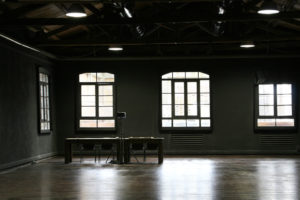 This is the story of a two-month escape from the swamp where culture, art and in general contemporary expression stagnate. I asked Seth to trigger a project both ambitious and simple, an artist residency in collaboration with city of Rome theater – – located in one of the most beautiful industrial-archeology facilities in Rome: the former Mira Lanza factory, which used to be an old soap factory in the last century.
This is the story of a two-month escape from the swamp where culture, art and in general contemporary expression stagnate. I asked Seth to trigger a project both ambitious and simple, an artist residency in collaboration with city of Rome theater – – located in one of the most beautiful industrial-archeology facilities in Rome: the former Mira Lanza factory, which used to be an old soap factory in the last century.
This place offers huge opportunities for an artist, three large industrial sheds and a park with industrial archaeological vestiges (photo). When we were preparing it we spoke about installation works, theatrical dimension of the representation, spaces other than what is generally dedicated to those artists whose exhibitions are often made of hung-painting sequences or minimally installed.
I have always been convinced that the “exhibition”, as it is conceived, is not the dimension needed for urban artists’ expression, and this of course comes after having experienced it first-hand curating number of them. I have also been to many urban artists exhibitions and I never had the feeling of being at the center of the ideas and thoughts of the artist but rather at a social event, what counts, in the end, is who comes, whether or not you sell, if you don’t sell you take the hit, you always have the street to redeem yourself. Forcing an urban artist to compete on the global art market under these conditions would be suicidal , that’s why this residency program has no obligations.
You can organize a show, make a book, plan an installation or nothing at all, you can do whatever you want. We just offer to the artist liberty, budget and huge spaces, and see what happens, this is the spirit. I asked only one thing, I asked the artist to work in the space, to use possibly all the structure of the IndiaTheater, even if it is not an obligation.
How did it go? On his arrival Seth explored the area, he wandered aimlessly in the enormous structure of the theater, took notes, made sketches, photos and then called me to tell me his plan. I rushed to see what he had in mind and the answer was: nothing, I’m more interested in the factory next to the theater.
The Teatro India, as mentioned before, is located in the industrial-archeology site of the former Mira Lanza factory dating back to 1899, then restored in 1999. Only one third of the former factory was restored, however, the other two thirds lie beside it really abandoned since the eighties. It ’s a structure that belongs to us, it is ours, yours and was handled by the municipal administration that has reduced it to what you see now in the pictures. A part of that structure was occupied for housing emergency issues and during the evacuation in 2014 the occupants put it on fire. The large central industrial shed has collapsed and so it remained. A place destroyed, full of garbage, shit and rubble, this was what Seth was interested in. I was quite surprised, Seth and I started having in mind a museum project, but those museums available and us didn’t really like each other, then we oriented toward a museum-breathing space, how did we end up in the crap of the former Mira Lanza?
You end up in such a messy place when the artist feels freedom and follows his instinct and Seth’s instinct led him there, where his work can make the difference. “Fuck the museum, this is my museum,” said Seth, I looked around and tried to see what he was seeing, I did not succeed, a retching rejected the suggestion, but if an artist of such a magnitude chooses just that place, he has his own reasons. So we started a pathway that brought us here.
Seth is a courageous artist and this is his greatest achievement, a successful challenge for me, but of course you and the time will be the real judges. Seth’s courage doesn’t concern this venture, but its artistic roots, the reasons underpinning his work. Seth comes from the Parisian graffiti scene, a violent environment in which if you want to emerge making “art” is much easier to paint skulls rather than children, it is much more natural and convenient to express antagonism rather than poetry. It takes balls and personality to go to a festival not caring about the general testosterone exhibition, to paint the sweetness of a child from the back, looking over the world. Balls, personality and of course you need something to say. To be honest, the majority of street art doesn’t tell us a single fucking thing. Seth instead stuns us with the rapt silence of his suspended children.
We were speaking about graffiti, Seth is interested in “puppets” and the scene he is attending is the one which will make graffiti and French street art great, his works stand out on the cover of Mausolée, a book that tells one of the wildest projects of French graffiti in recent years, his research led him to open Wasted Talents, one of the few publishers which documented the history of graffiti in Paris, those graffiti that covered Paris and that the harsh repression succeeded in eliminating (but not as much as they wanted to).
If first graffiti cover the city, second graffiti discover it and Seth is one of the protagonists of this new vision and his “puppets” are less and less mannerist and increasingly personal, then travels, time and reflections transform those “puppets” in children suspended between life and the illusion that we have known, protagonists of a unique and universal language that this artist has created conquering the world through the hundreds of thousands of shares on social networks, the only real exhibition space of street art (that’s where those artists display their works after they have made them and that’s where the majority of the public admires them).
His work explodes in the extra-dimension of the great muralism, it breaks out on the traditional support, it detonates in the intimate dimension of the small intervention, Seth, with his gentle, poetic and vulnerable children claims more victims than a crack dealer, in every festival his work is the real the bomb! In French Polynesia one of his wall painting has become a stamp by popular acclaim, and as a rockstar Seth is winning legions of fans (a video about his work reach over 20 million audience). An audience that is not interested in art rather than in how much this art is able to transmit from a smartphone screen, an hard job if you are not in sync with the spirit of your time, if you are not contemporary, and Seth’s representations are accurate, timely and patient. Image after image, the artist has shaped and given substance to an imagery that we didn’t know to have, but probably it has always been there, we just needed the right talent to reveal it.
Who are the children painted by Seth? They represent us, they are the innocence lost in the disillusionment of our time. It’s the Search of Lost Time by Marcel Proust, it’s the poetry of Giovanni Pascoli, it is the projection of the fundamental memory of our innocence at the time of the Internet and globalization. These are images able to summarize entire world views, political, moral and aesthetic ones. Simple bits of artistic information distilled for the new world.
When we entered, what we found was trash and graffiti. Graffiti, the lowest artistic expression that we know and indeed there it was, along with the garbage and decay. While at the Teatro India people thought he was preparing his work to be placed in the dedicated spaces, every day for two months Seth entered, without permission, a neglected private property and painted, ate, climbed, slept, sweated, was injured and all this for nothing, nothing there is for sale, nothing of what has been done is to last, but what is for people decay, ruin and rubbish was to him wealth and only the real talent can do this magic.
There is a huge amount of books burned at Mira Lanza, books burned are never a good thing and then in a whole gallery Seth talks about books, what they are, what they are for. The great collapsed space has still the marks of the occupants, their despair, and the second gallery is dedicated to this issue, figures embedded between need and resignation, but there is not much else to explain, if street art has to be explained, there is something wrong. Just look at it and if you remain open-mouthed, then it means that the work is well done.
Now, the Mira Lanza factory is a schizophrenic place as the world we live in, as the future that awaits us. Garbage and beauty, shit and wonder. If you want to see the “show” by Seth, wear hiking shoes and do not expect hung paintings and a waiter with drinks, the price to pay is an act of civil disobedience. You may enter through the gap in the network at Via Amedeo Avogadro, then enter the space through the small metal gate chink. Once inside look at the site around you and imagine how it could be, and if you like it take it back, clean it and let your children play inside, they will be in good company. Whether or not they are still visible, this place is full of children, full of hope.
PS. I forgot to say one more thing, it is also the only place where I had the distinct feeling of being at the center of the ideas and thoughts of an artist.
Stefano S. Antonelli | curator@999contemporary.com
www.999contemporary.com
CREDITS
Funded by 999Foundation
Curated by Stefano S. Antonelli
General Management Francesca Mezzano
Artist assistant Piero Marini
Art by Seth, all pictures by 999Contemporary / Stefano S. Antonelli. Feel free to do whatever “non-commercial” you want with pics and texts. Oculos abent et non videbunt main photo is © by Pietromassimo Pasqui.
Thank to Antonio Calbi, Paola Macchi, Walter Marsilii and all Teatro India workers!
